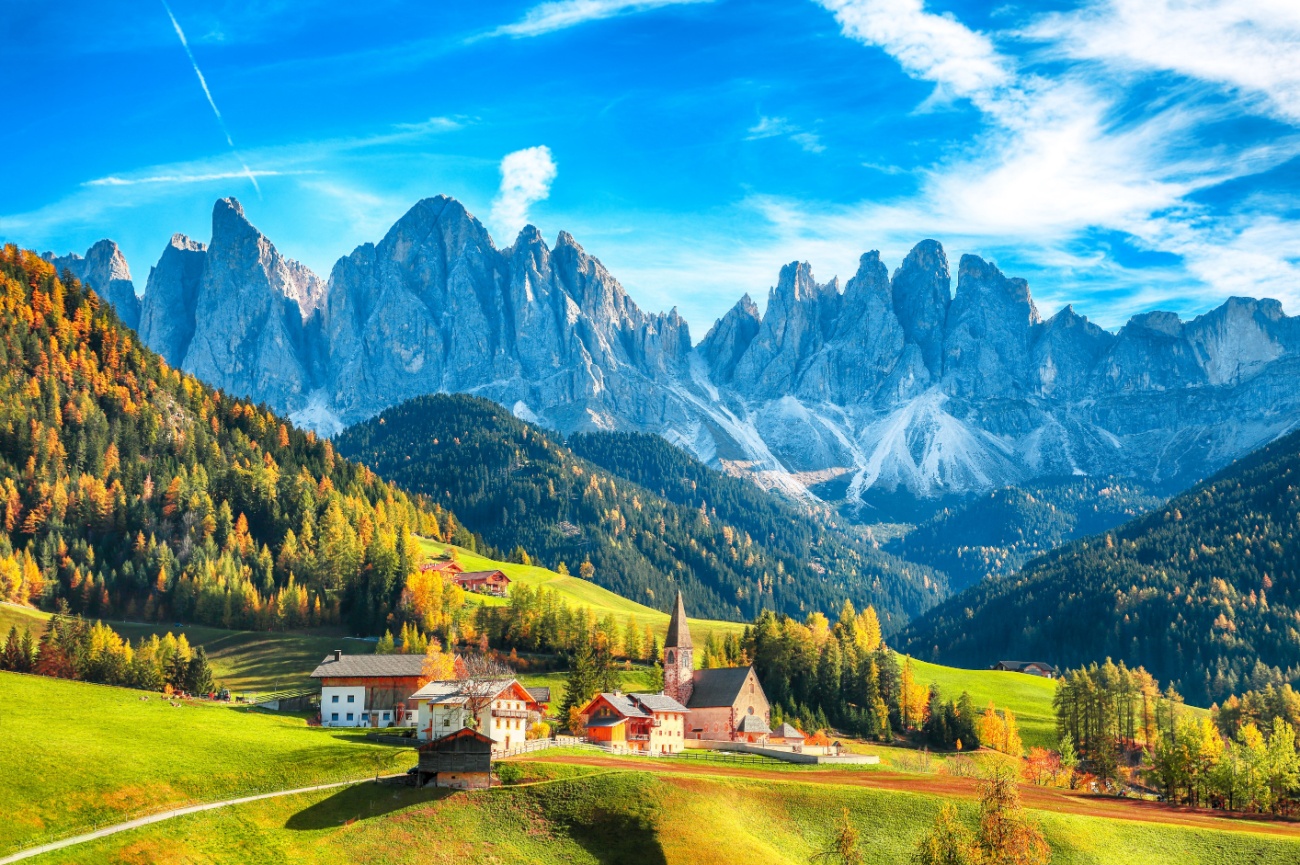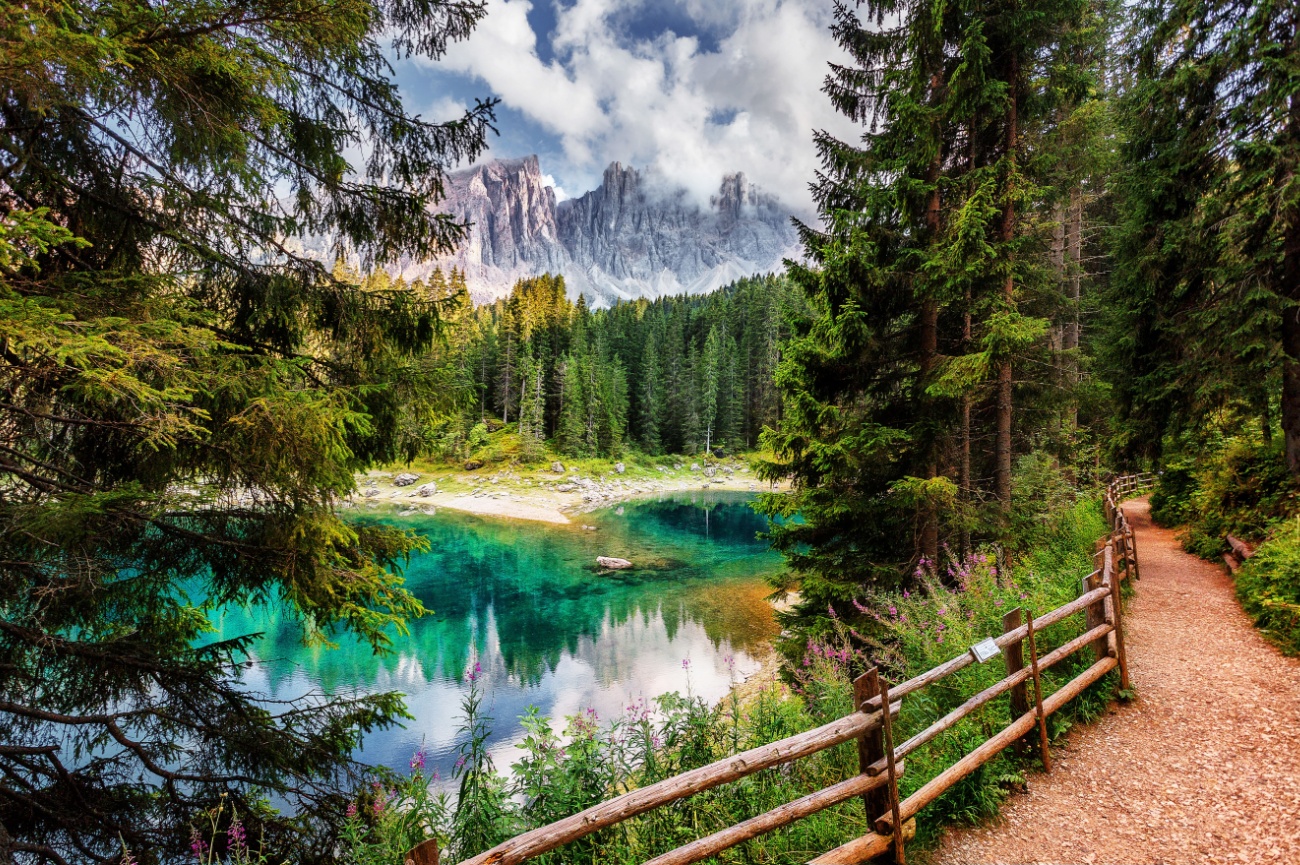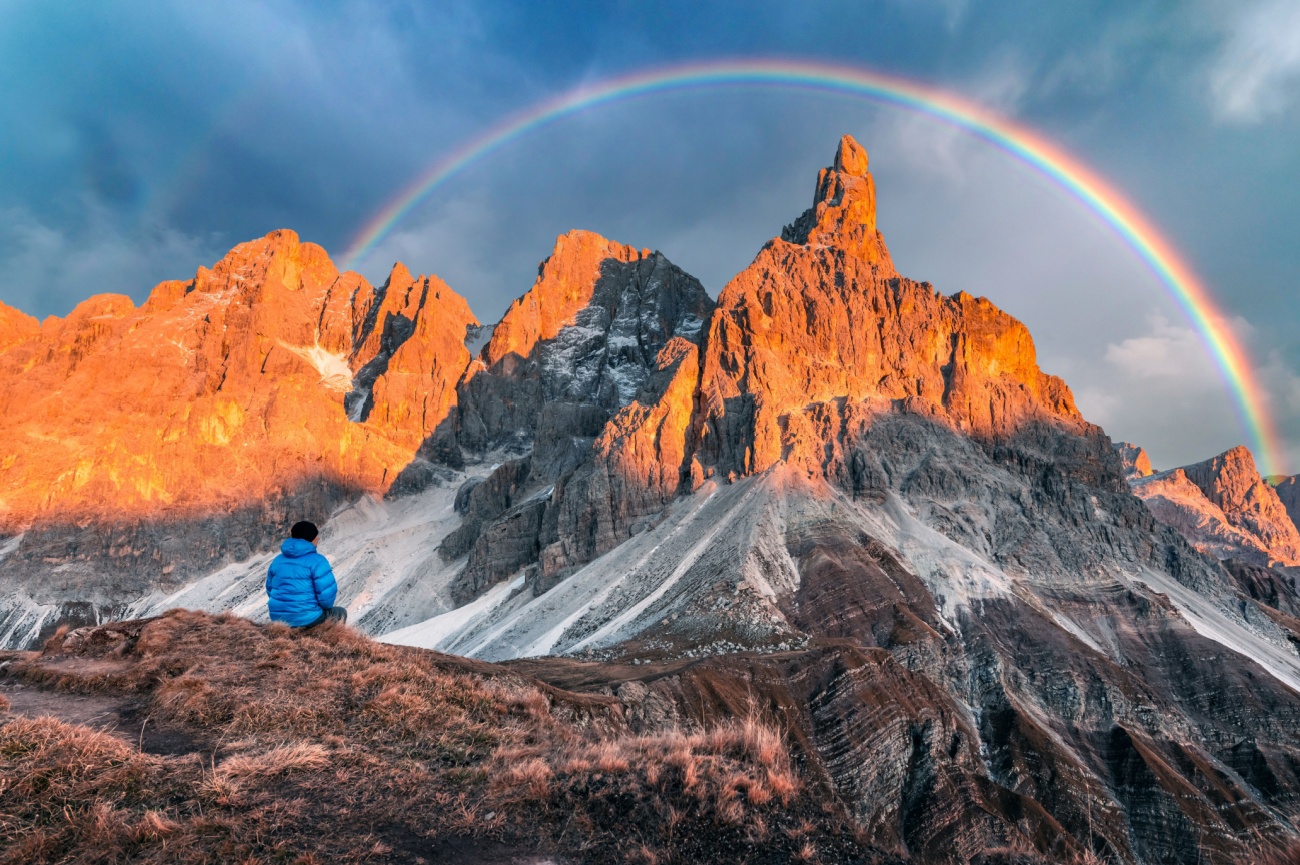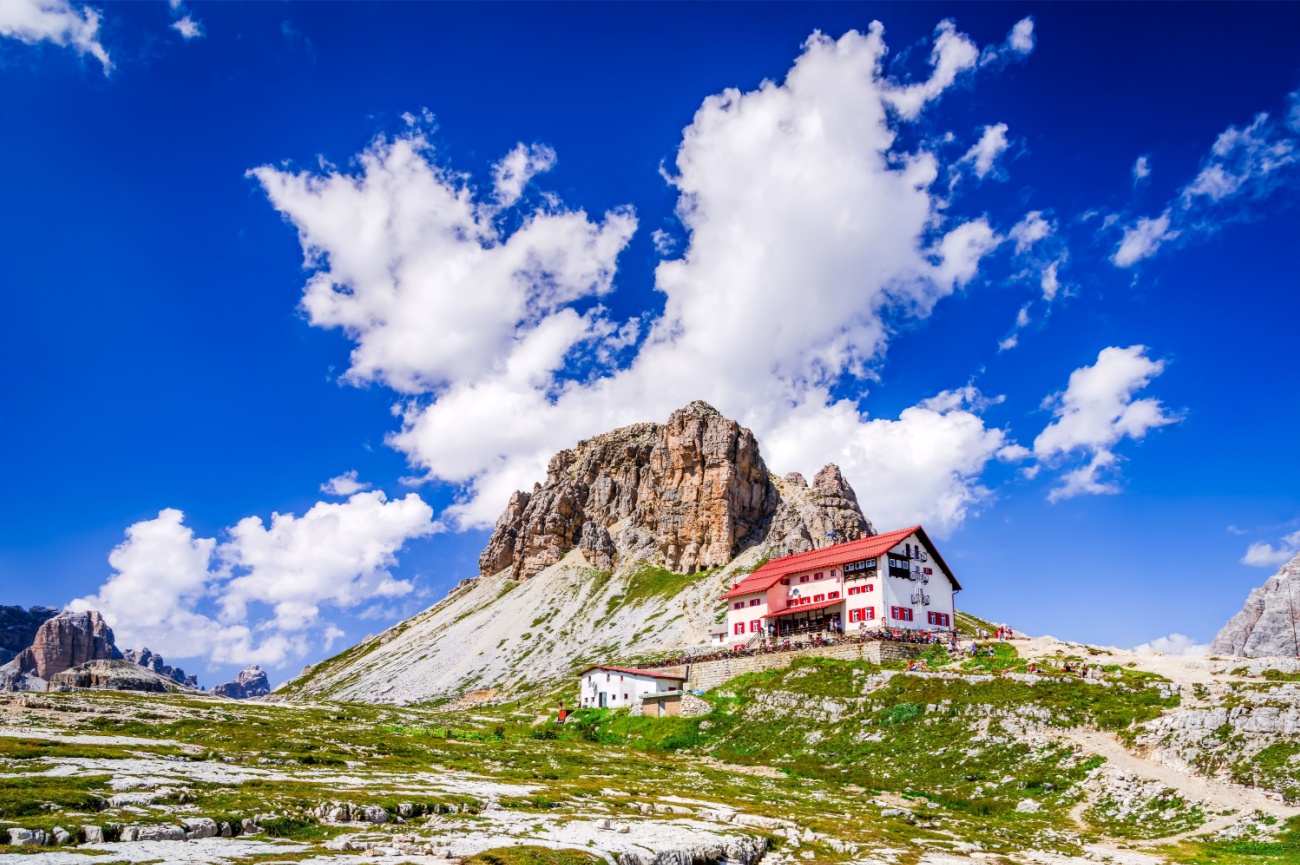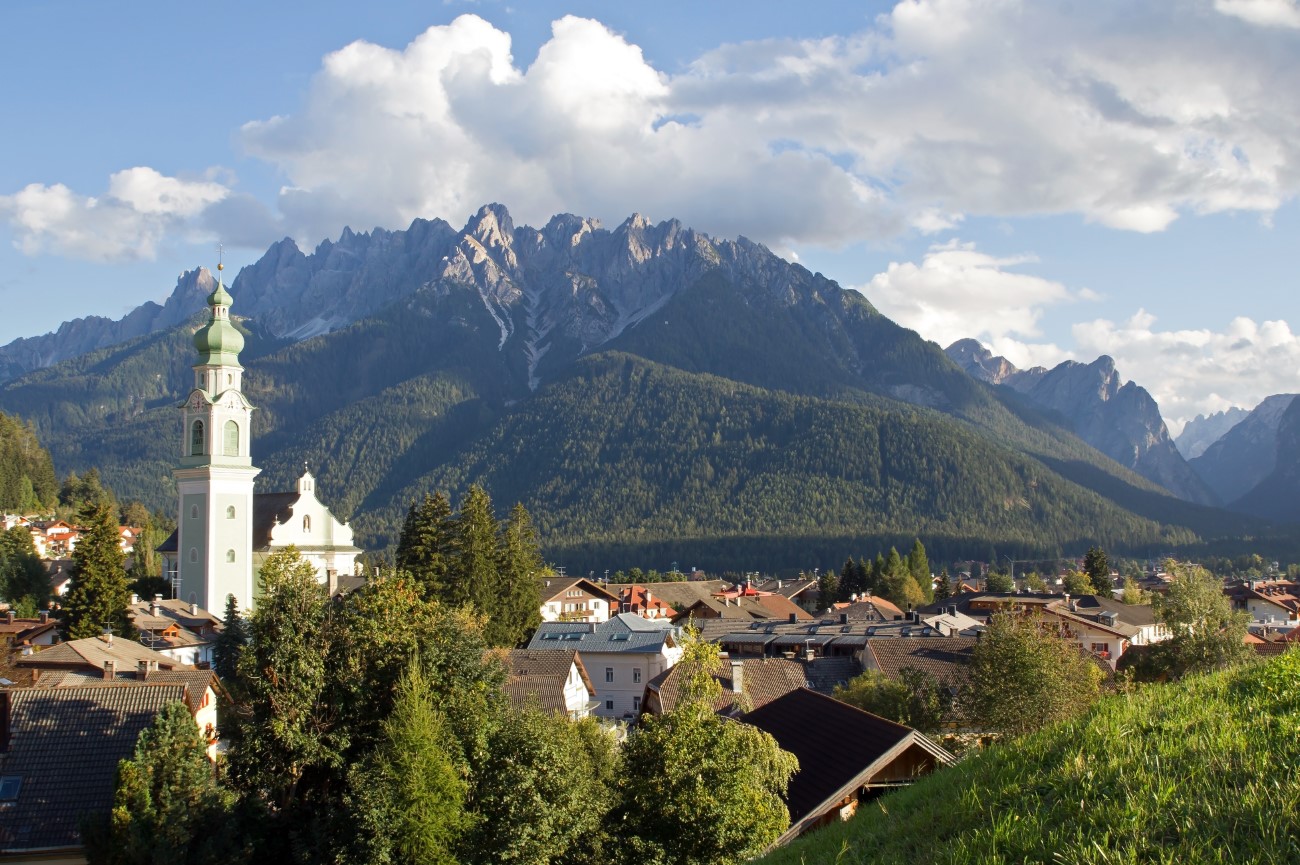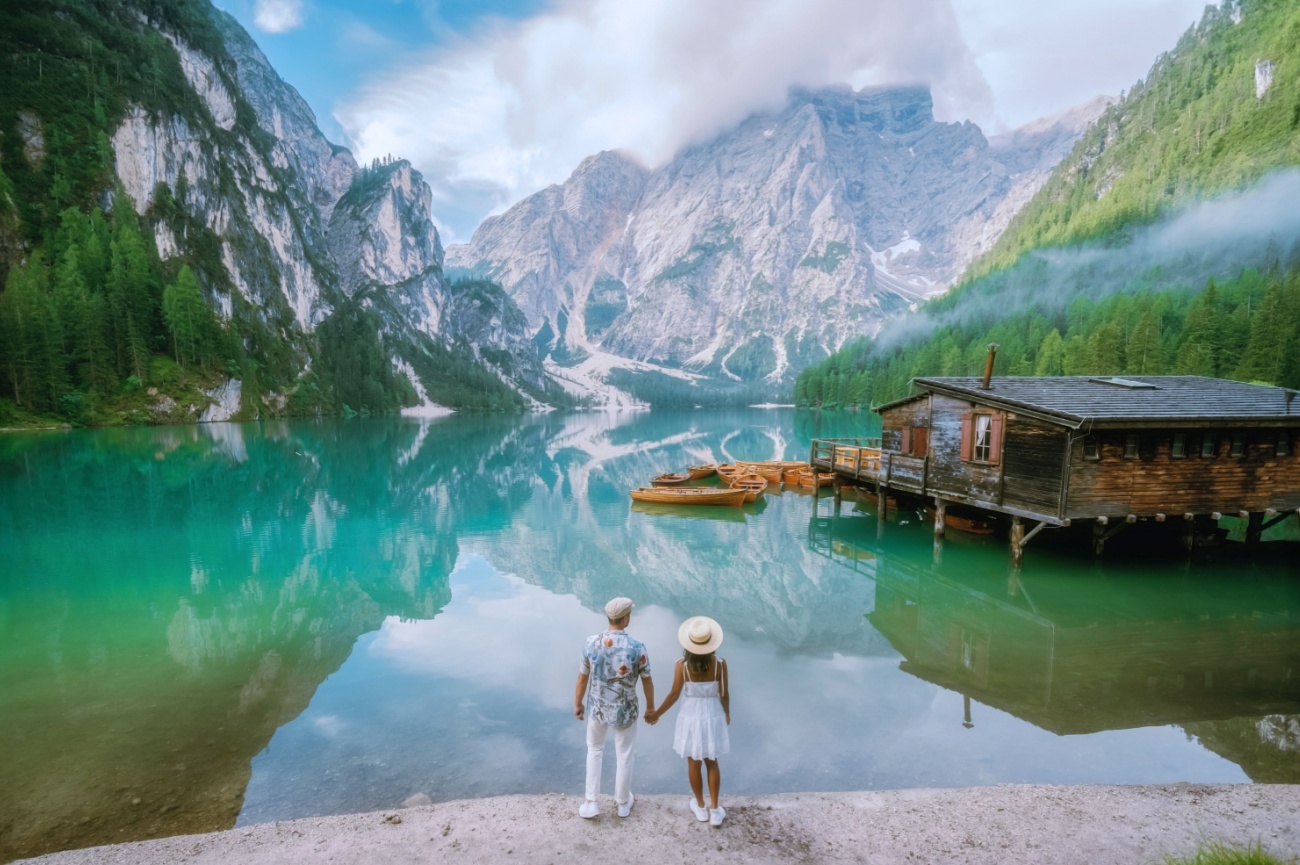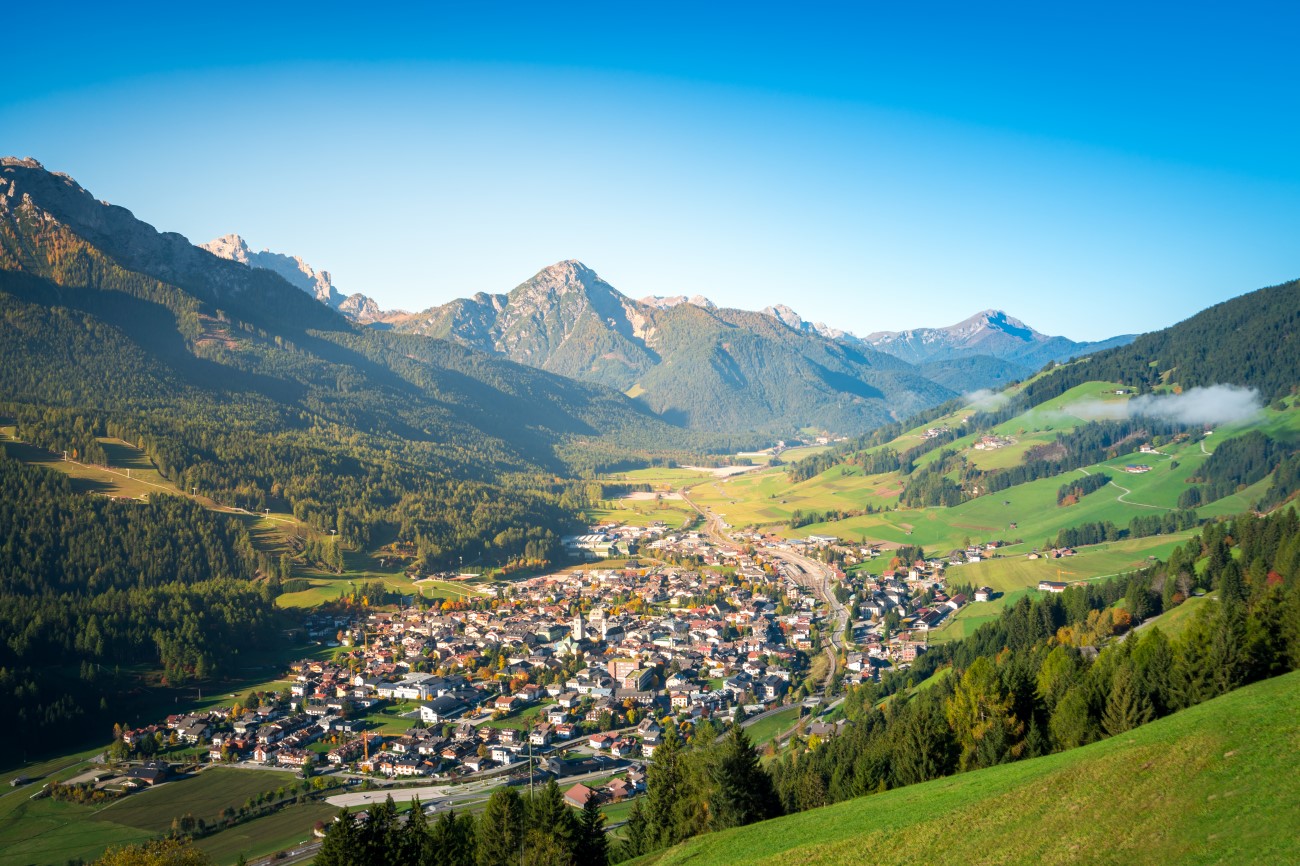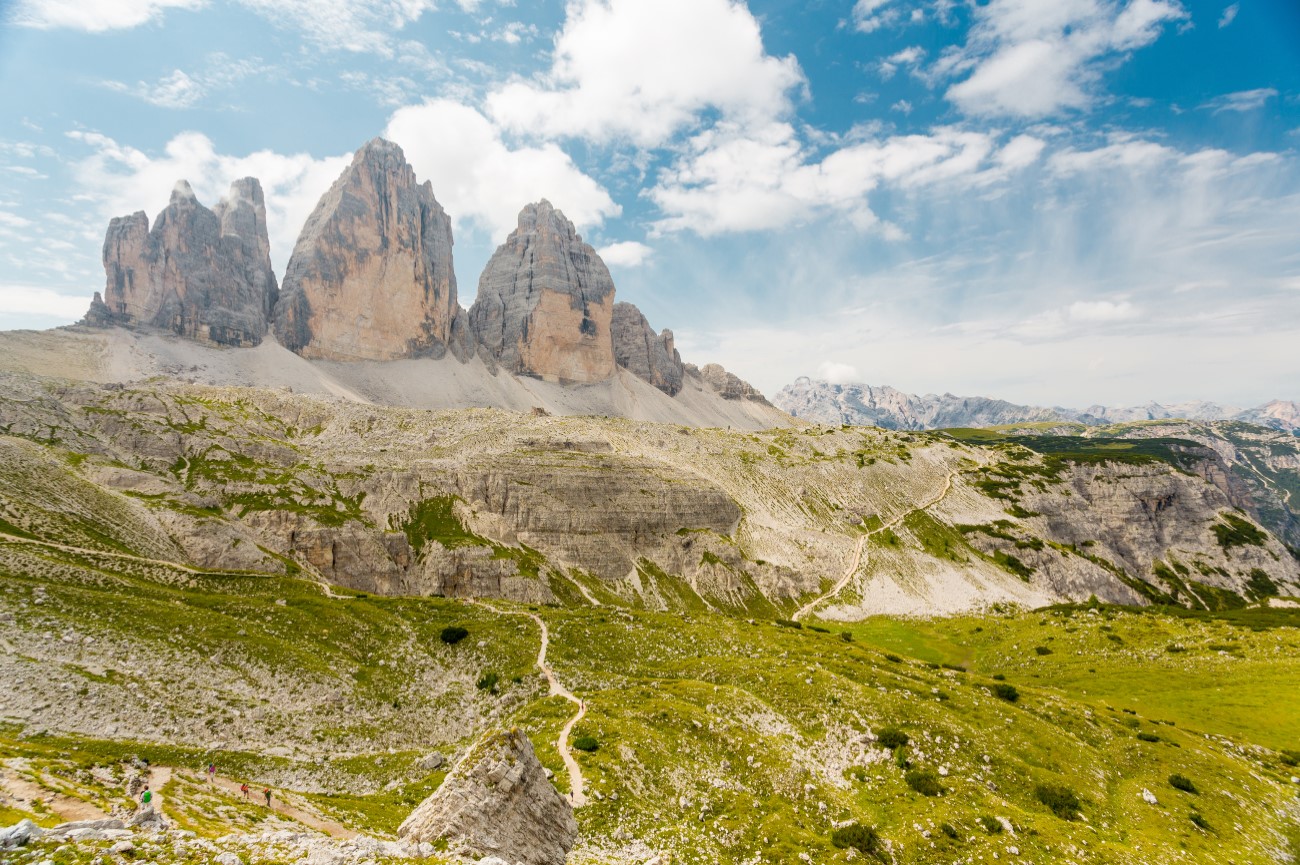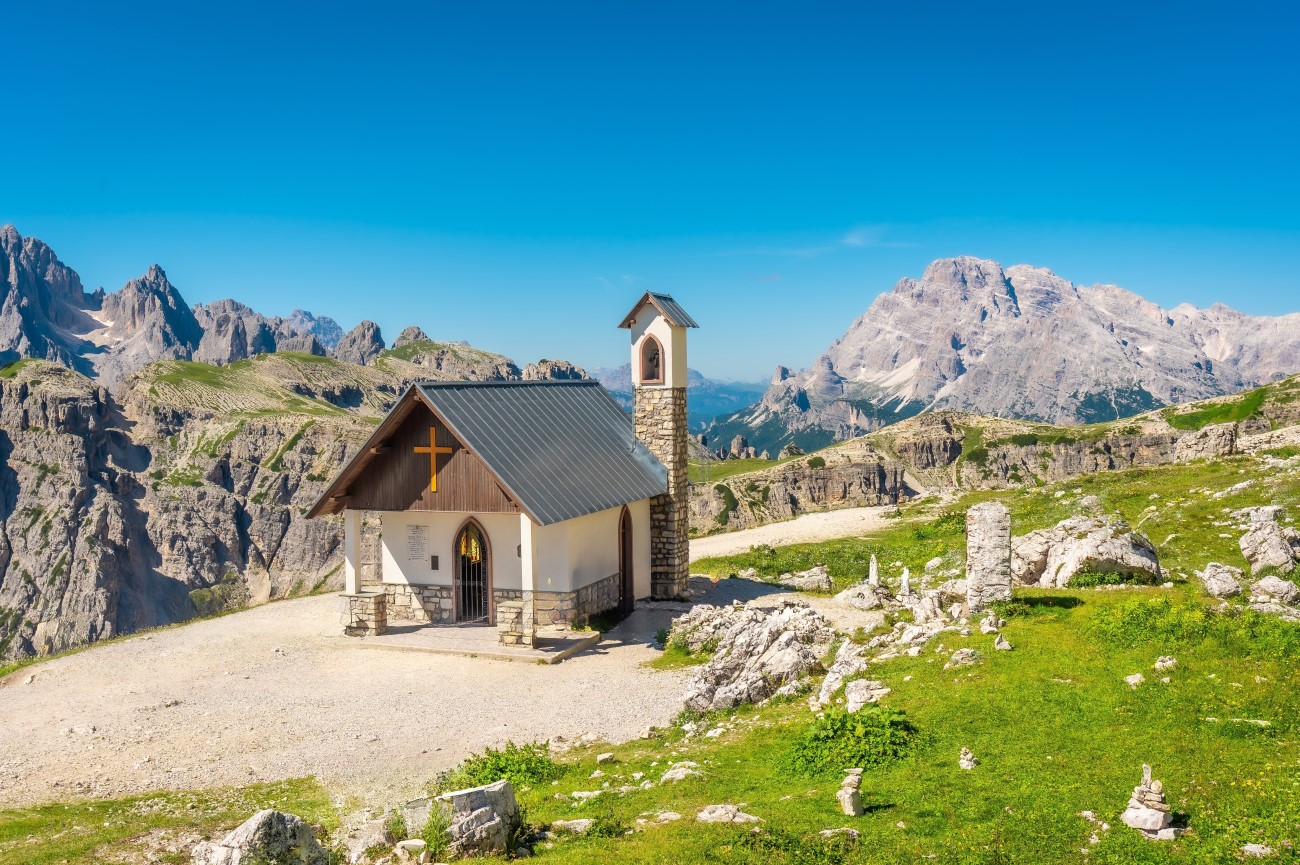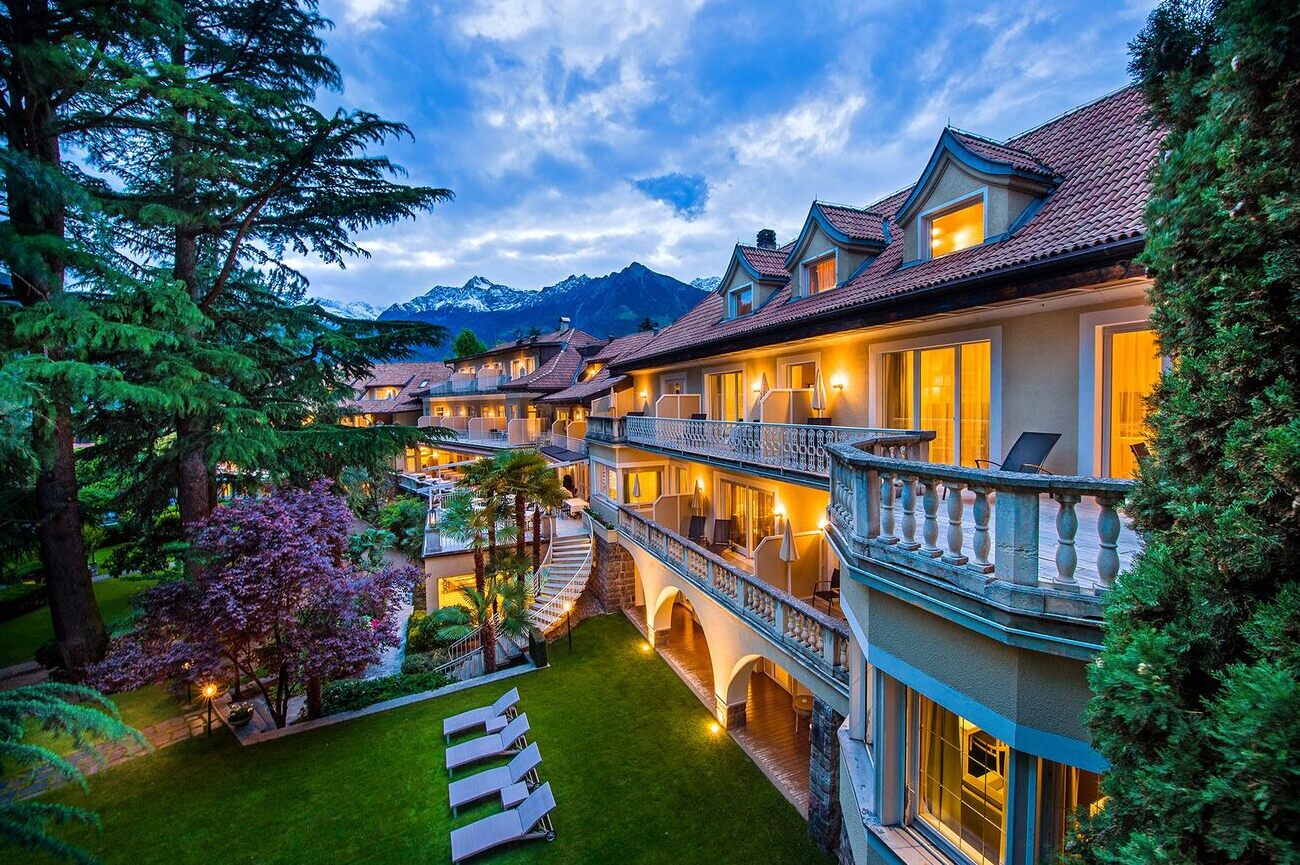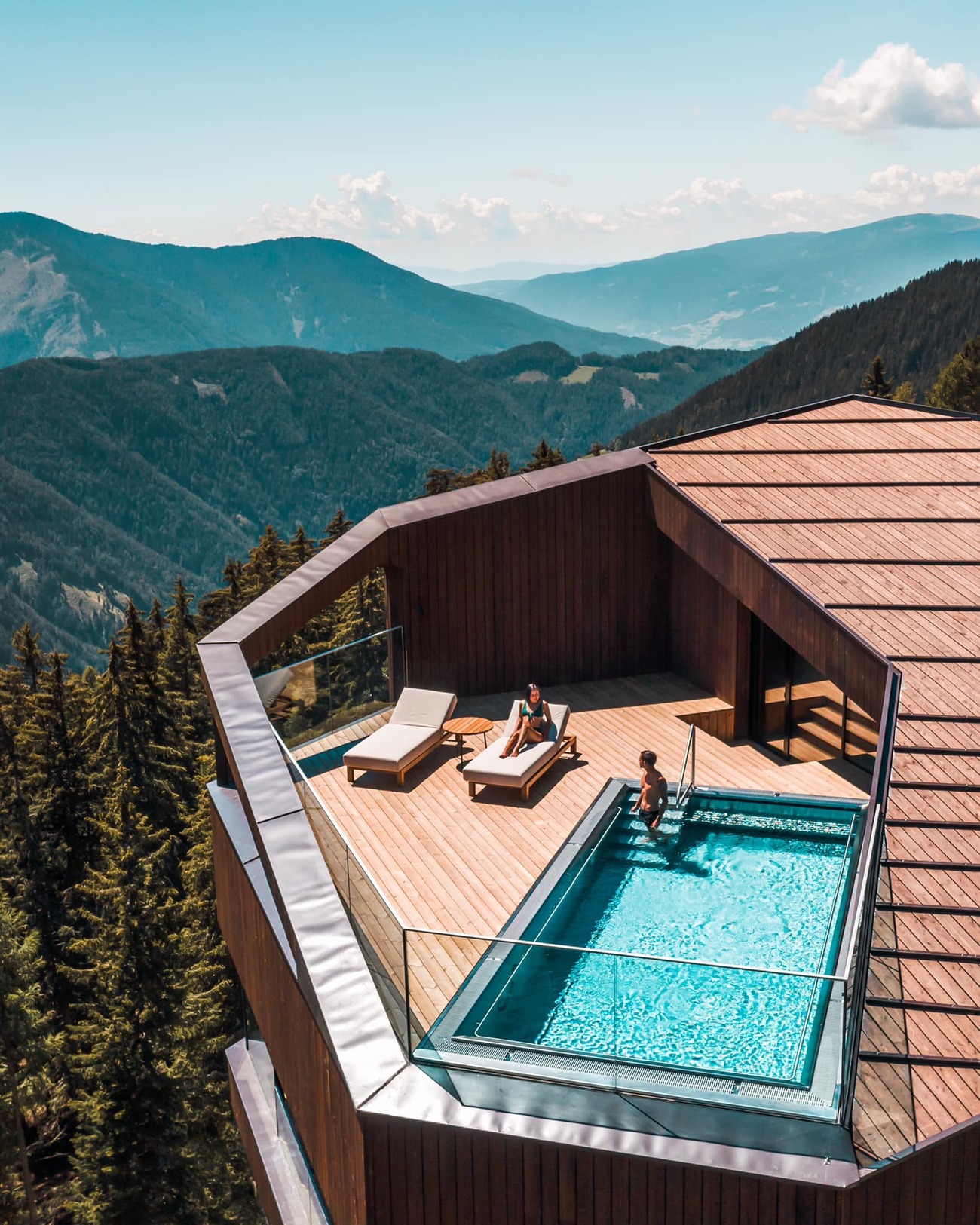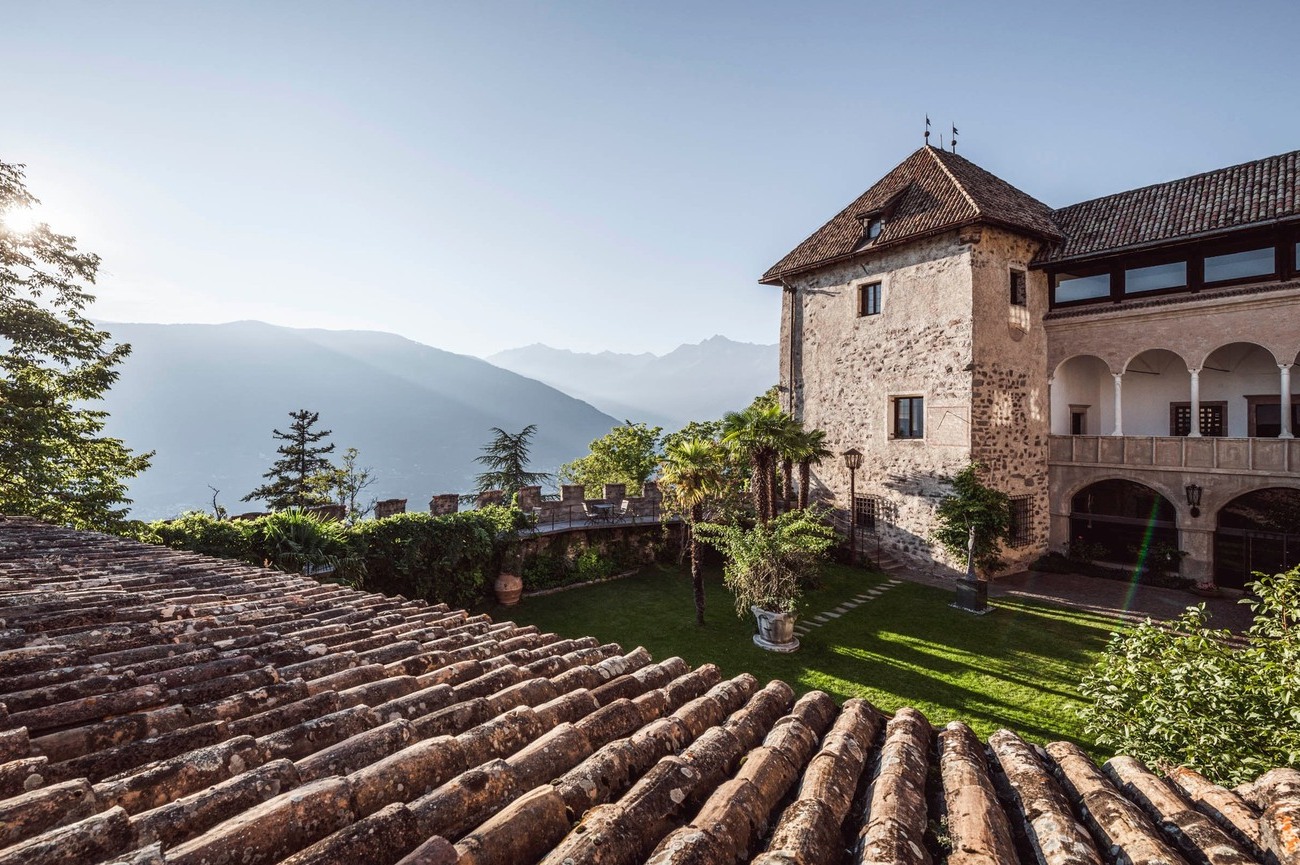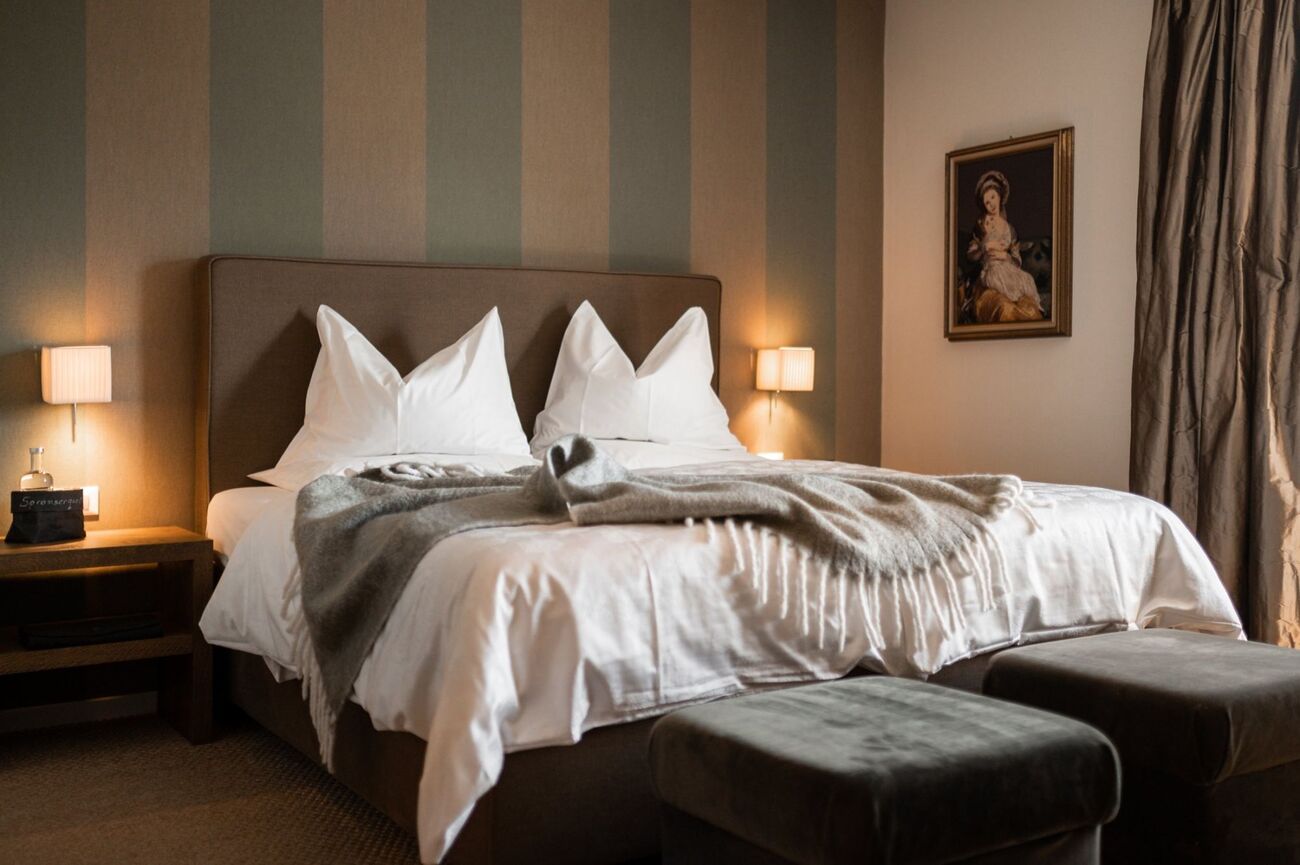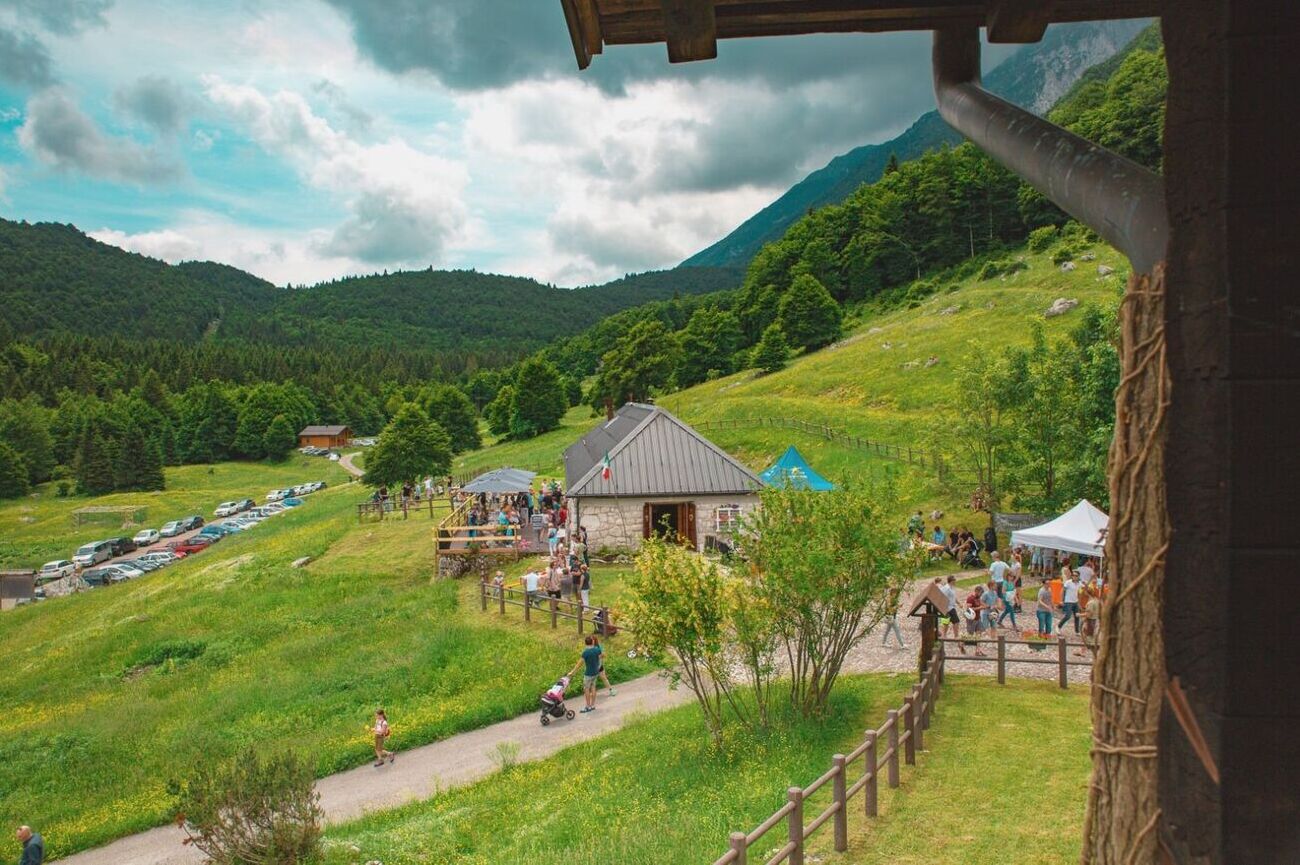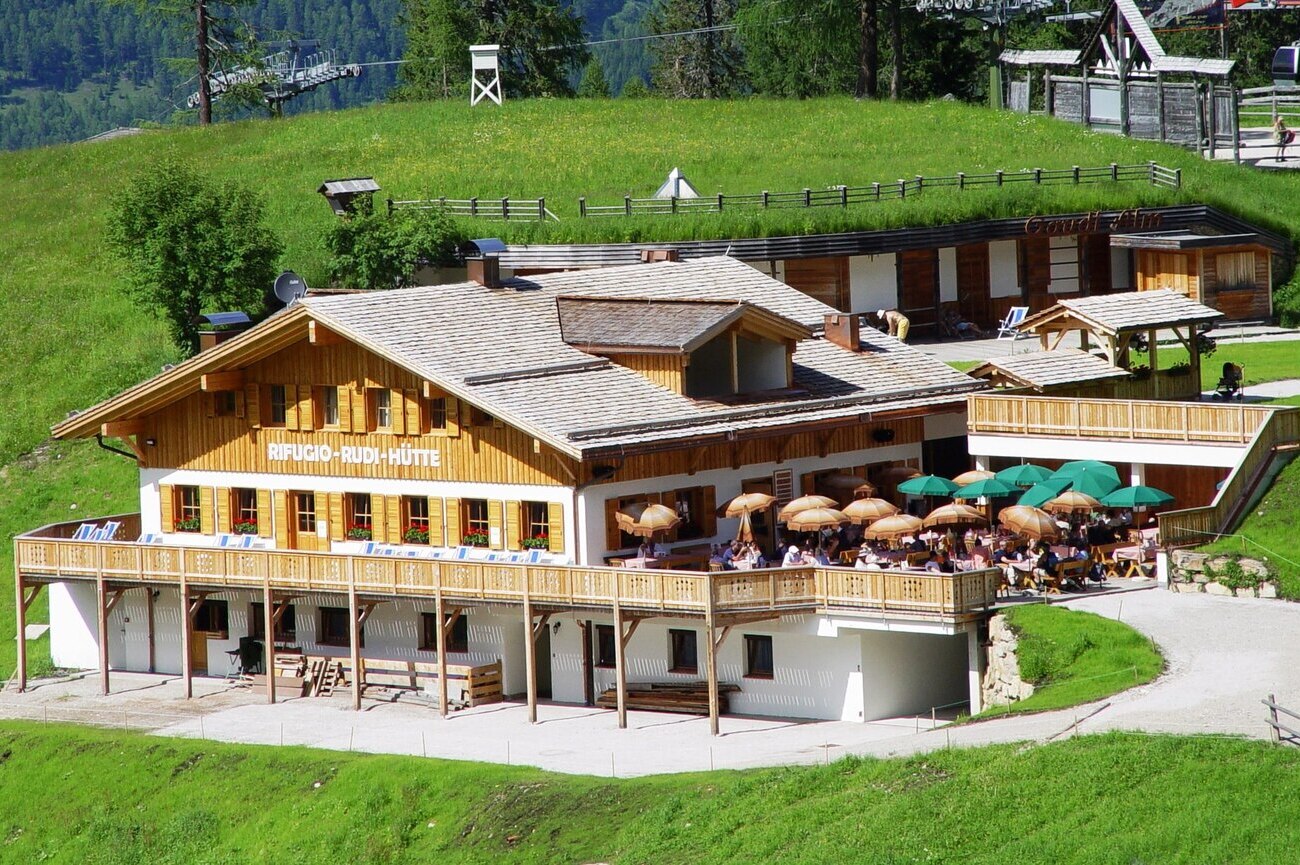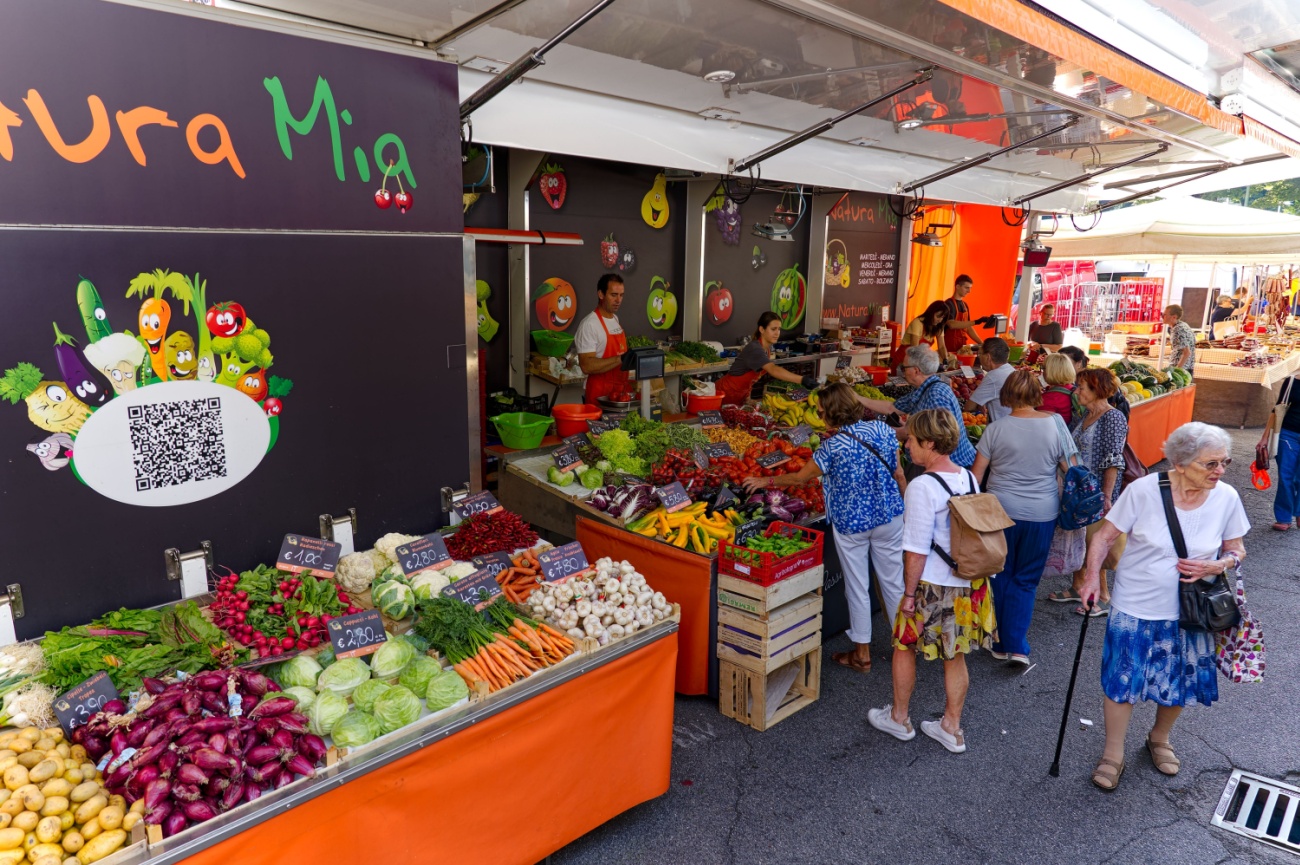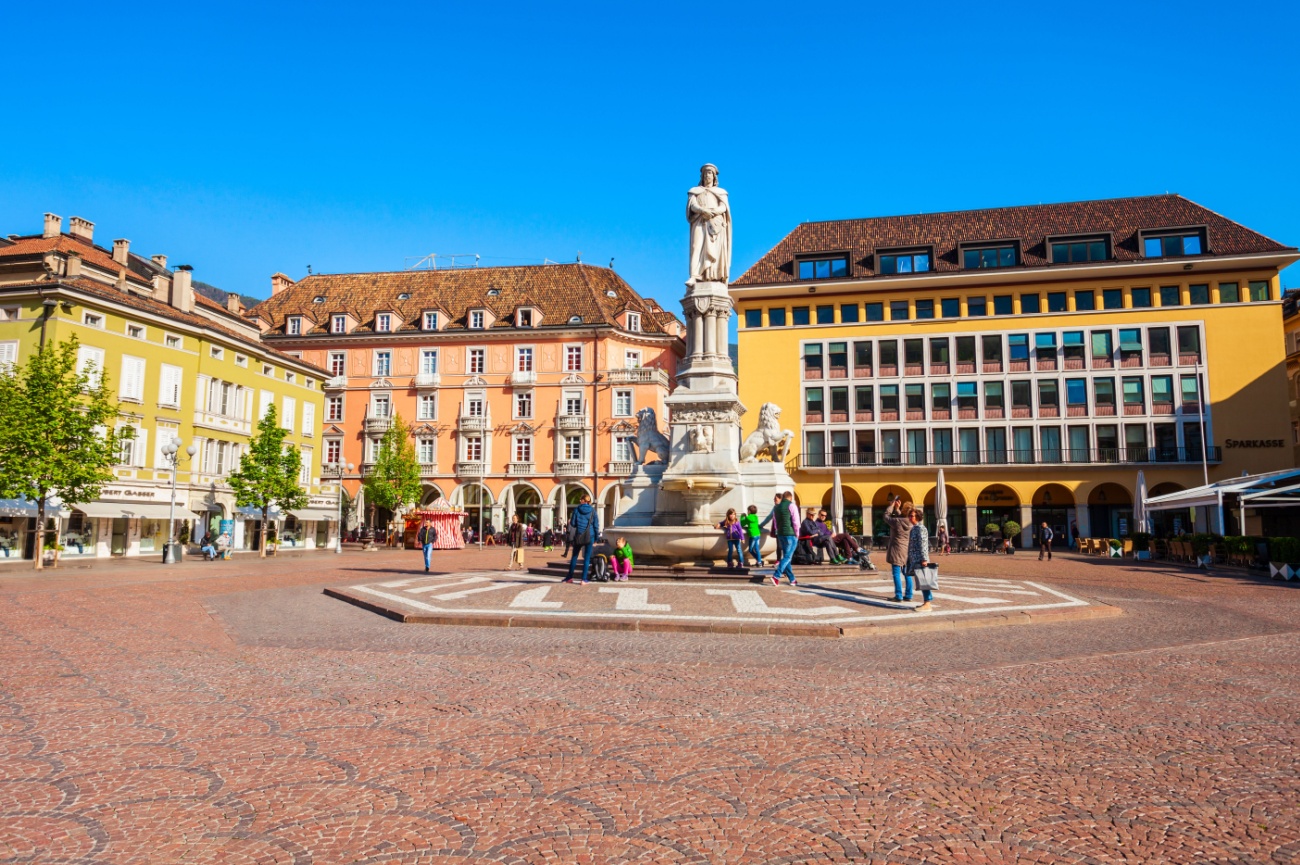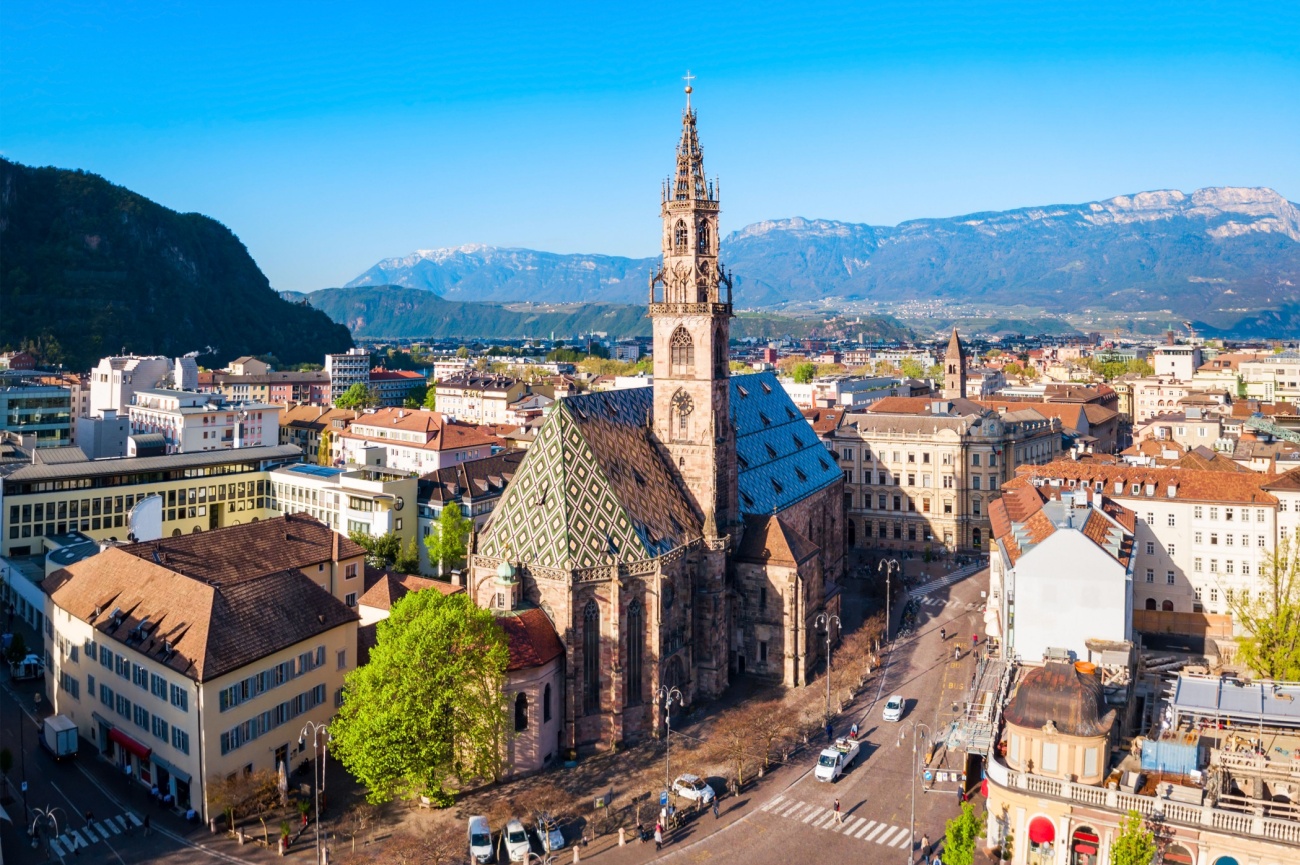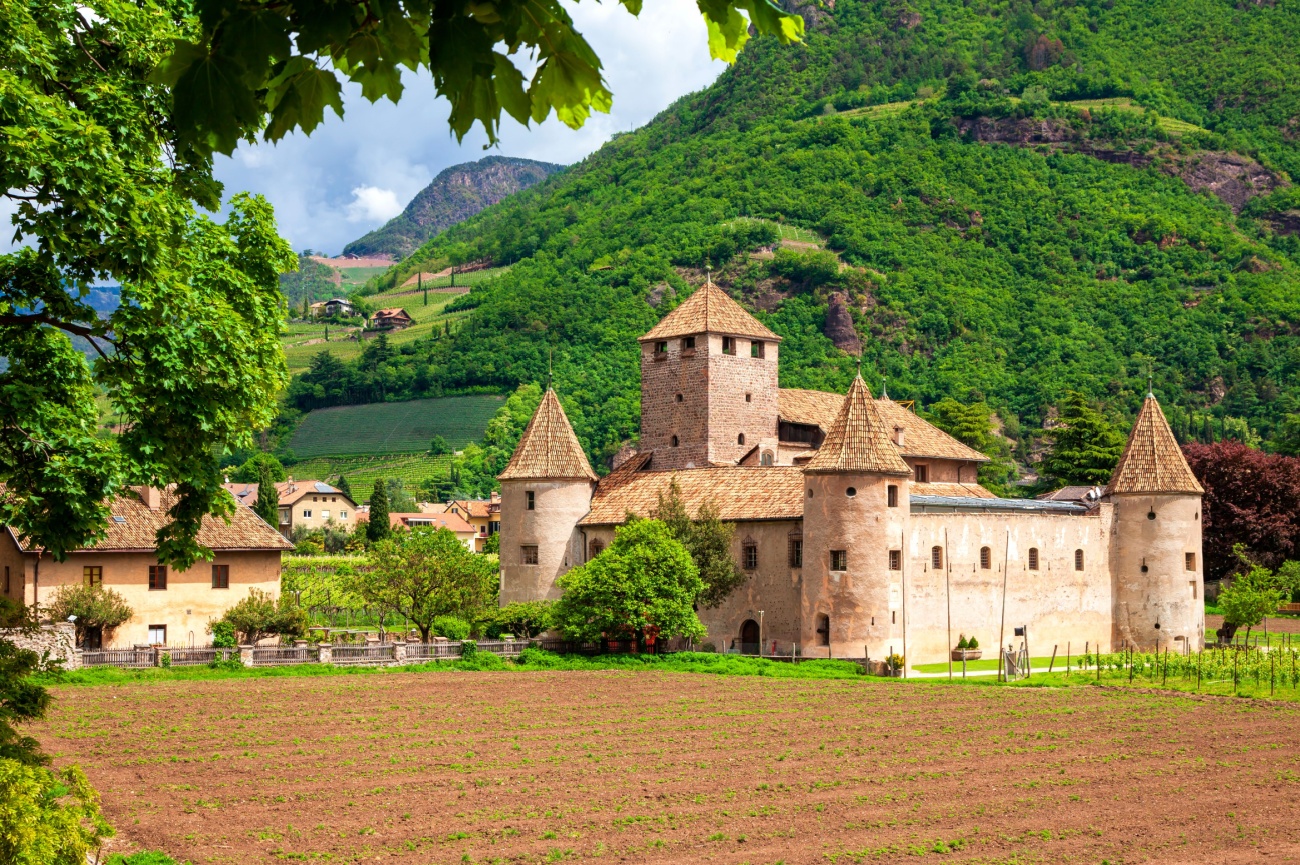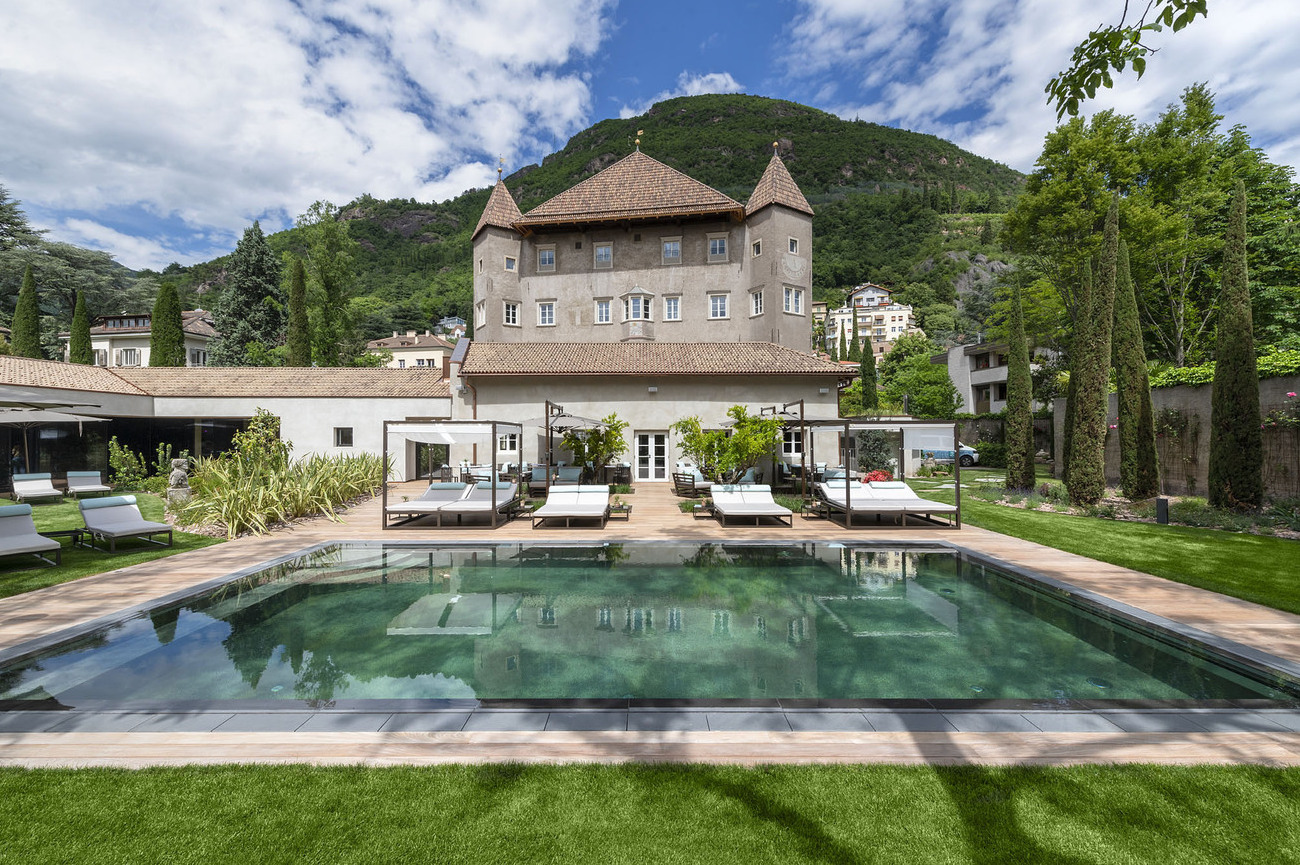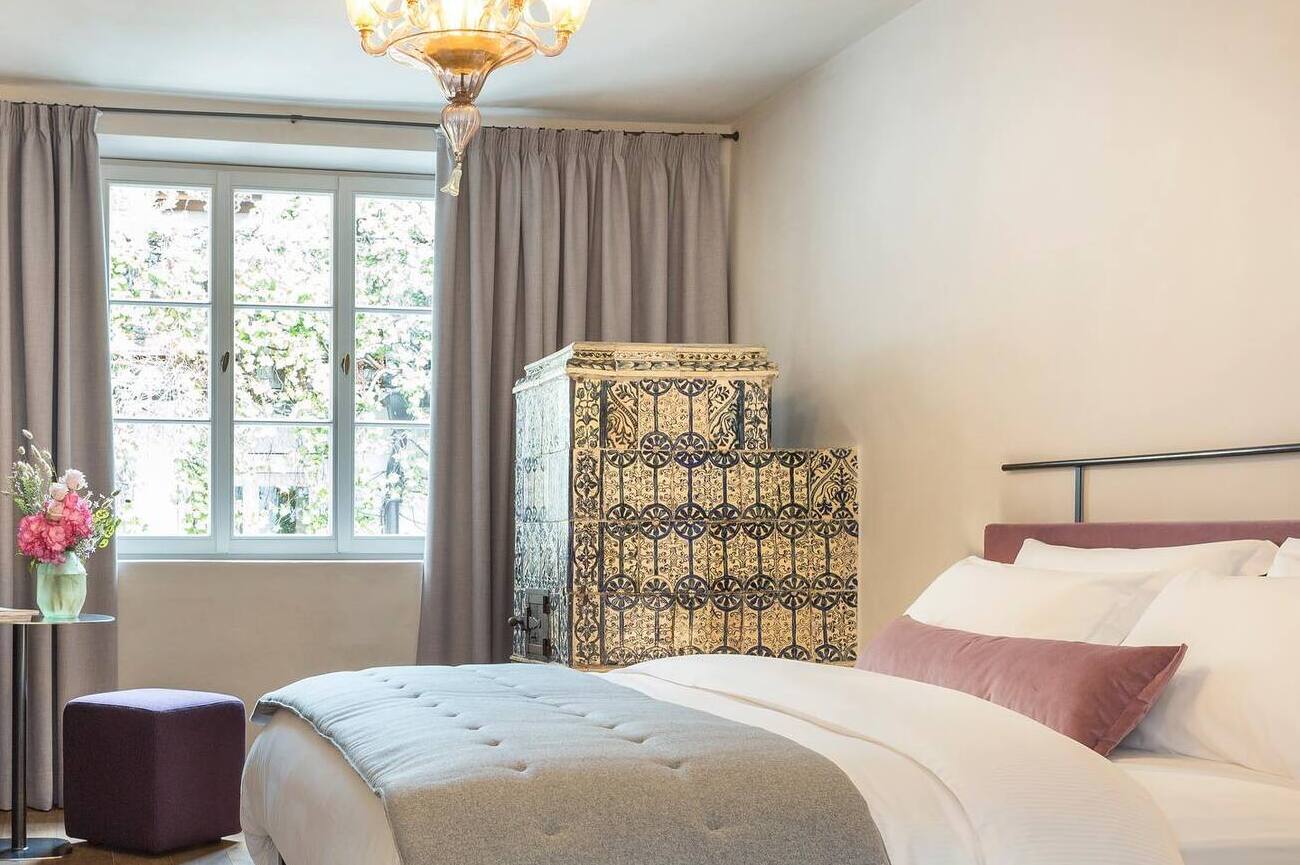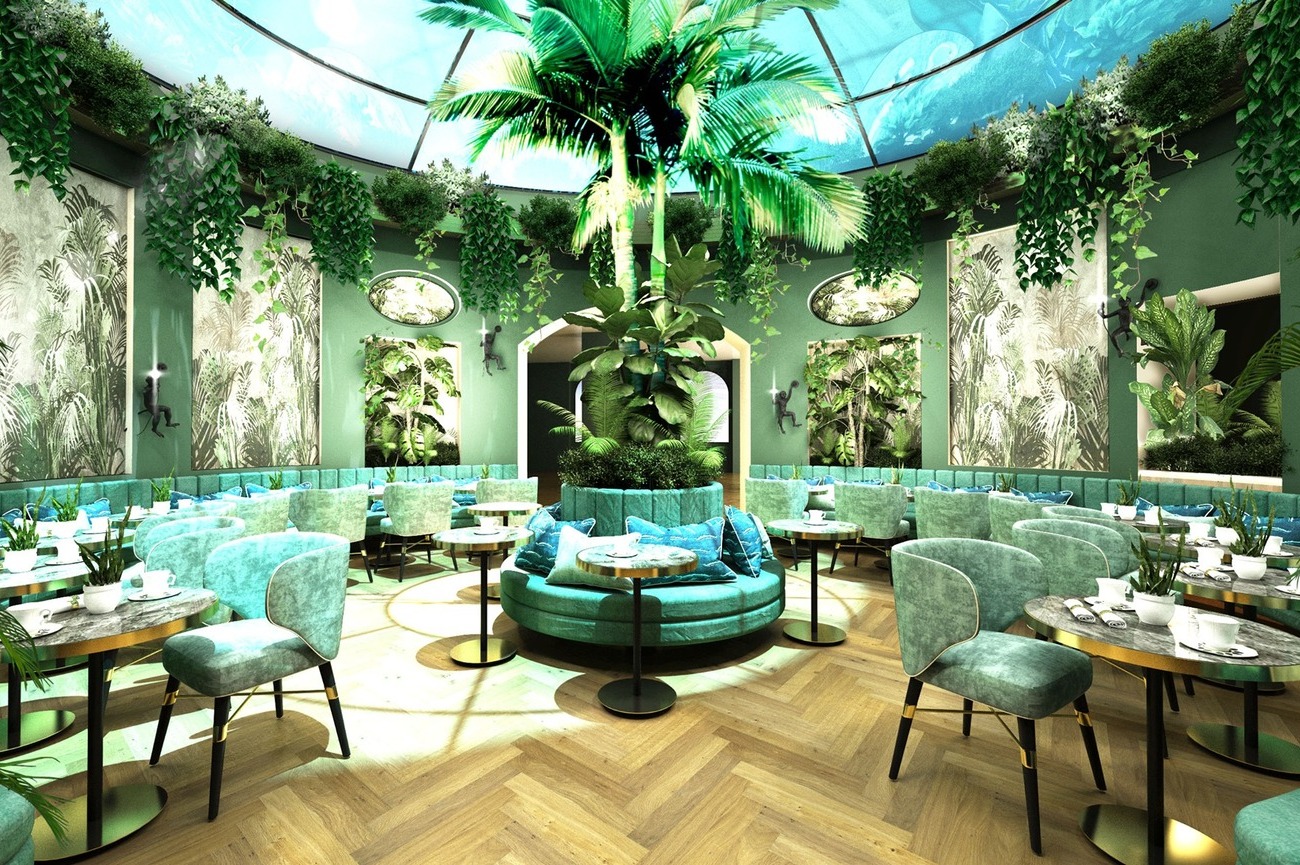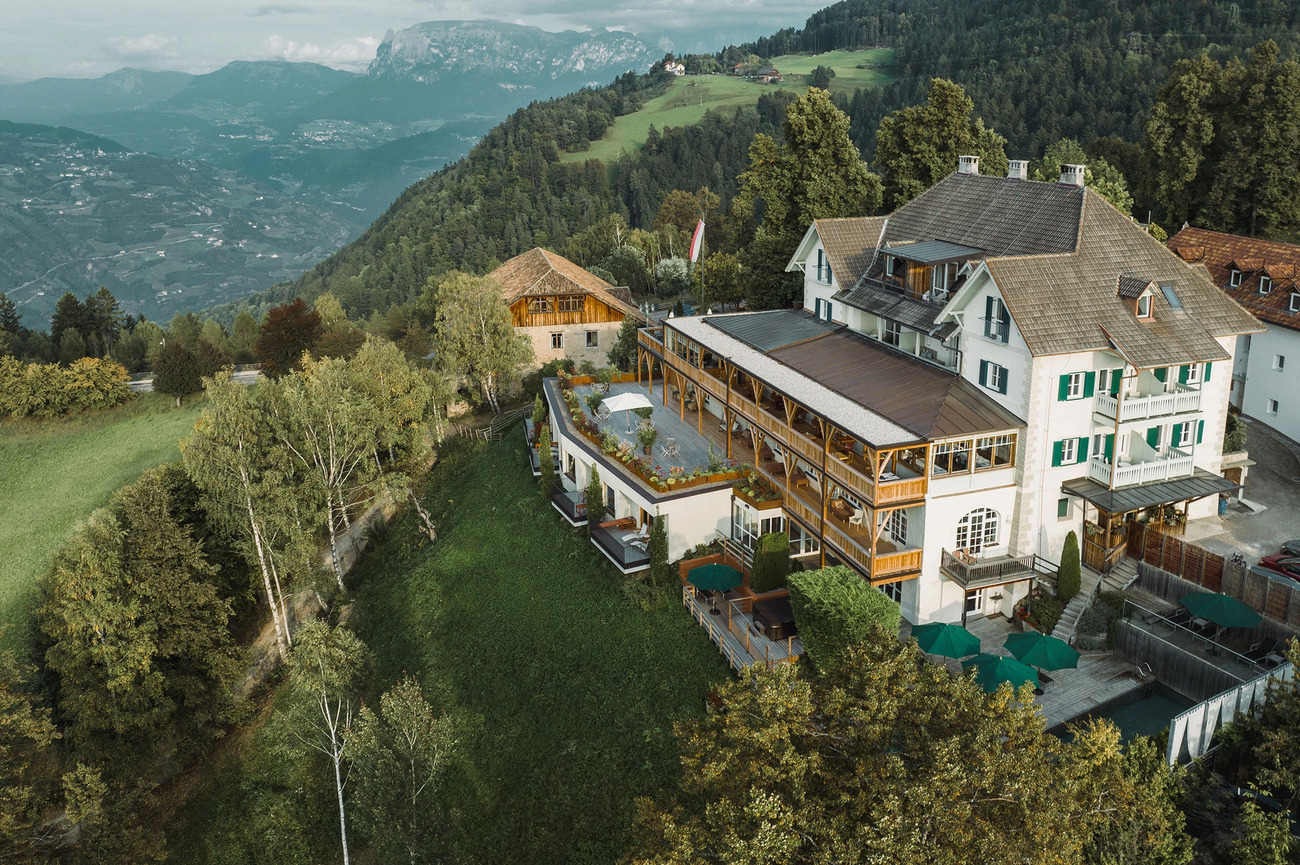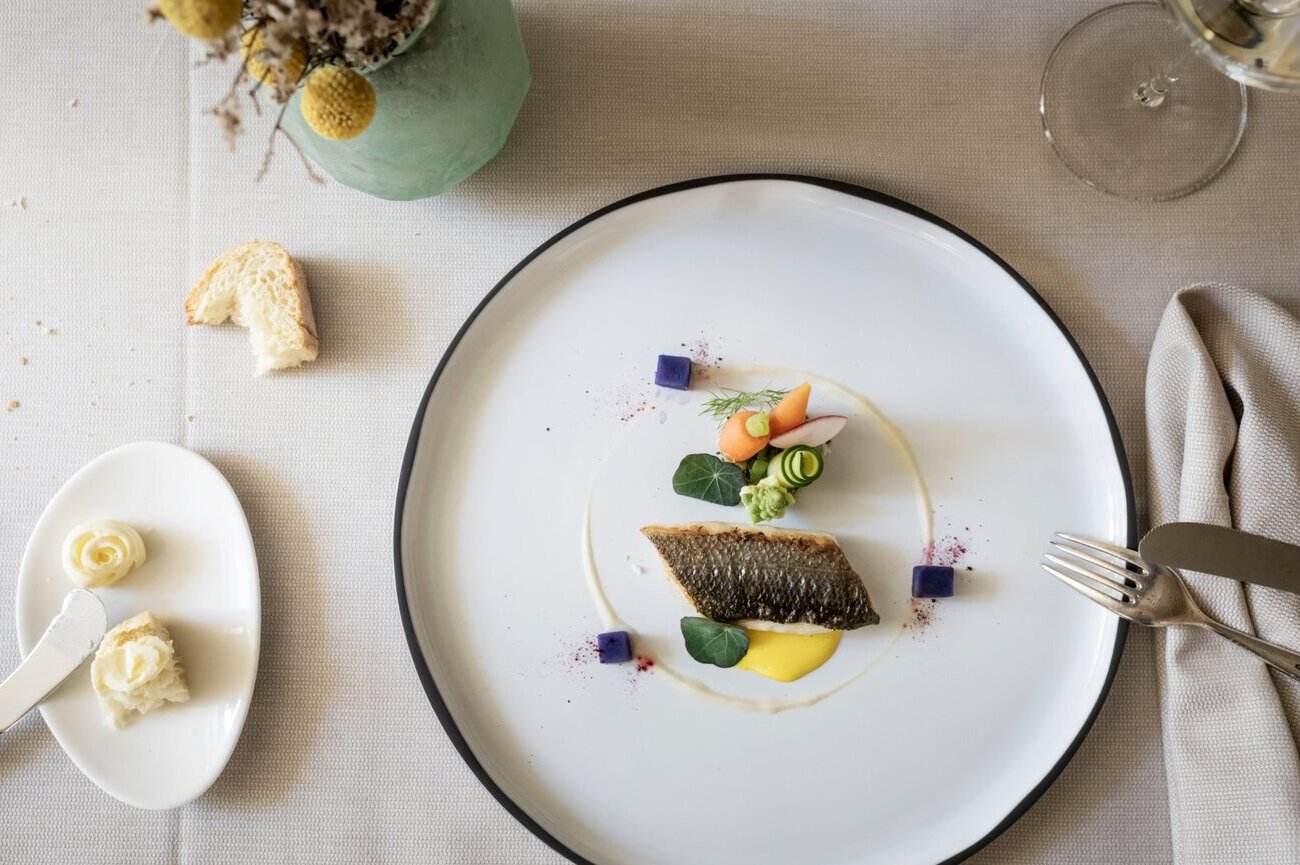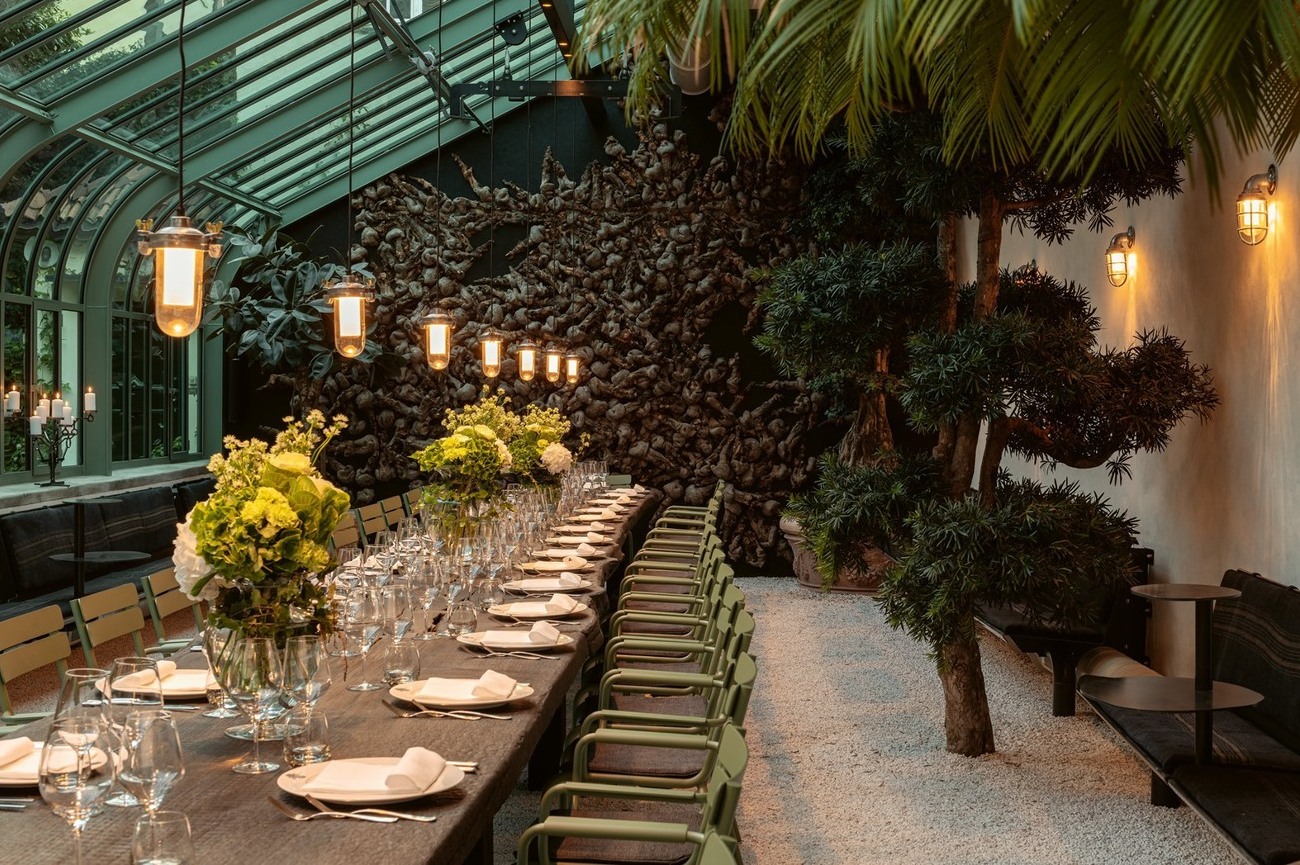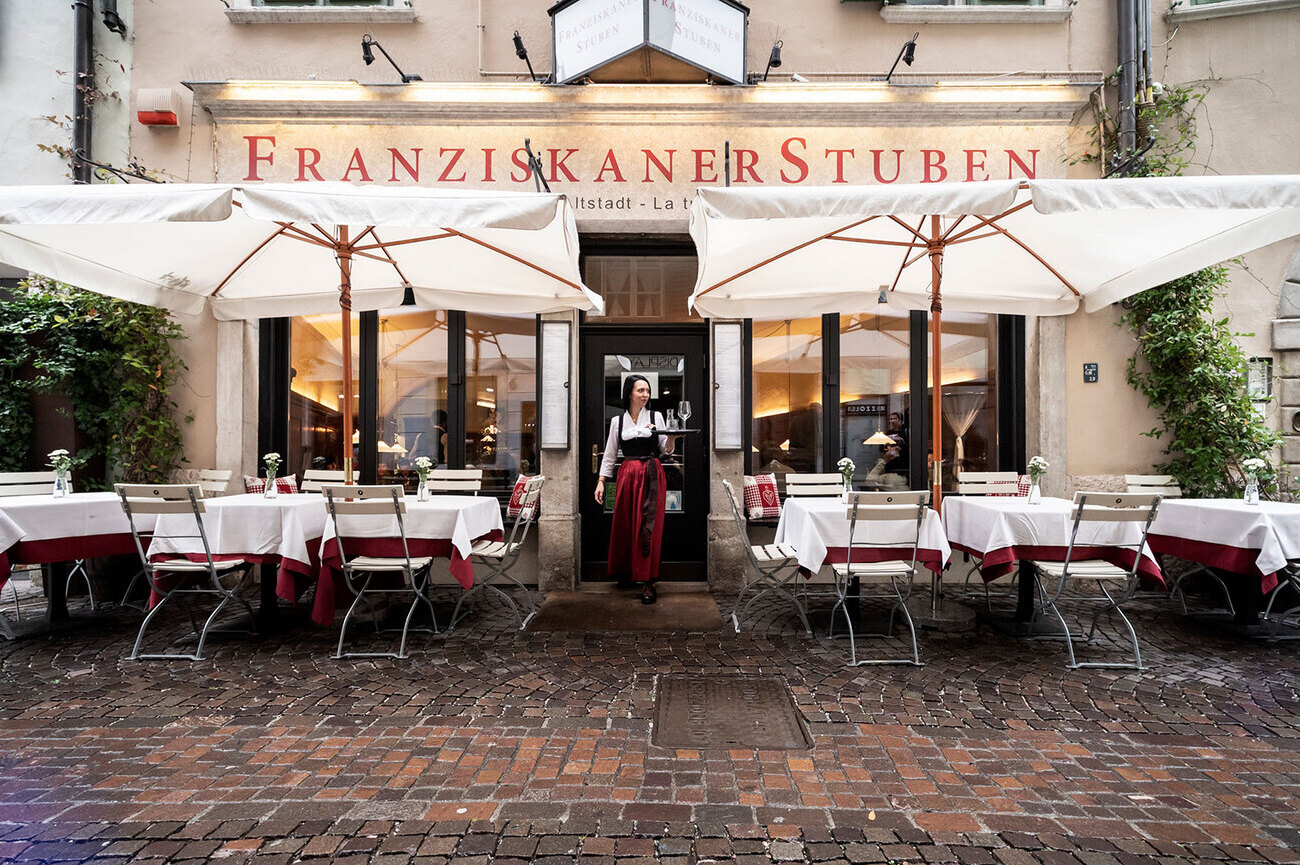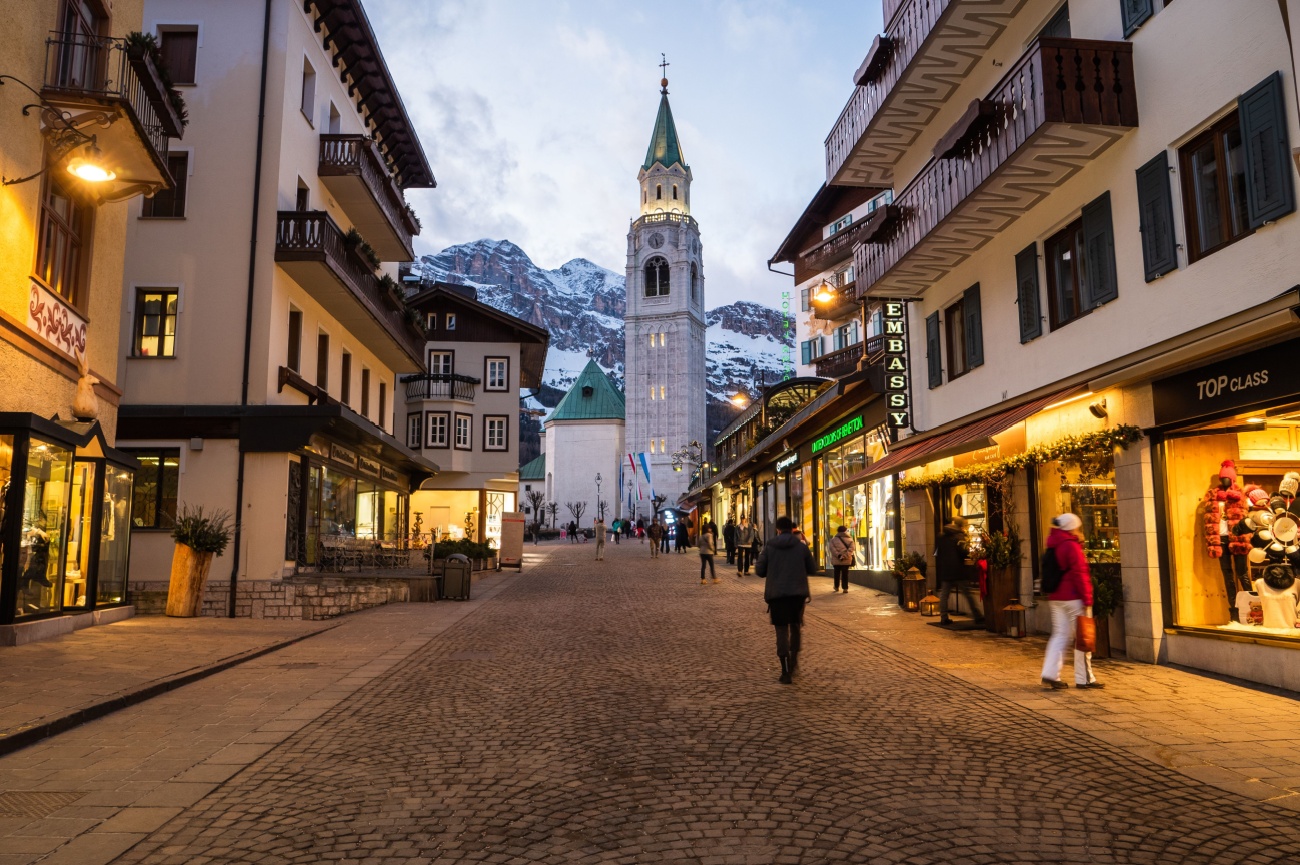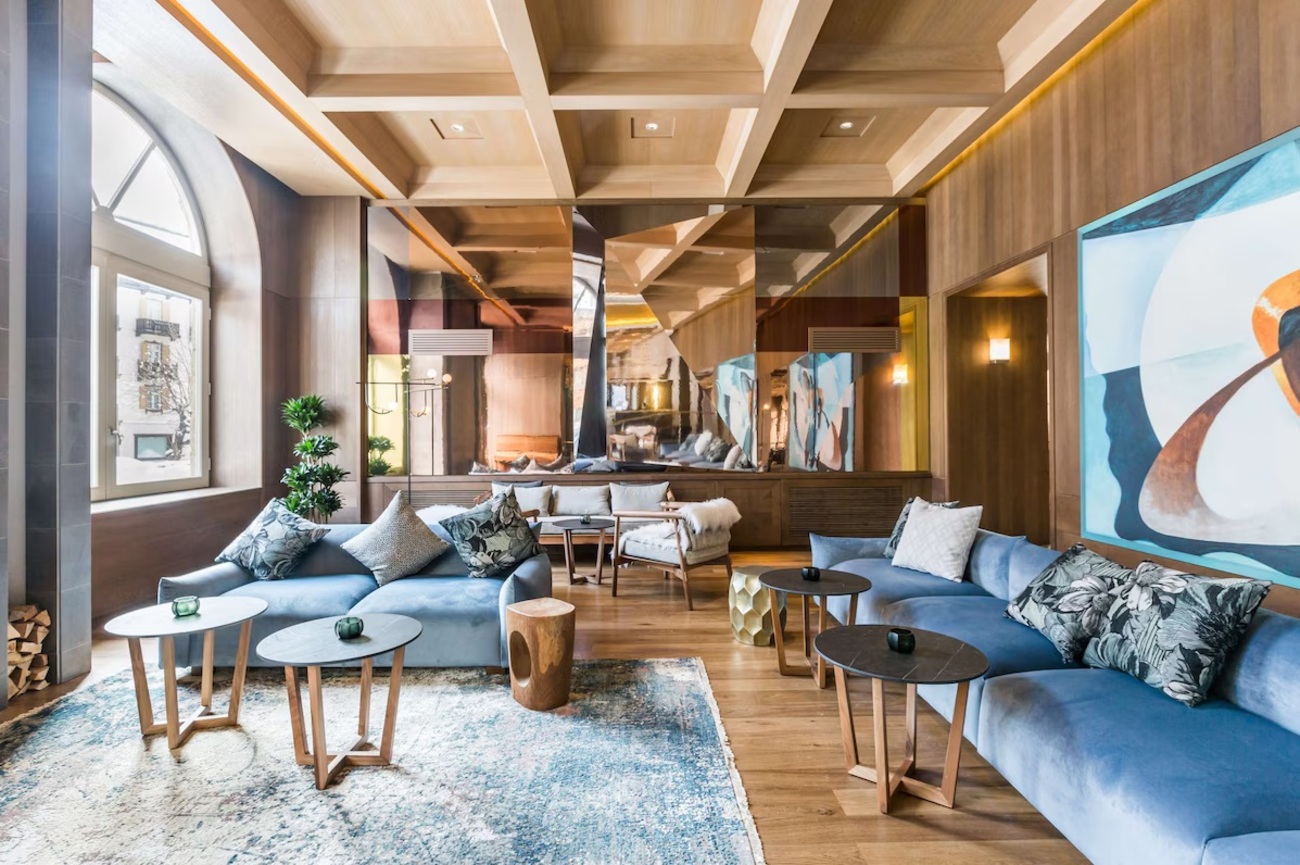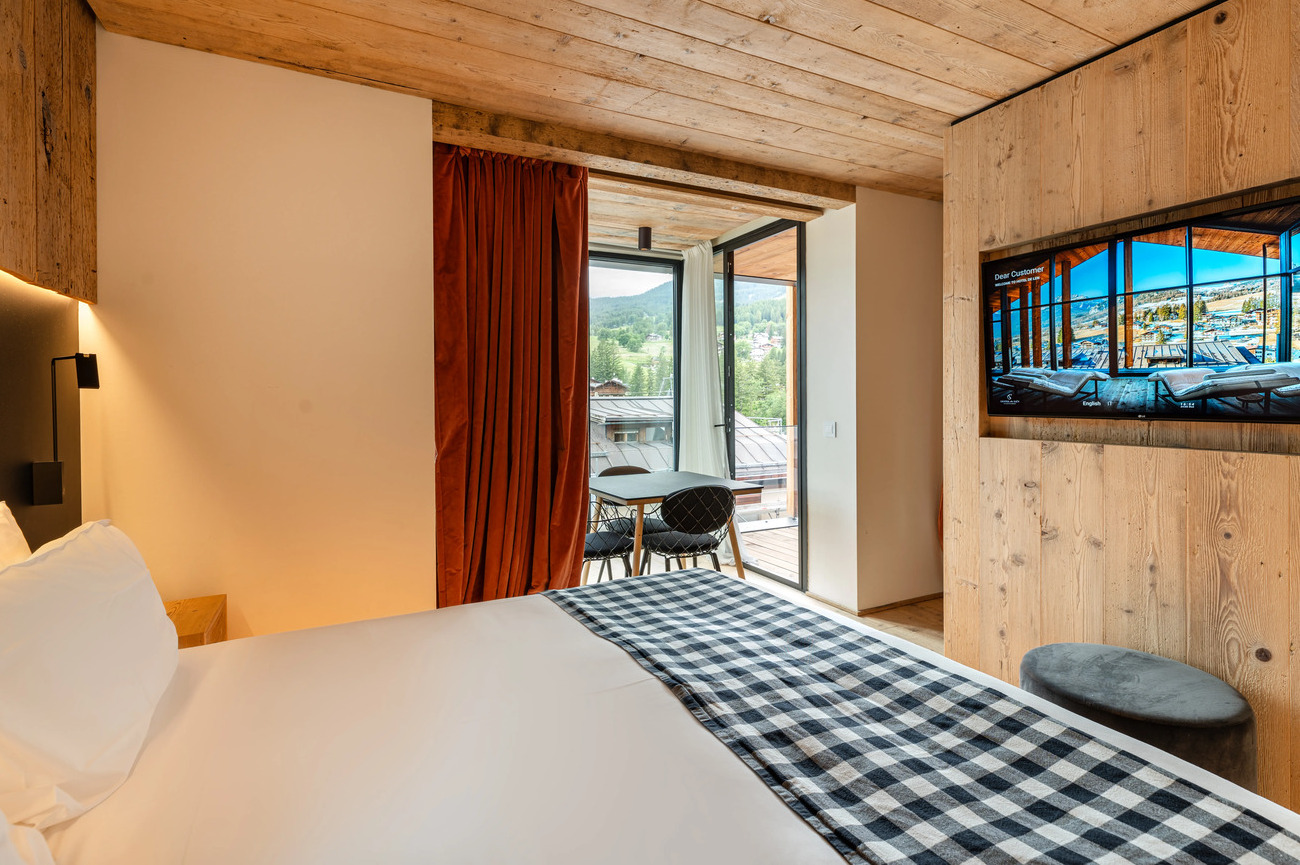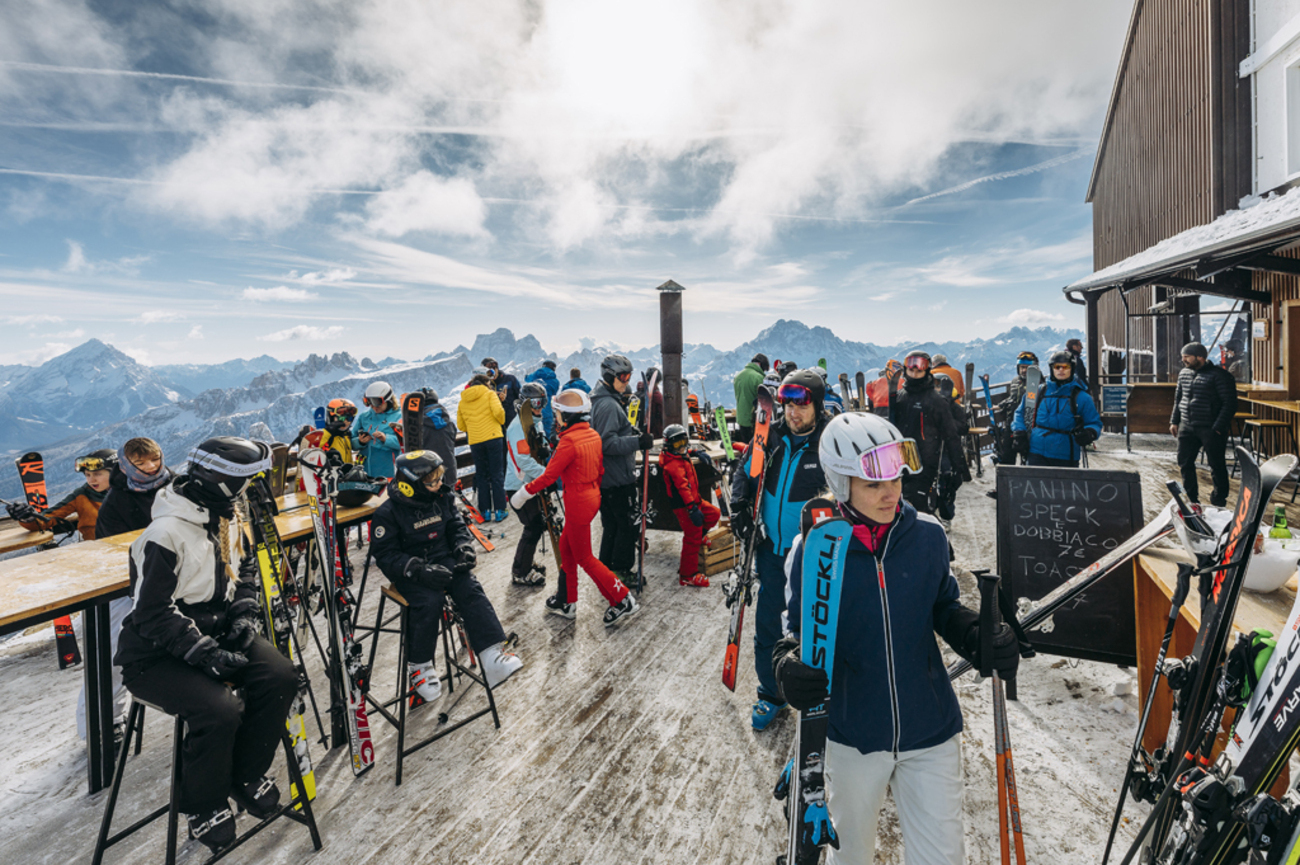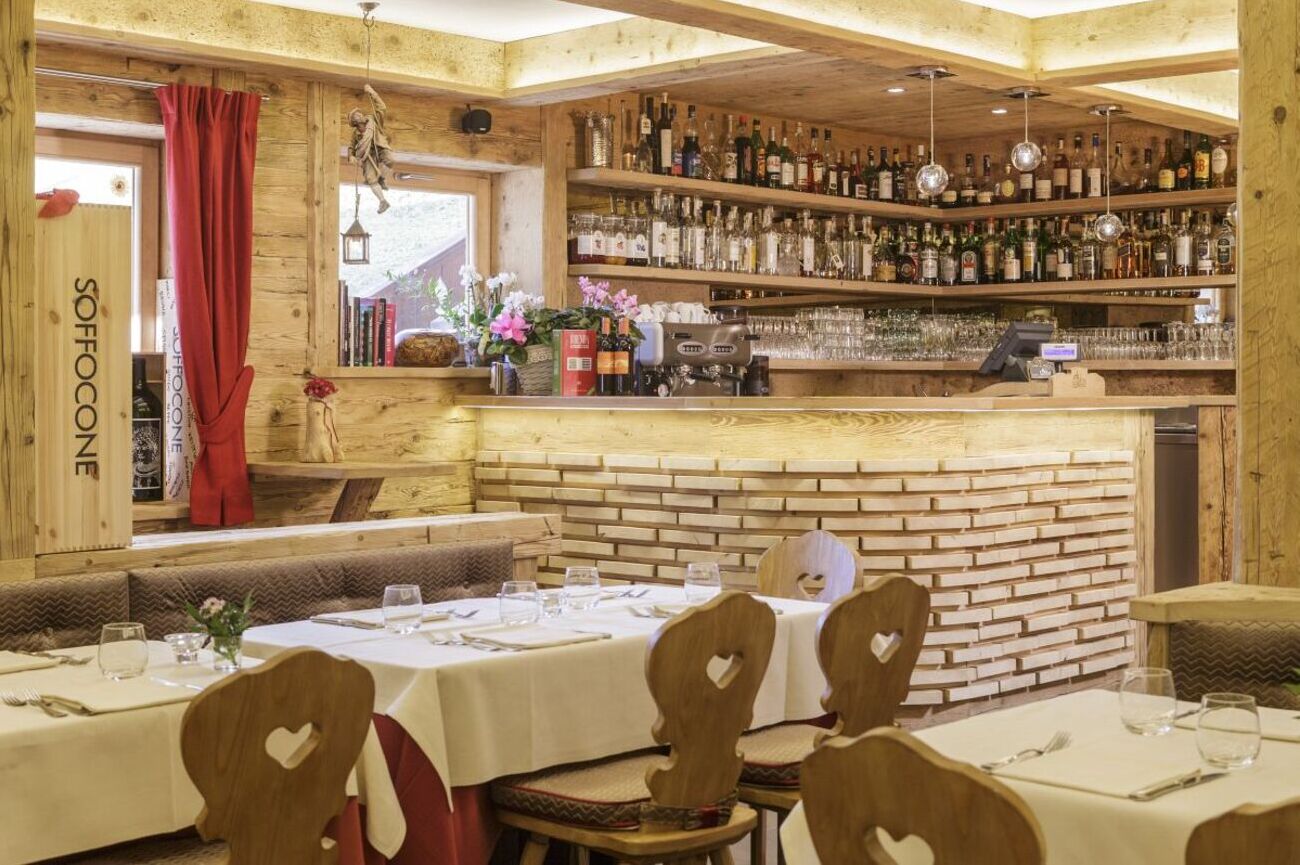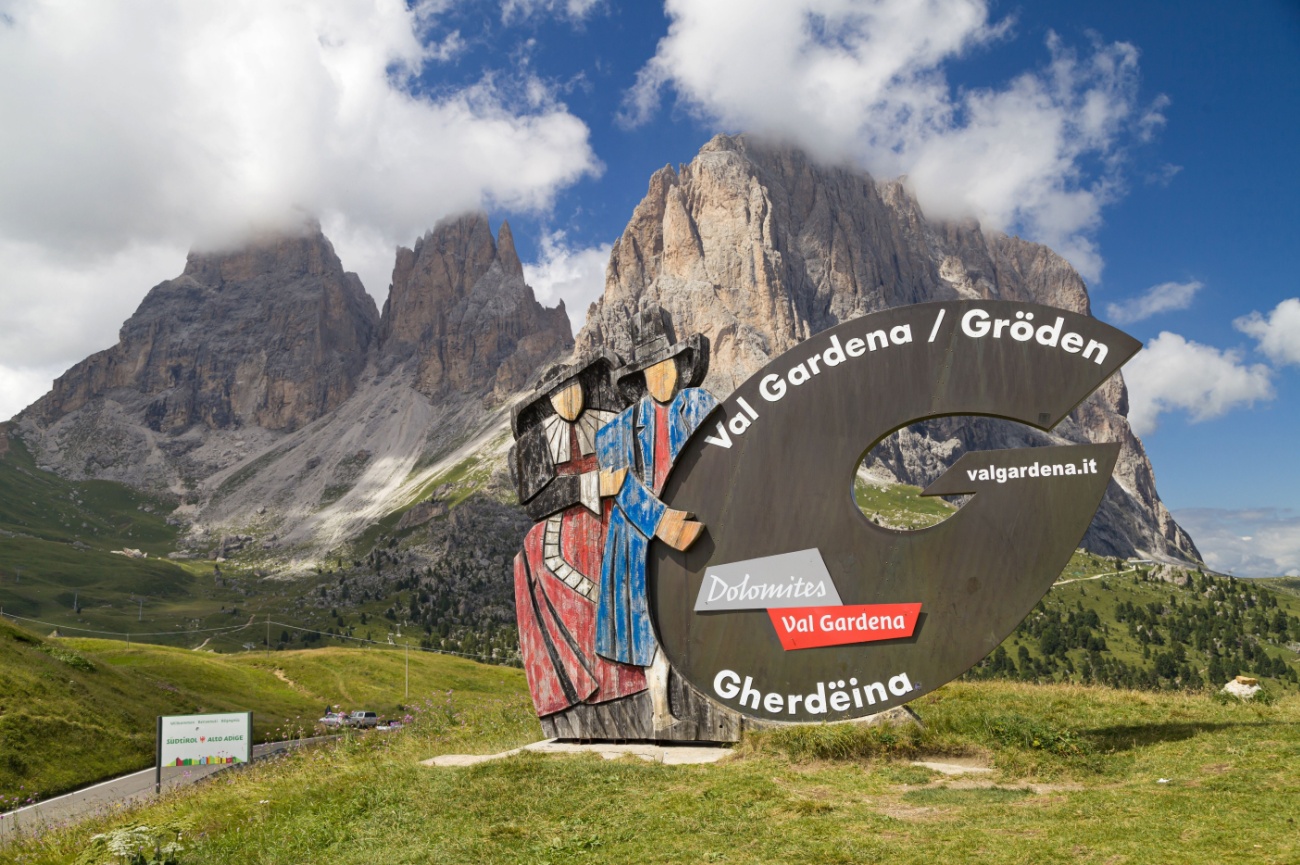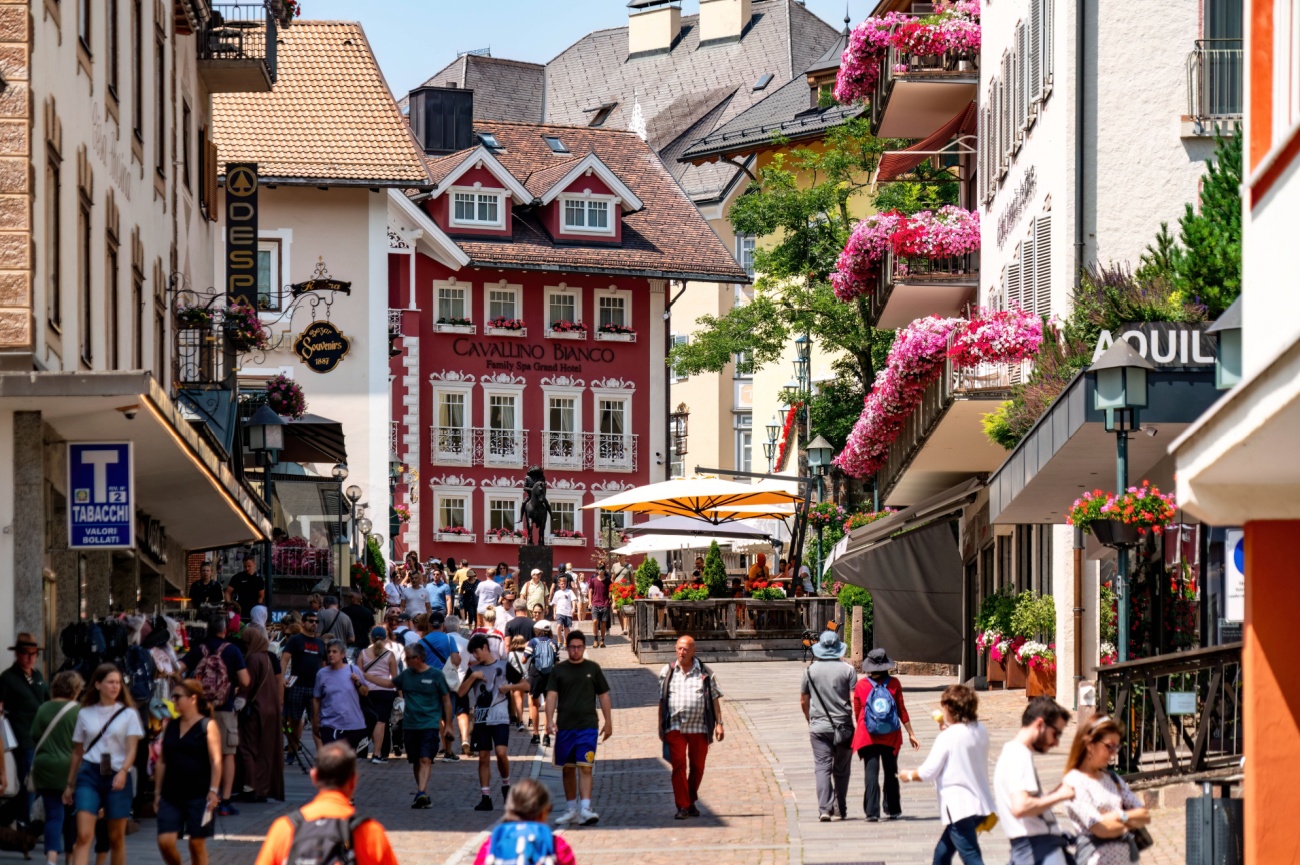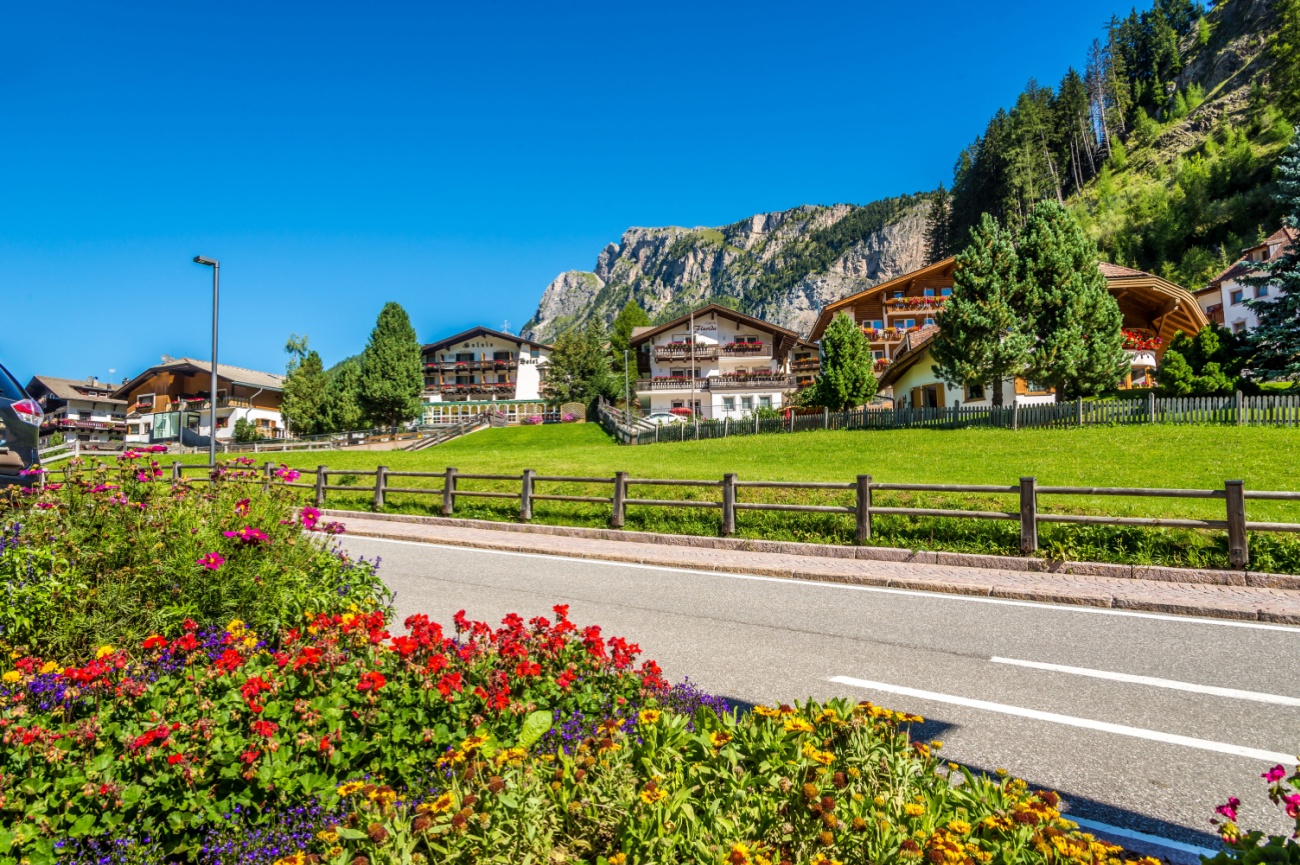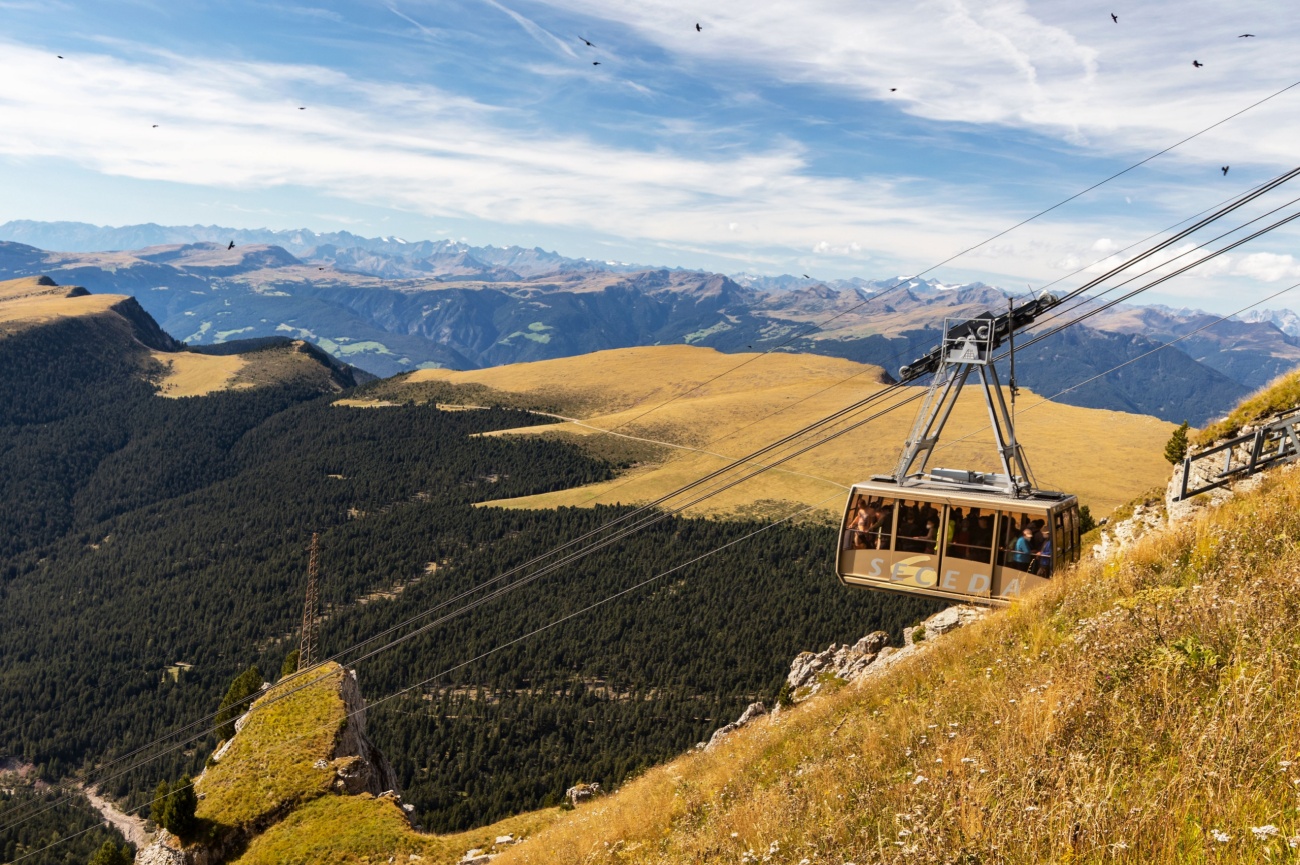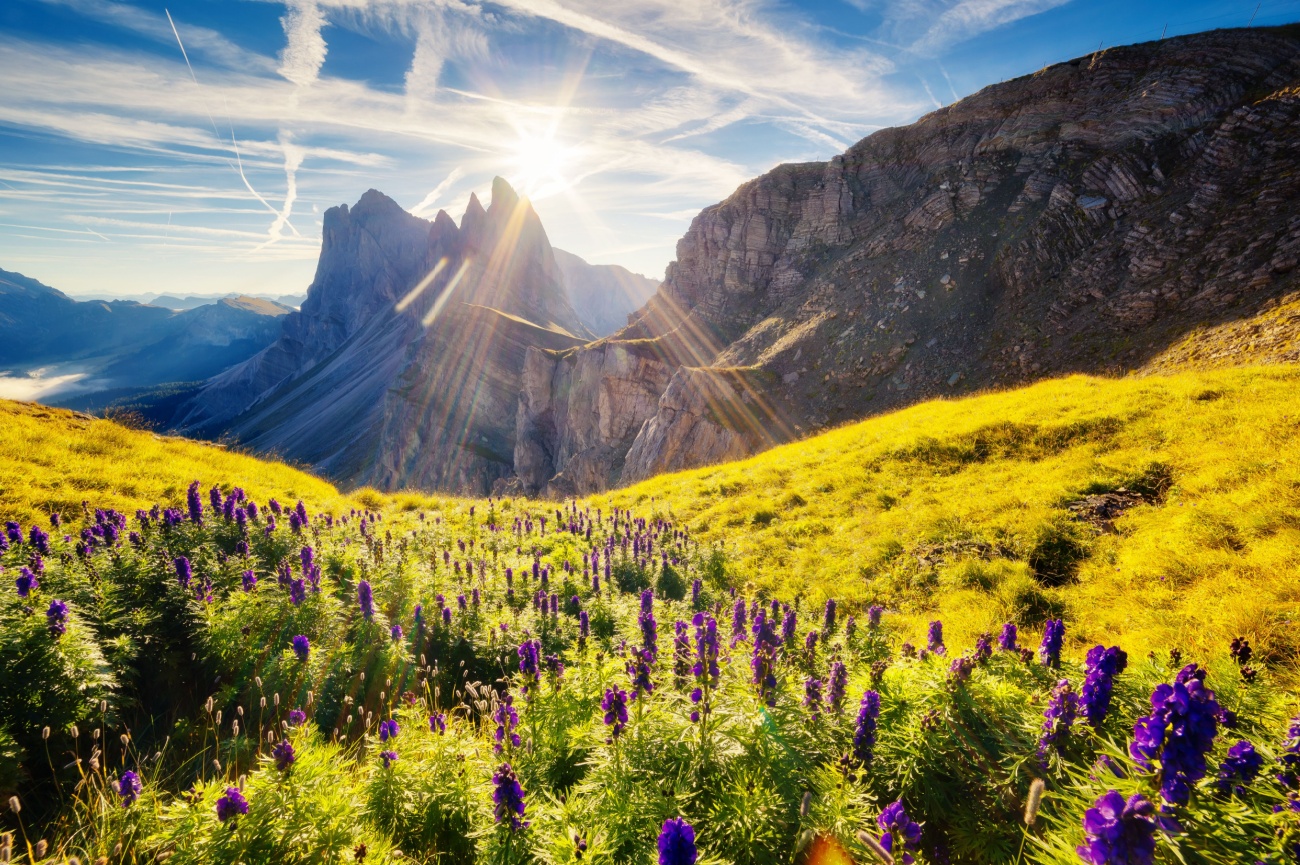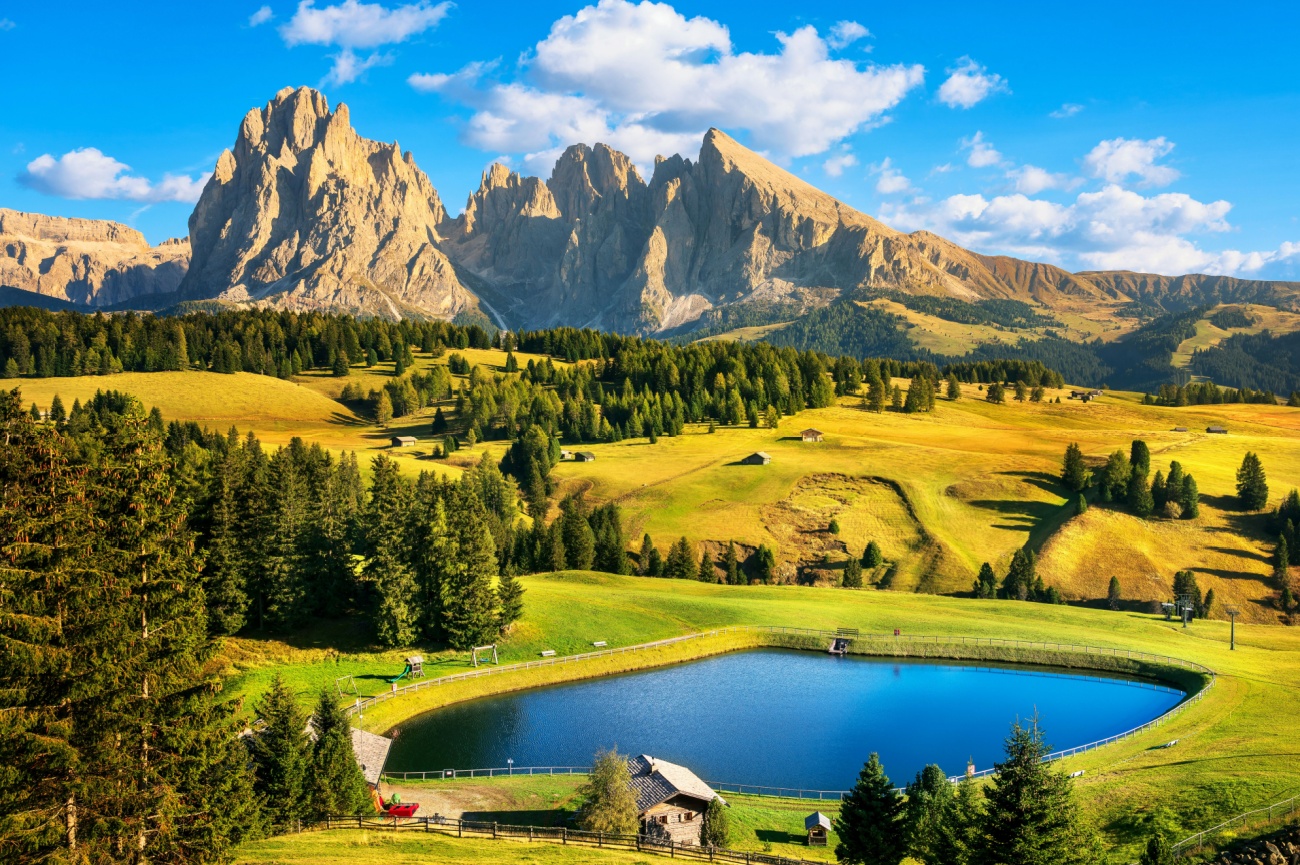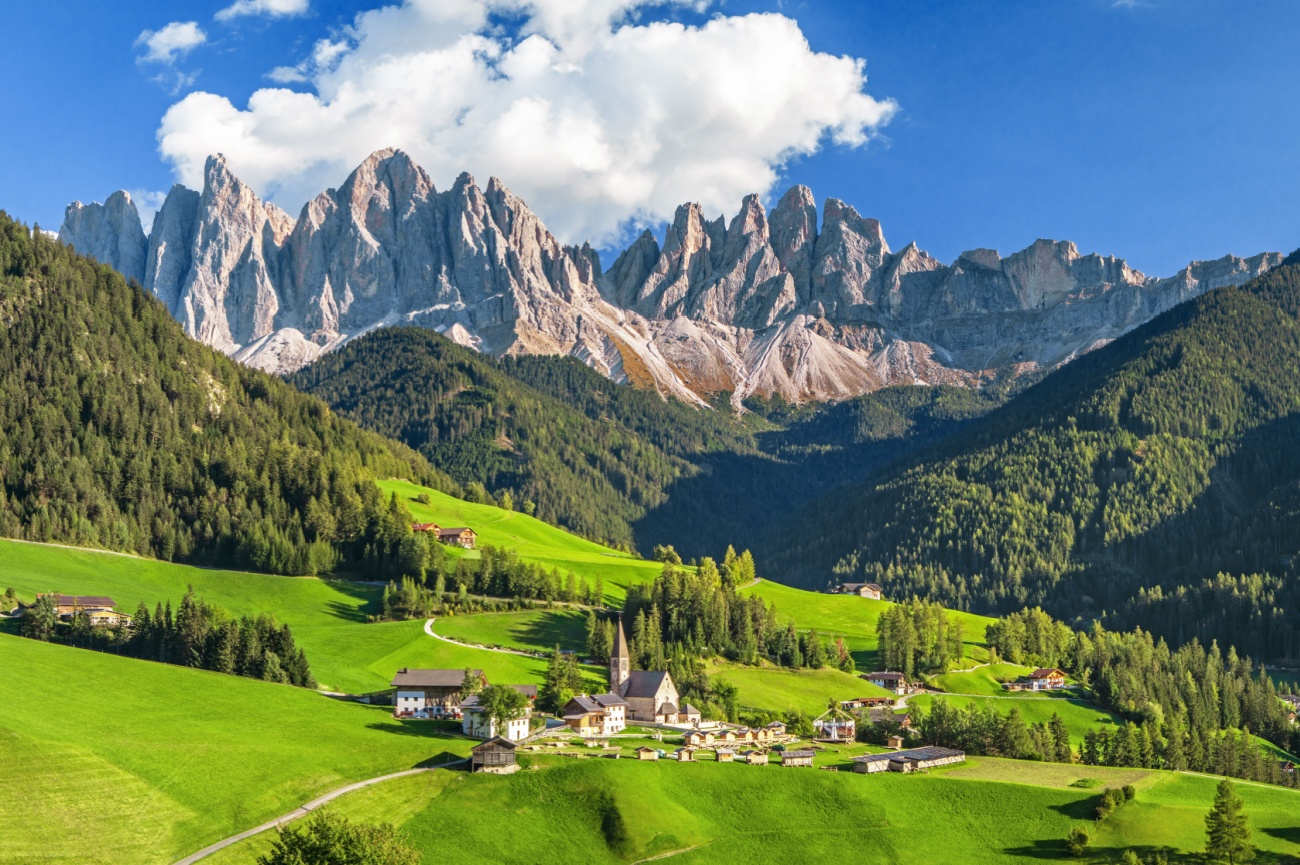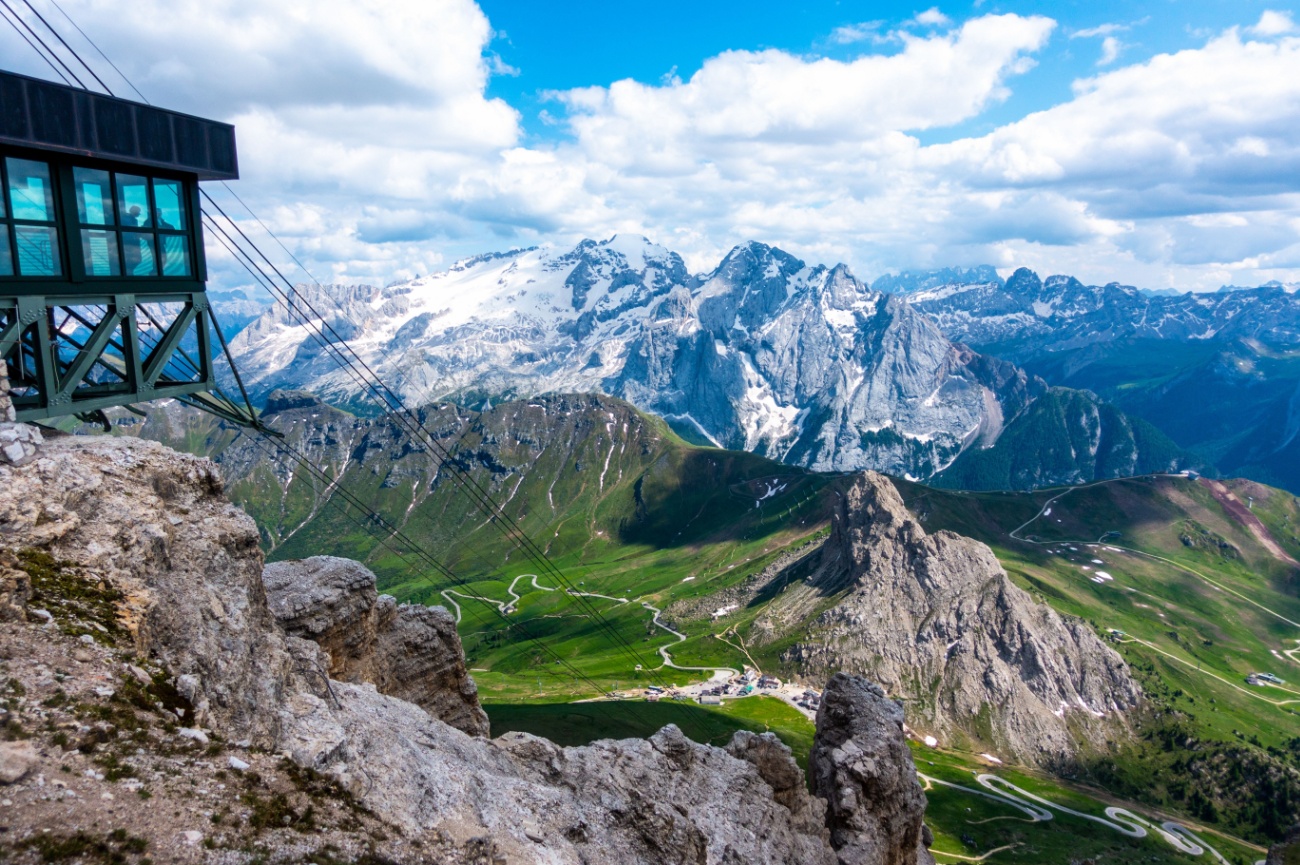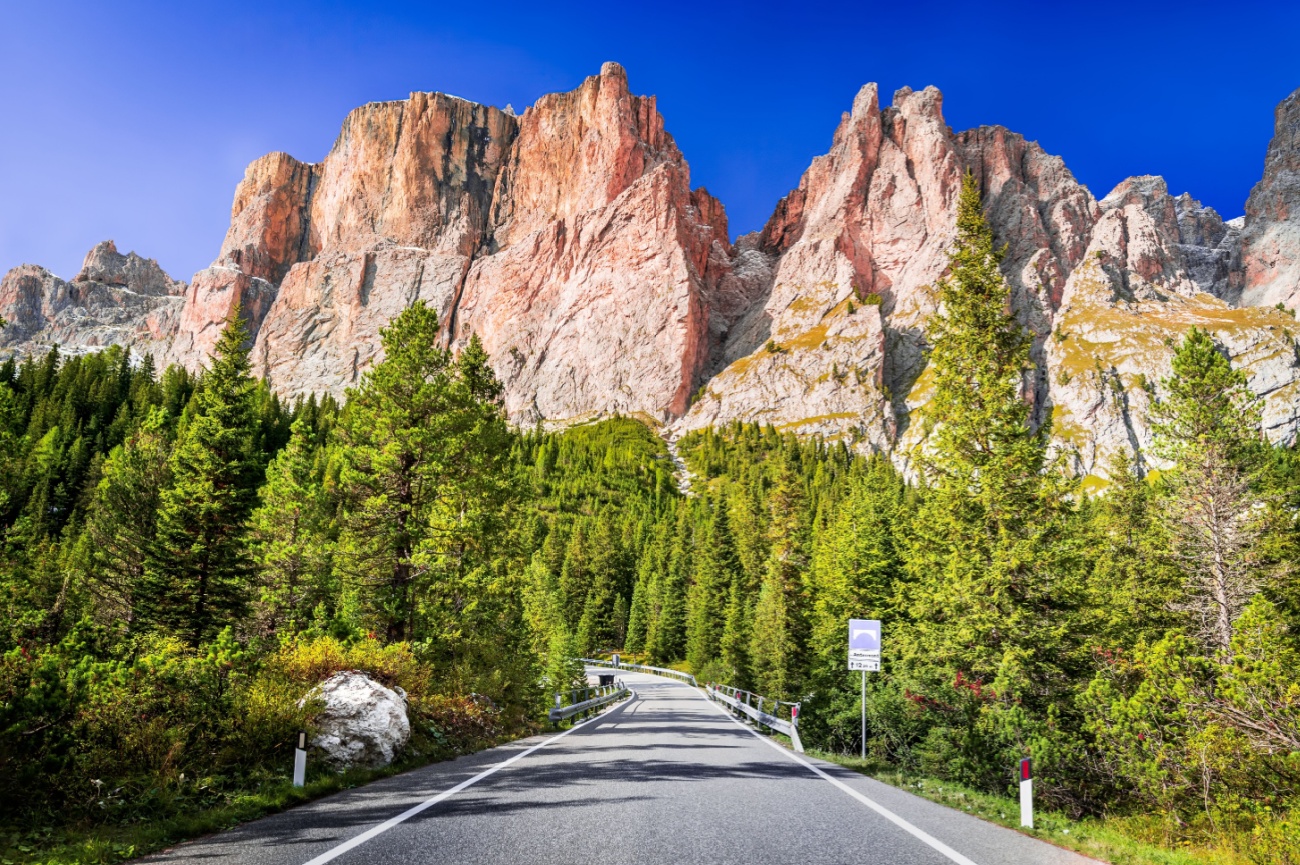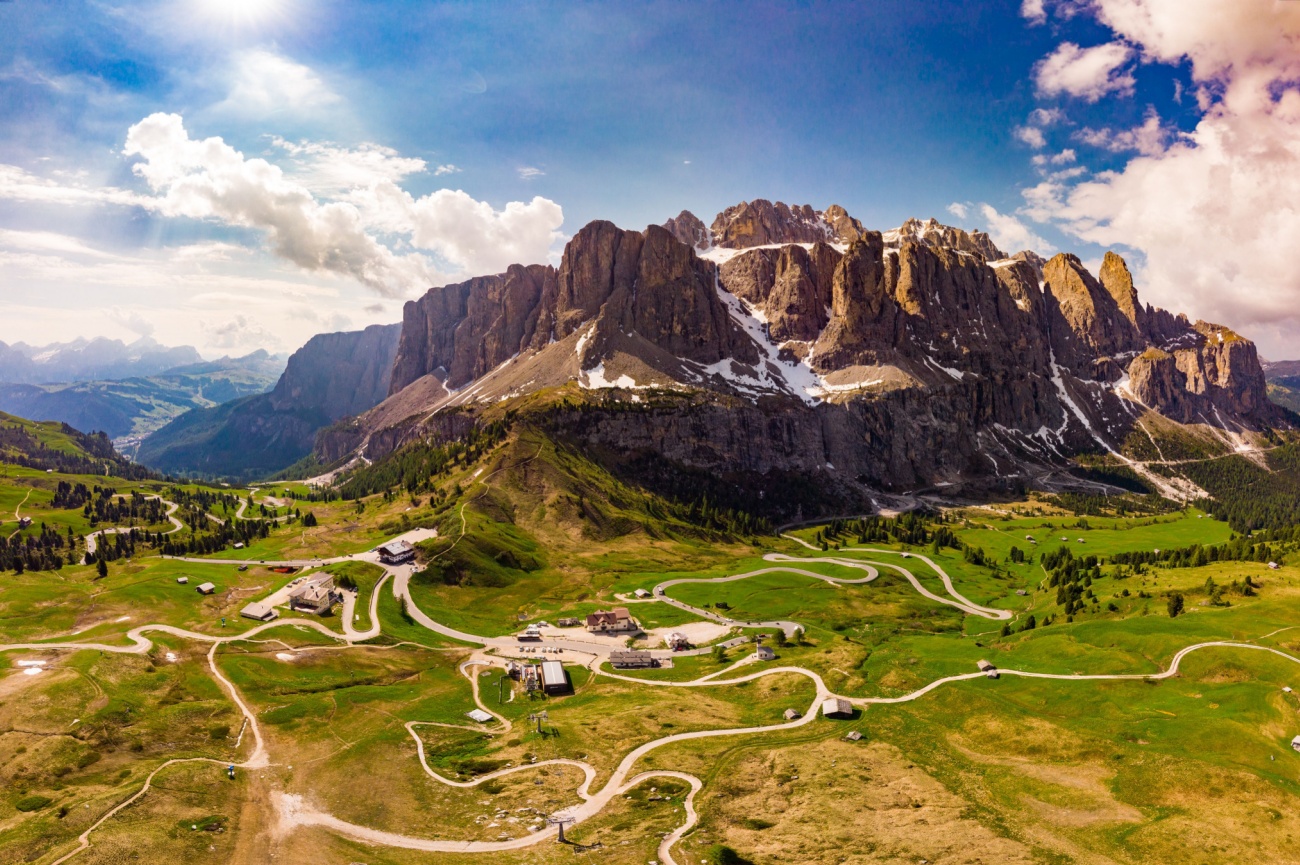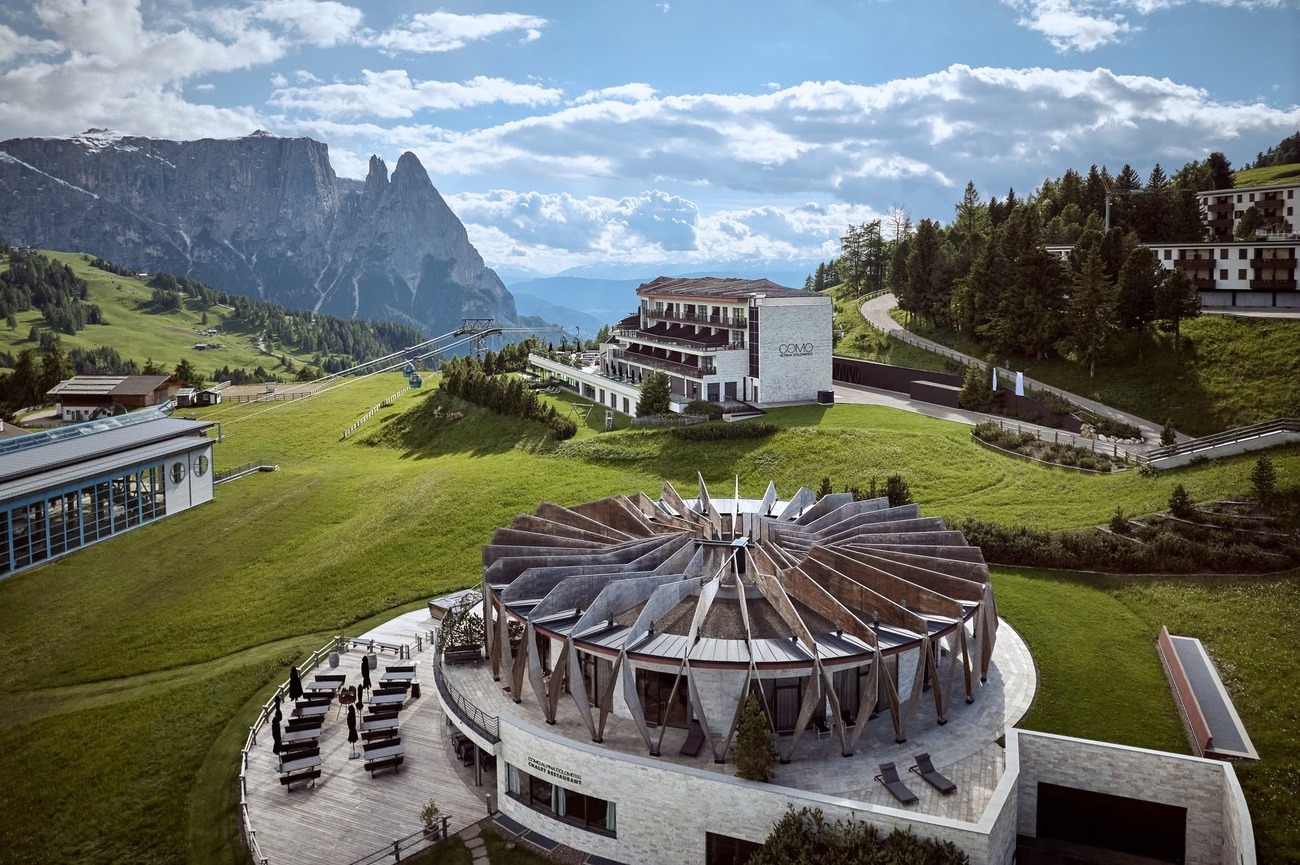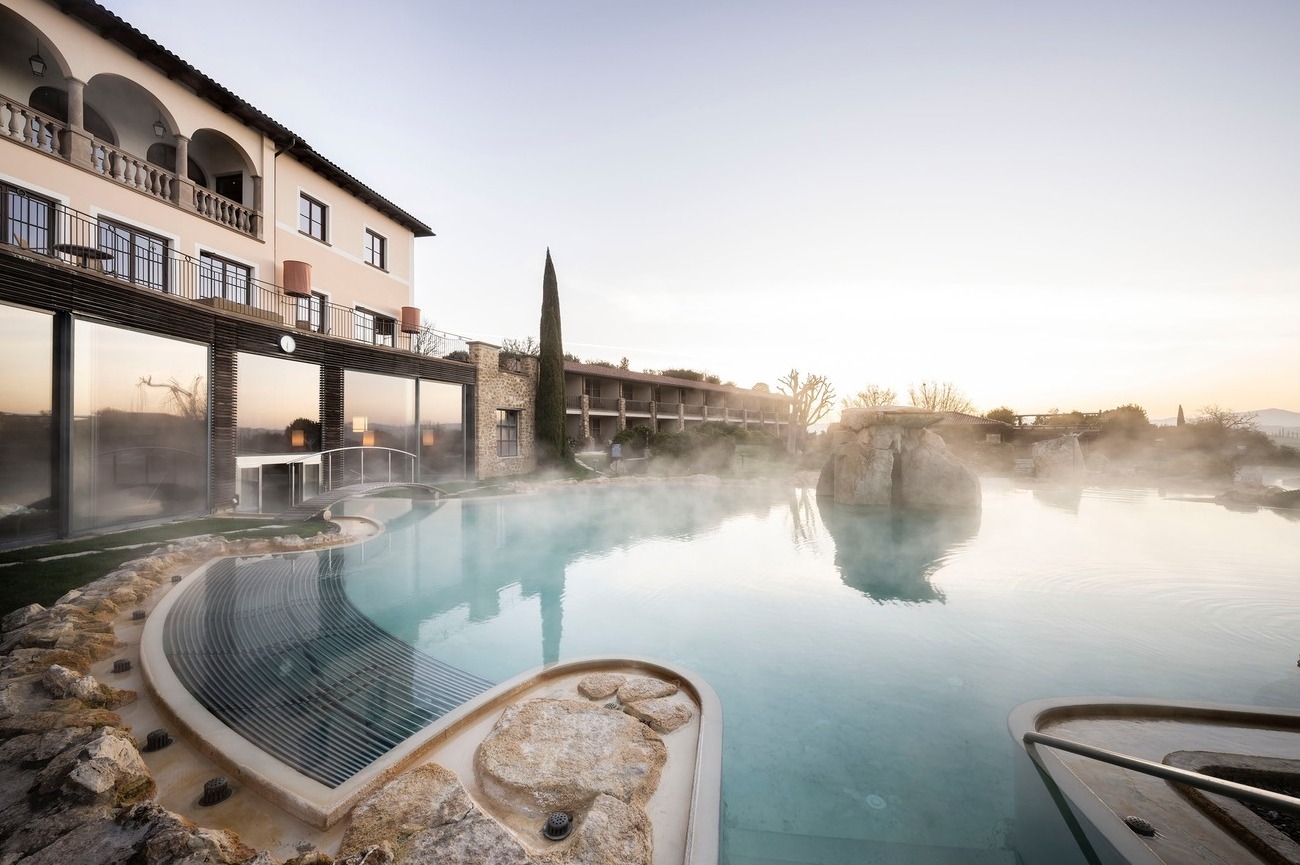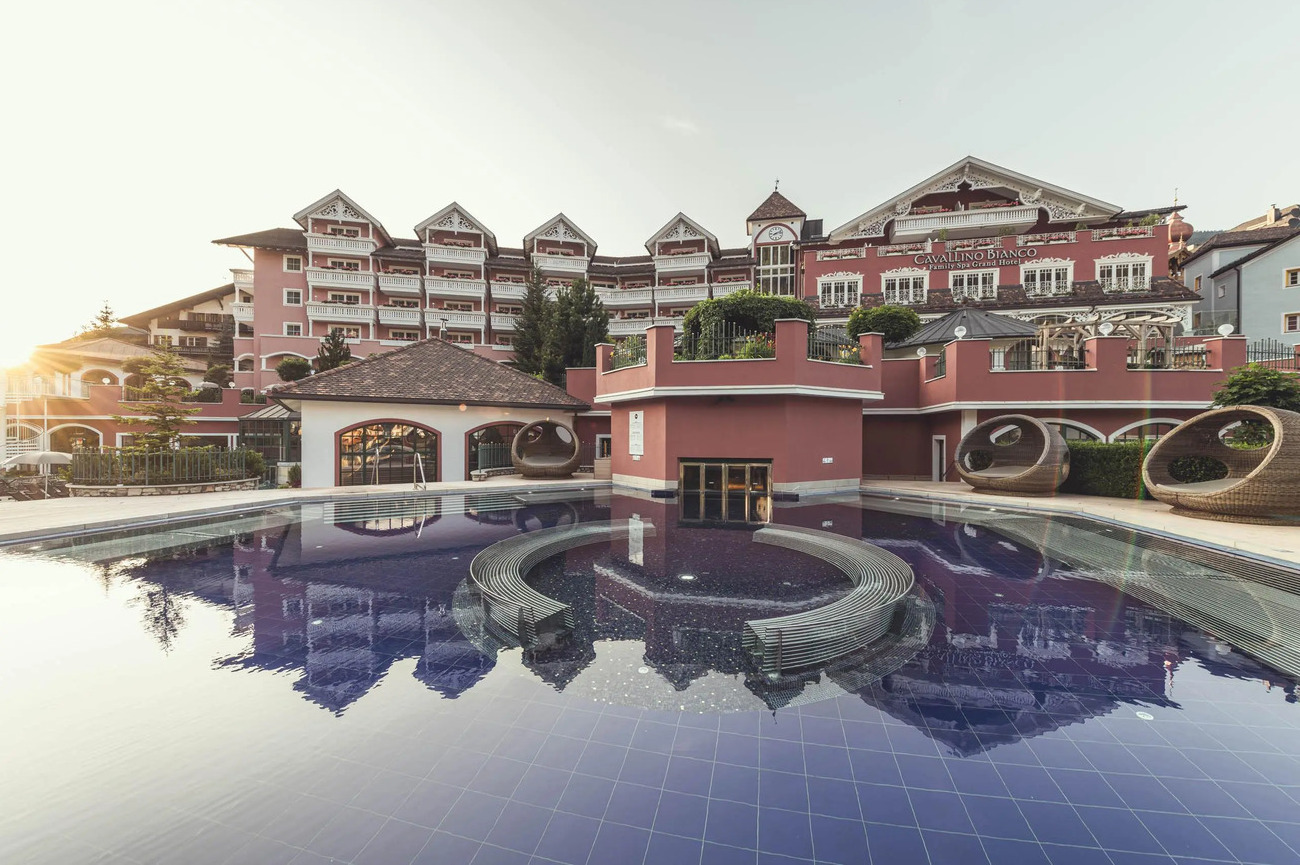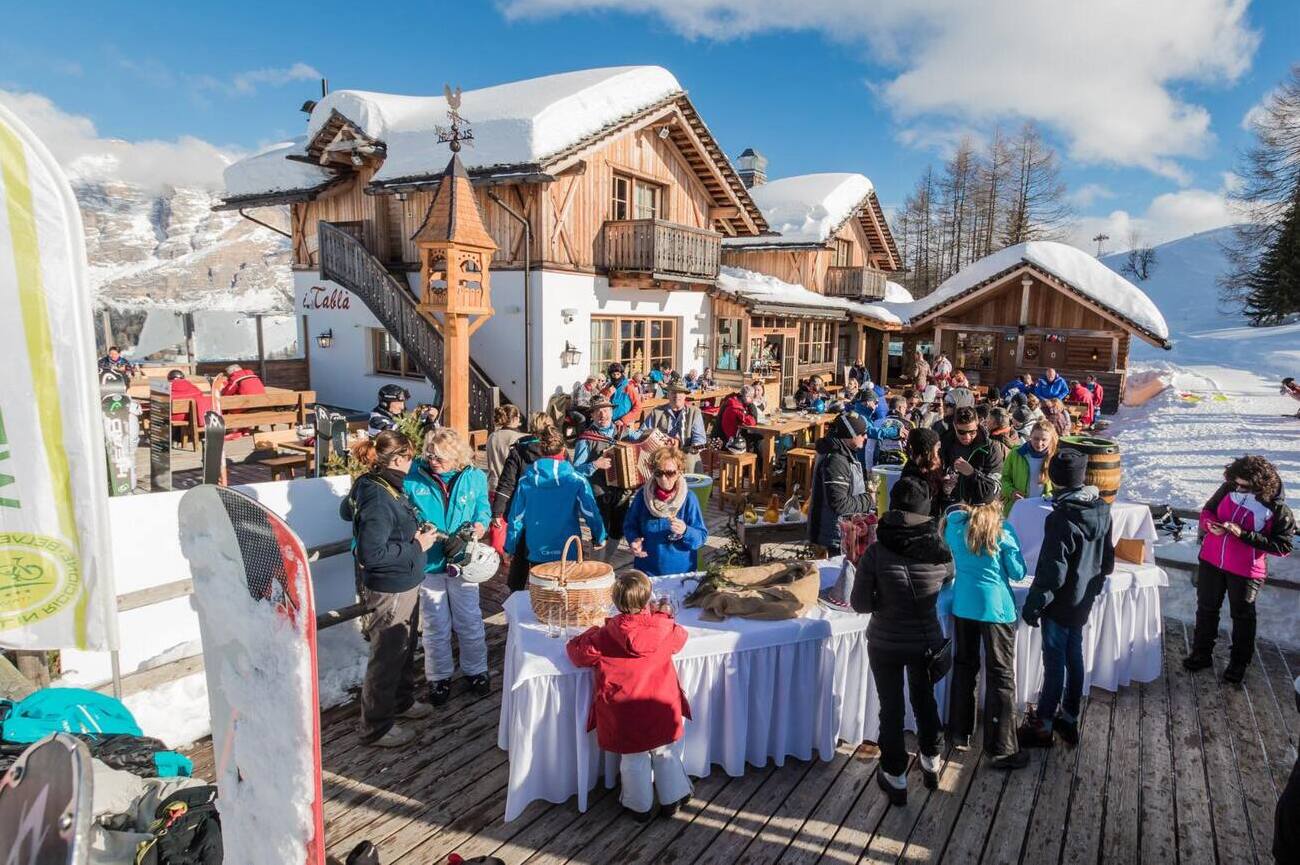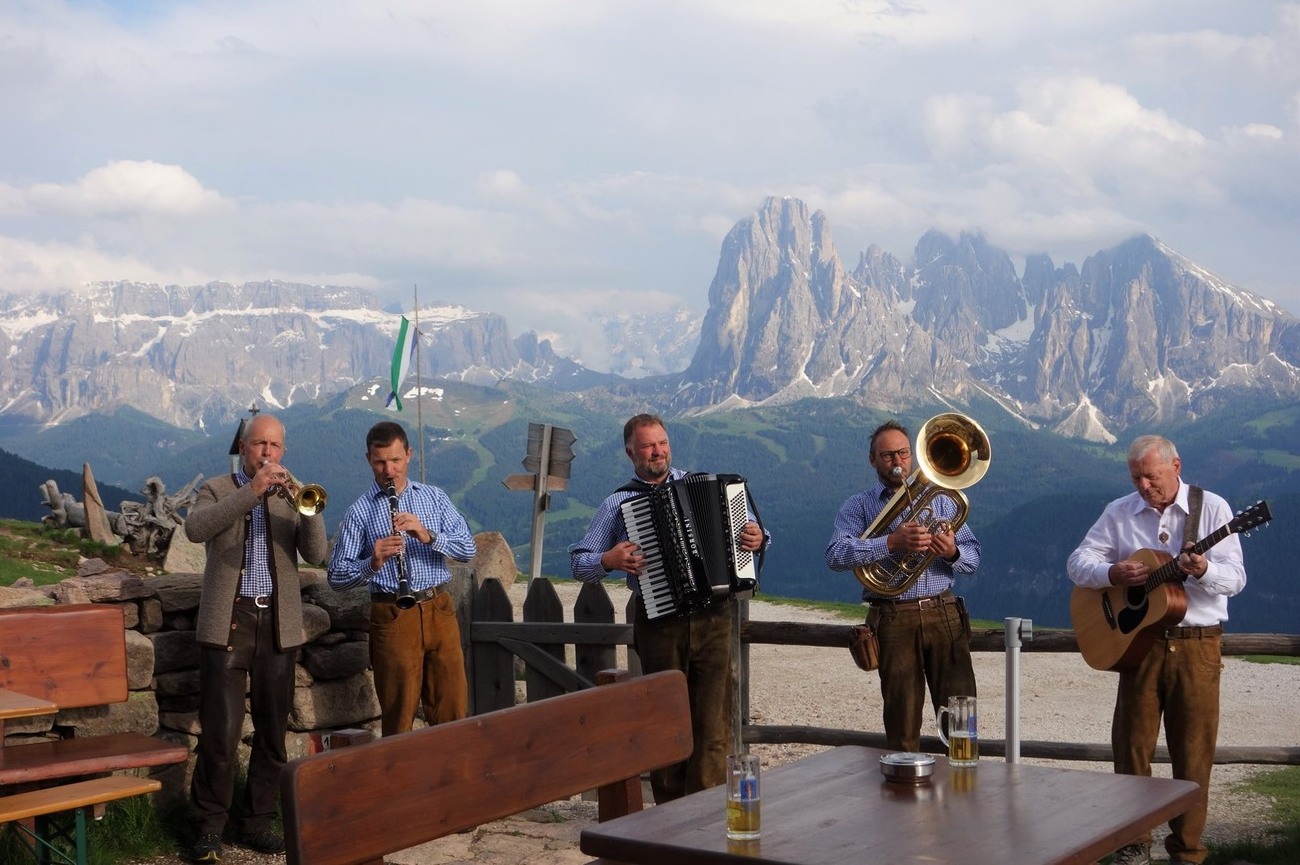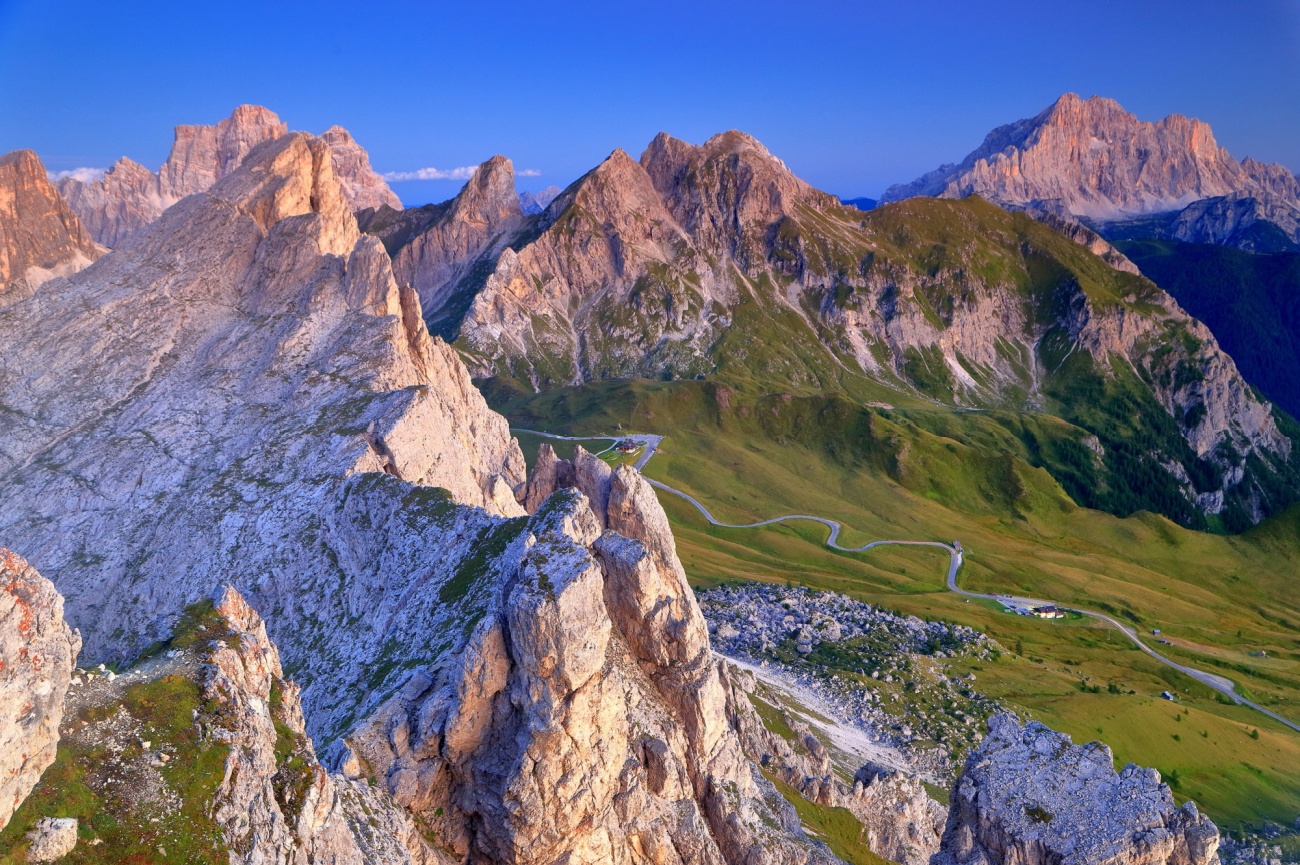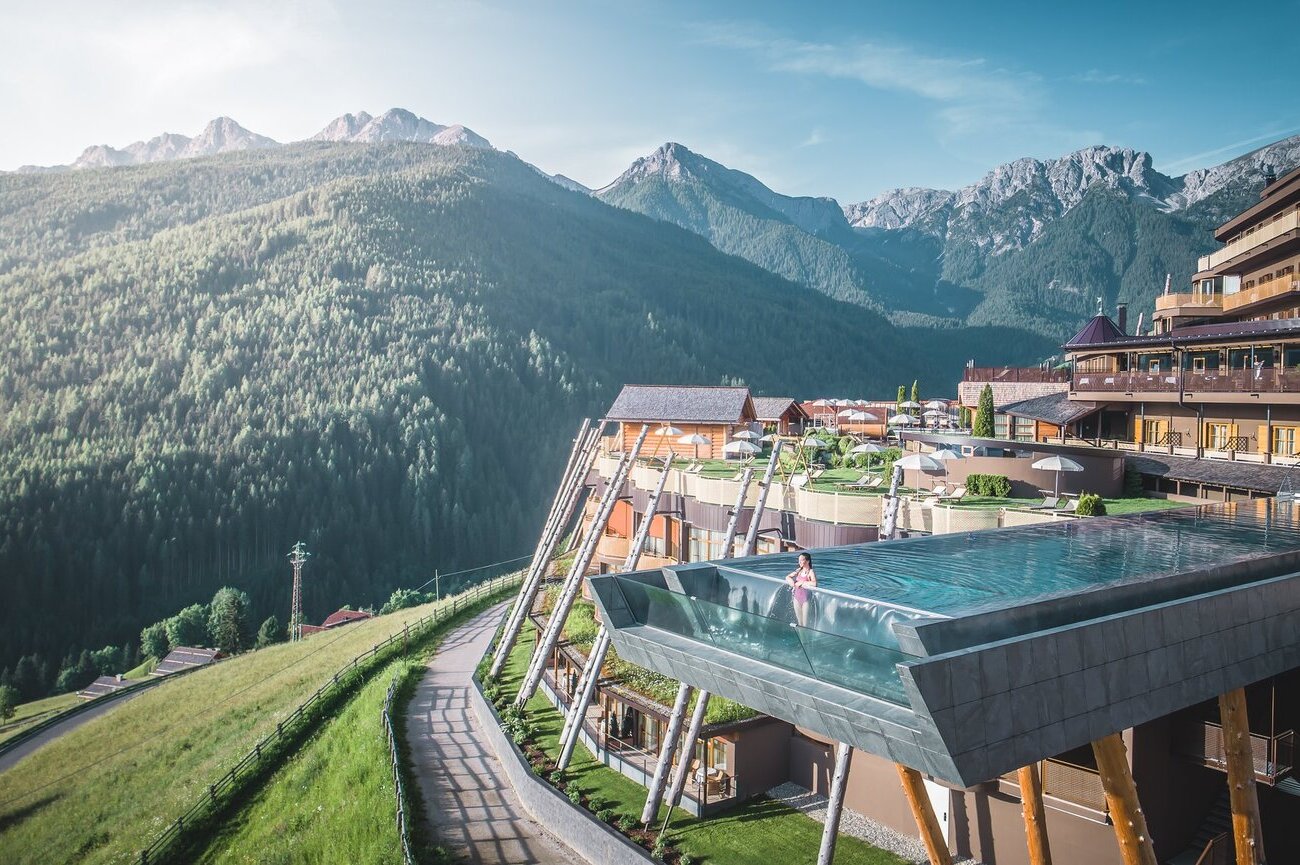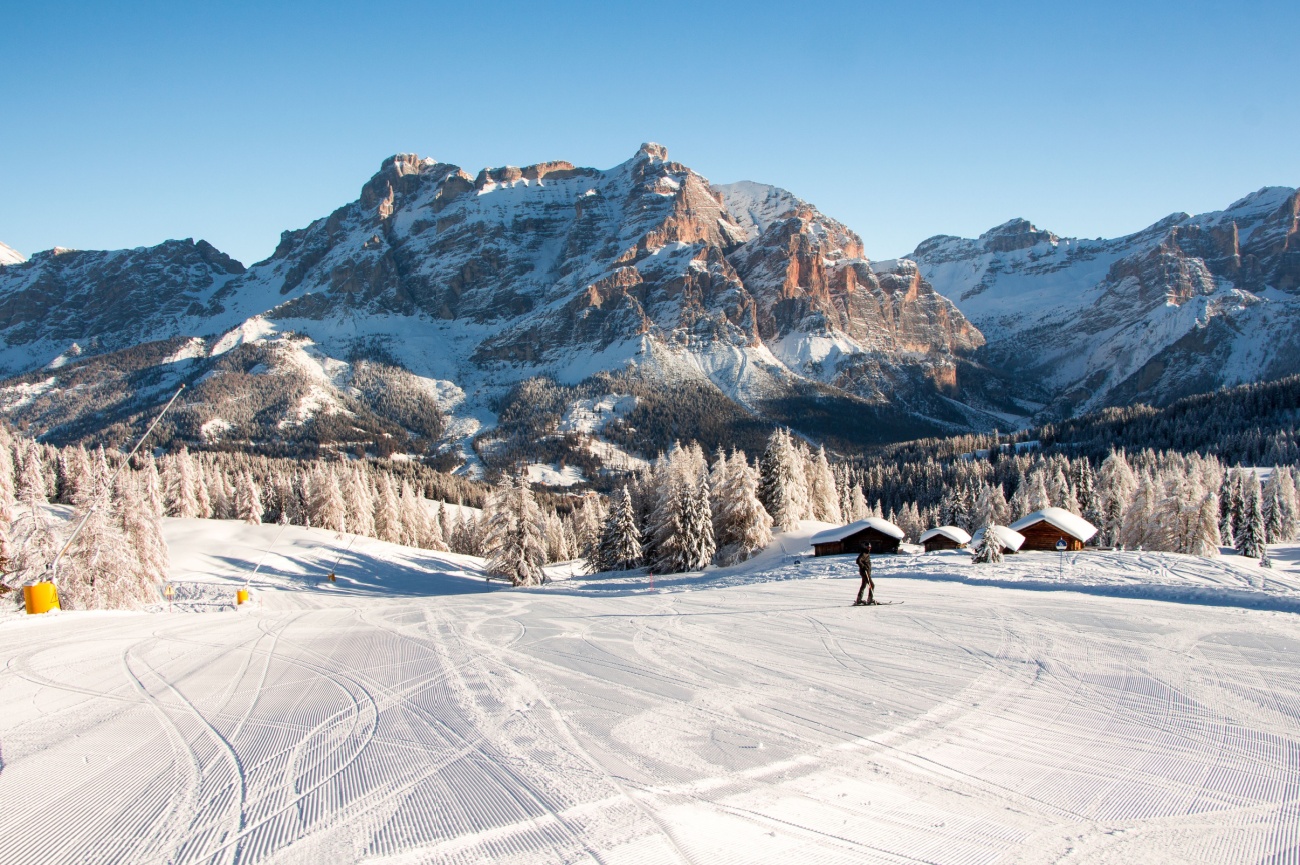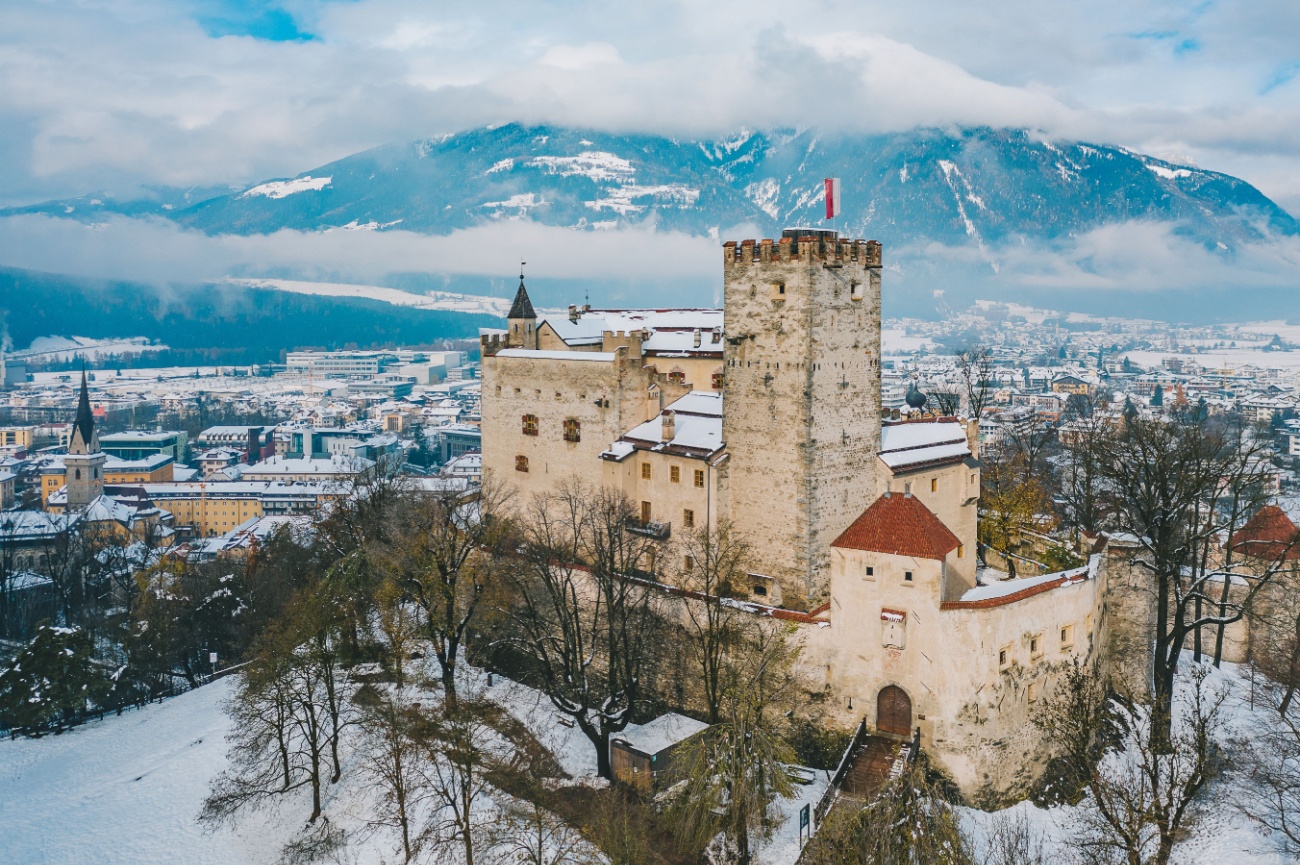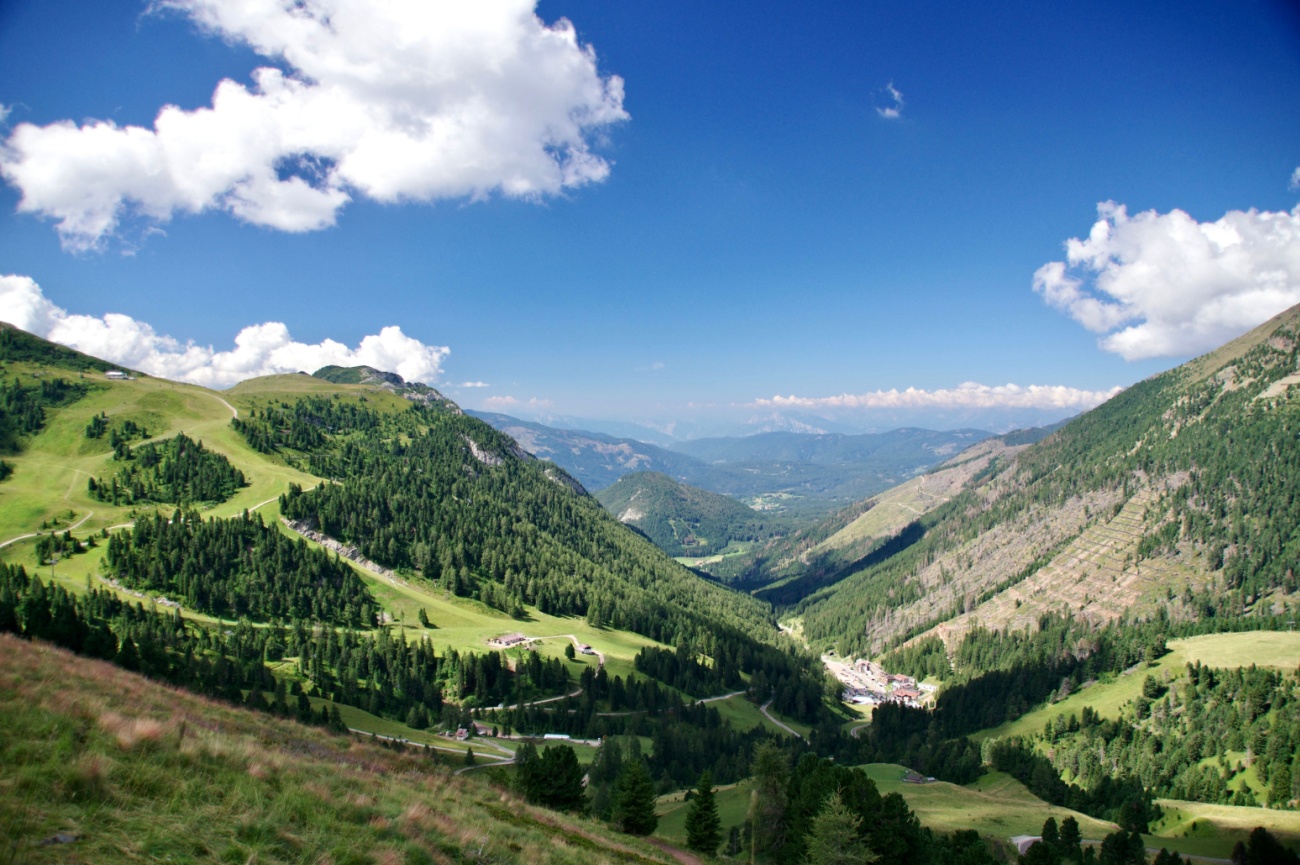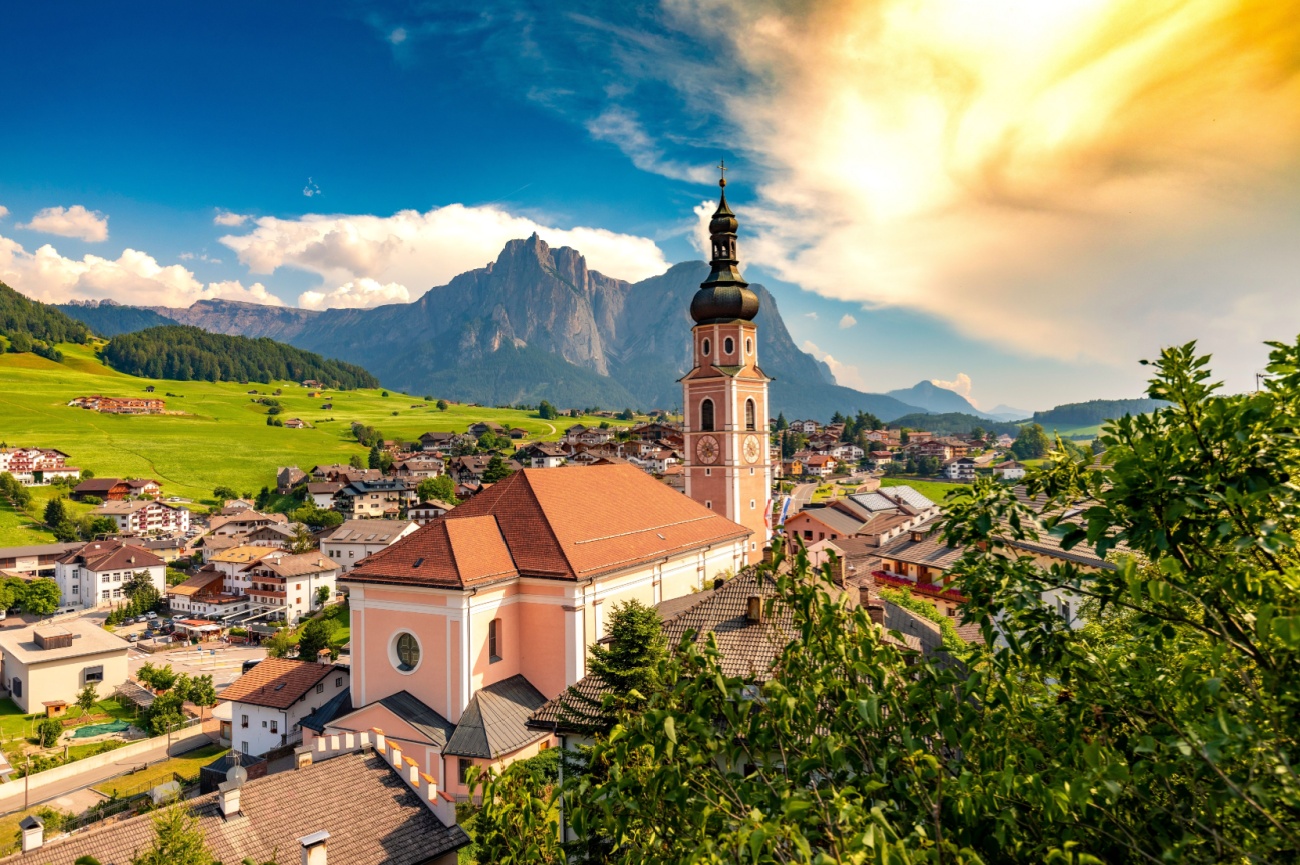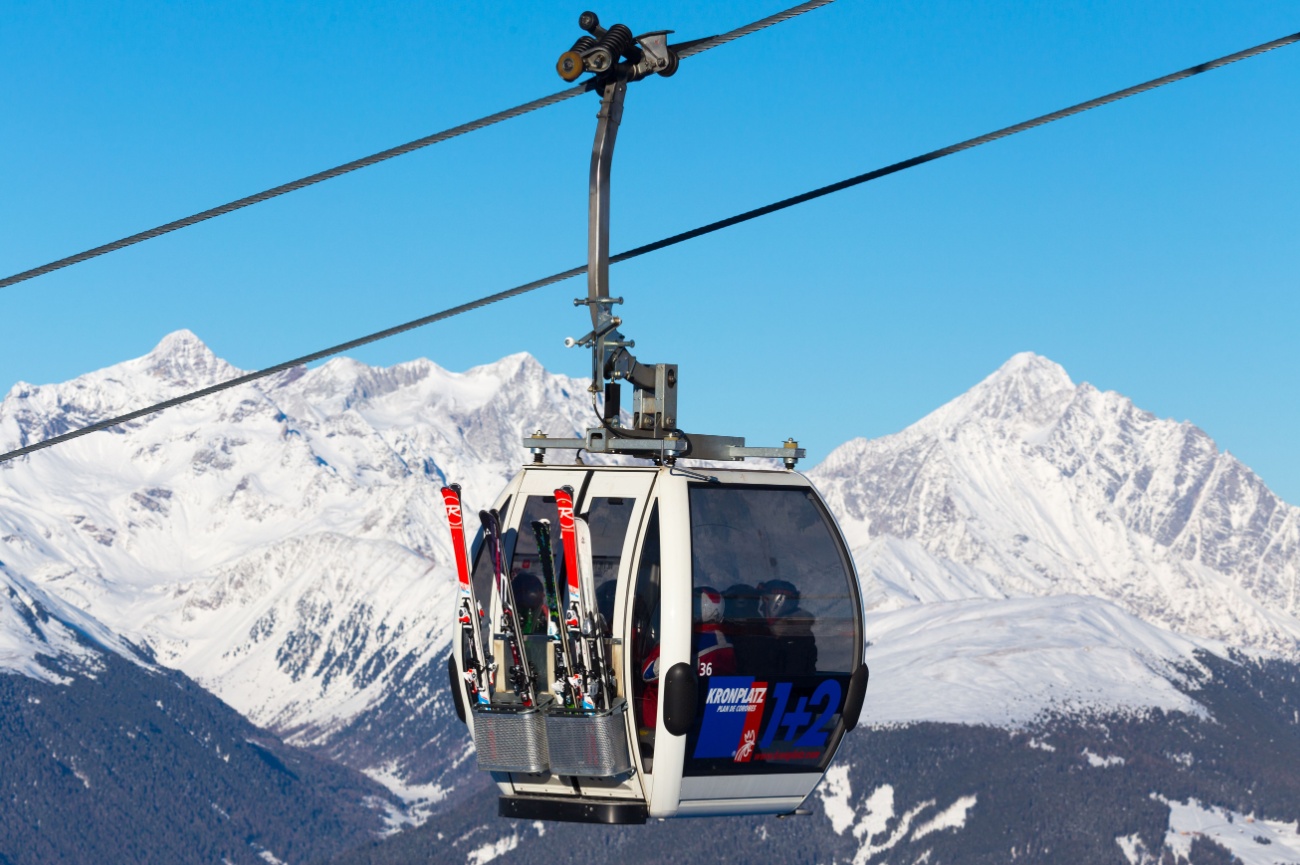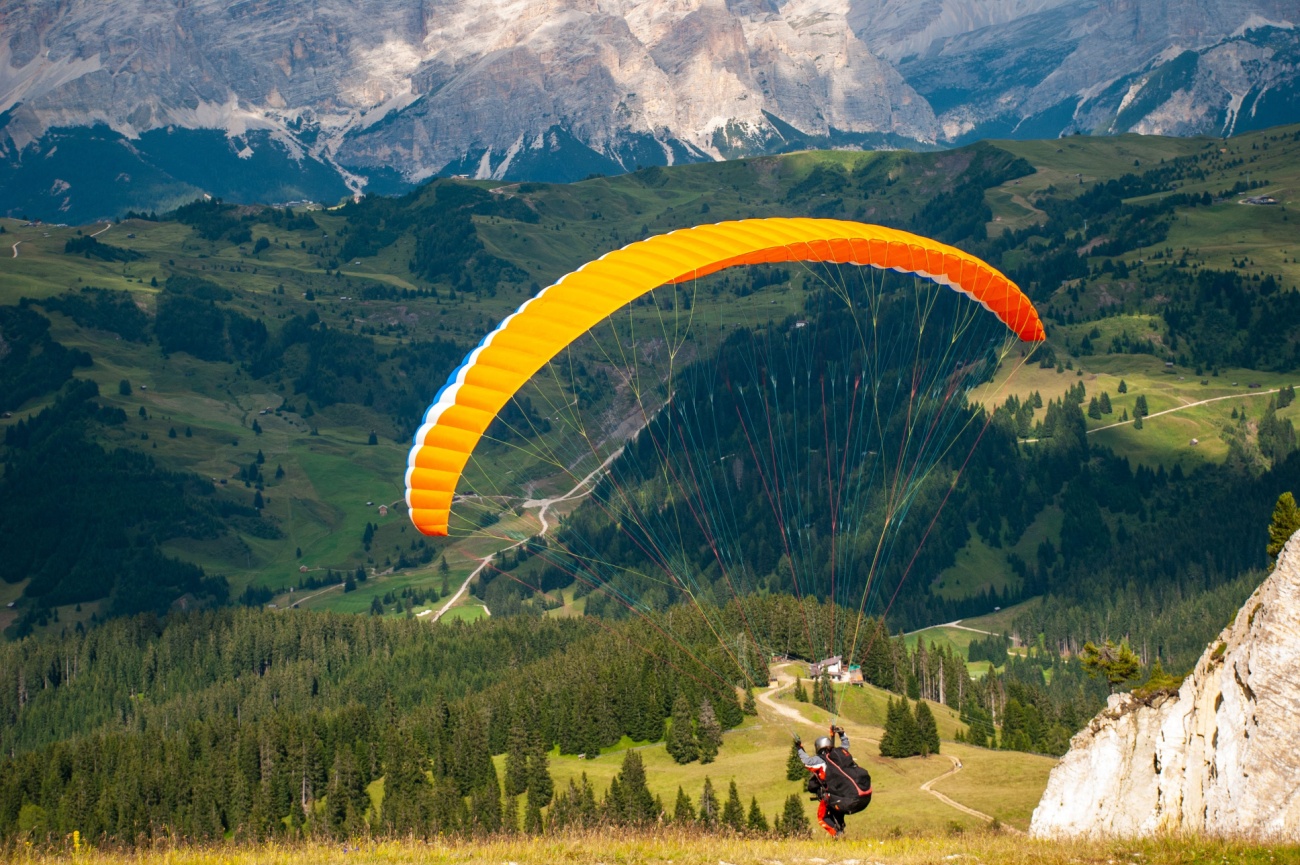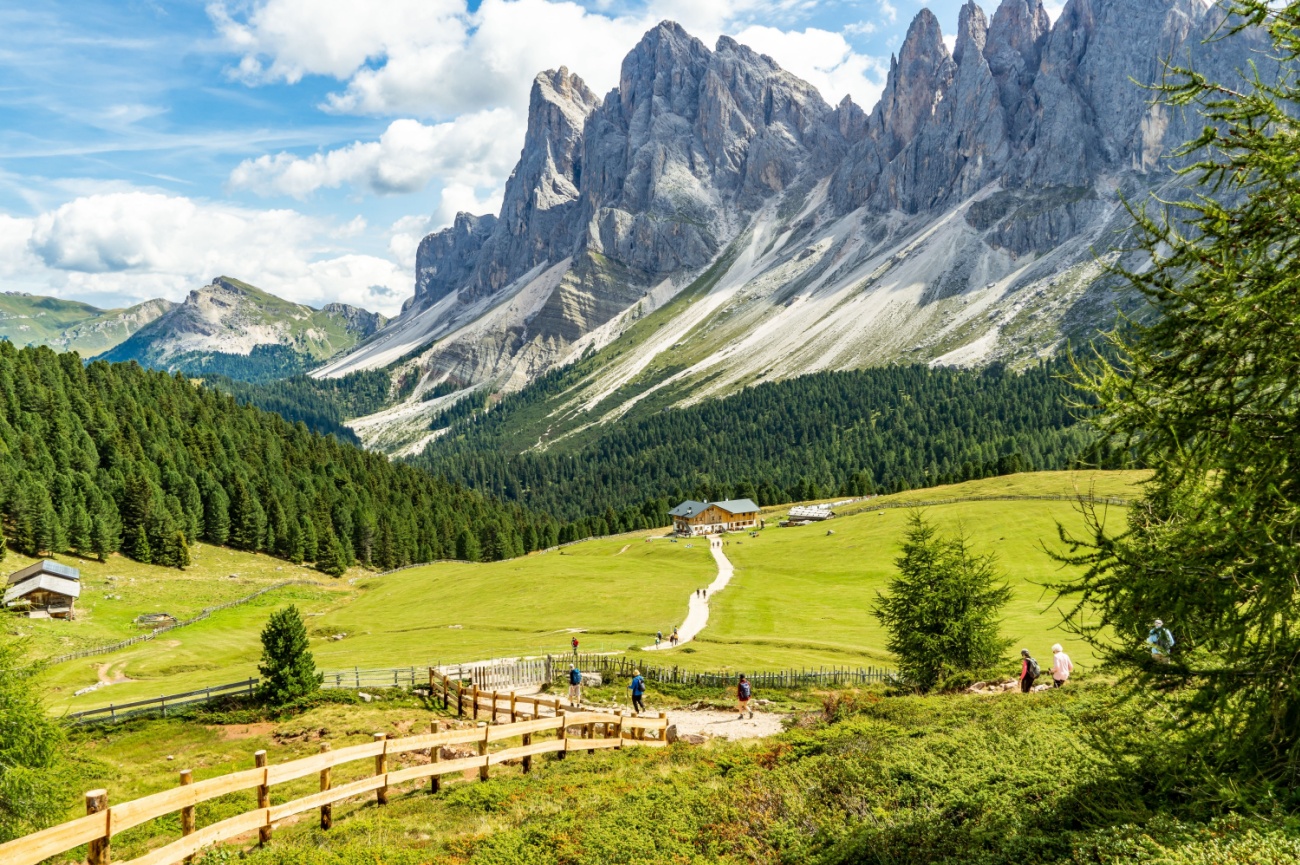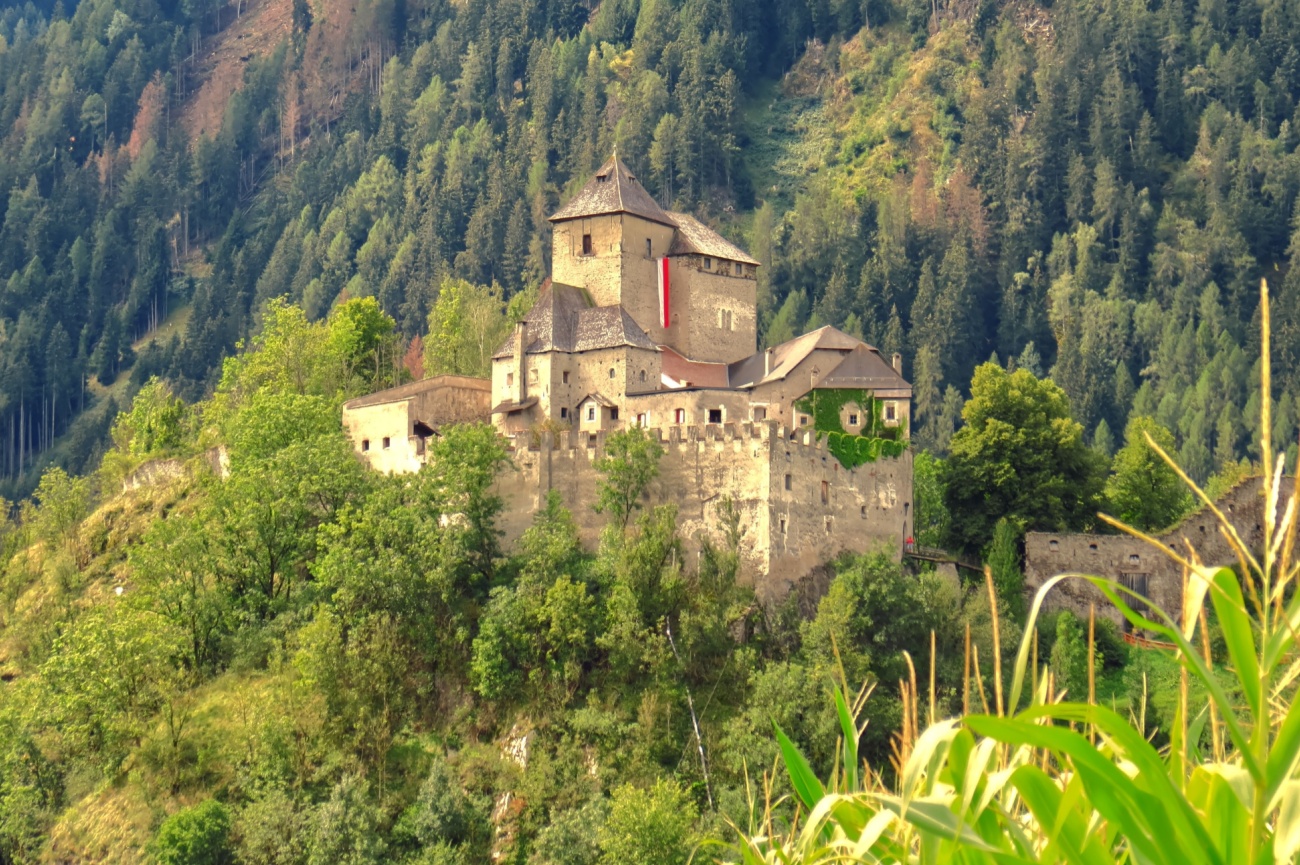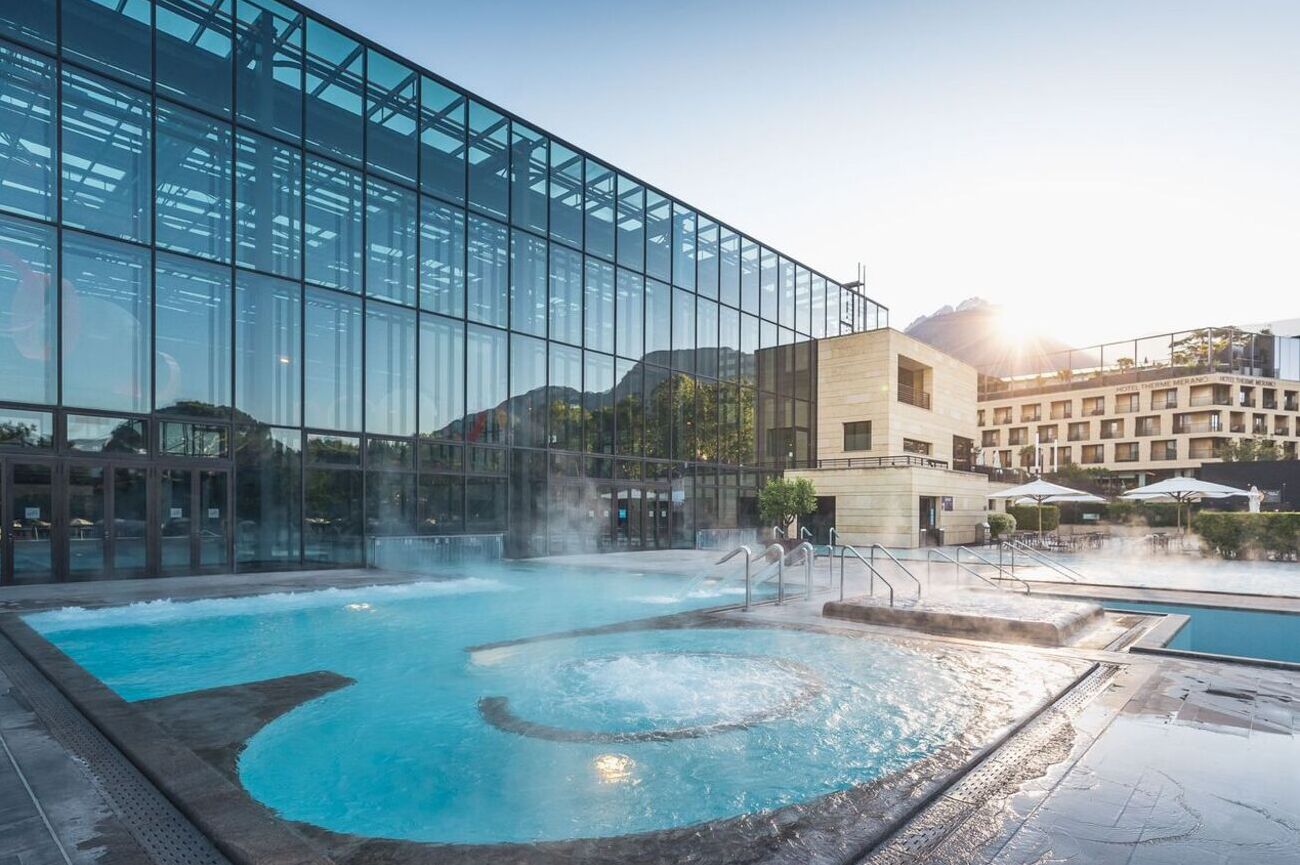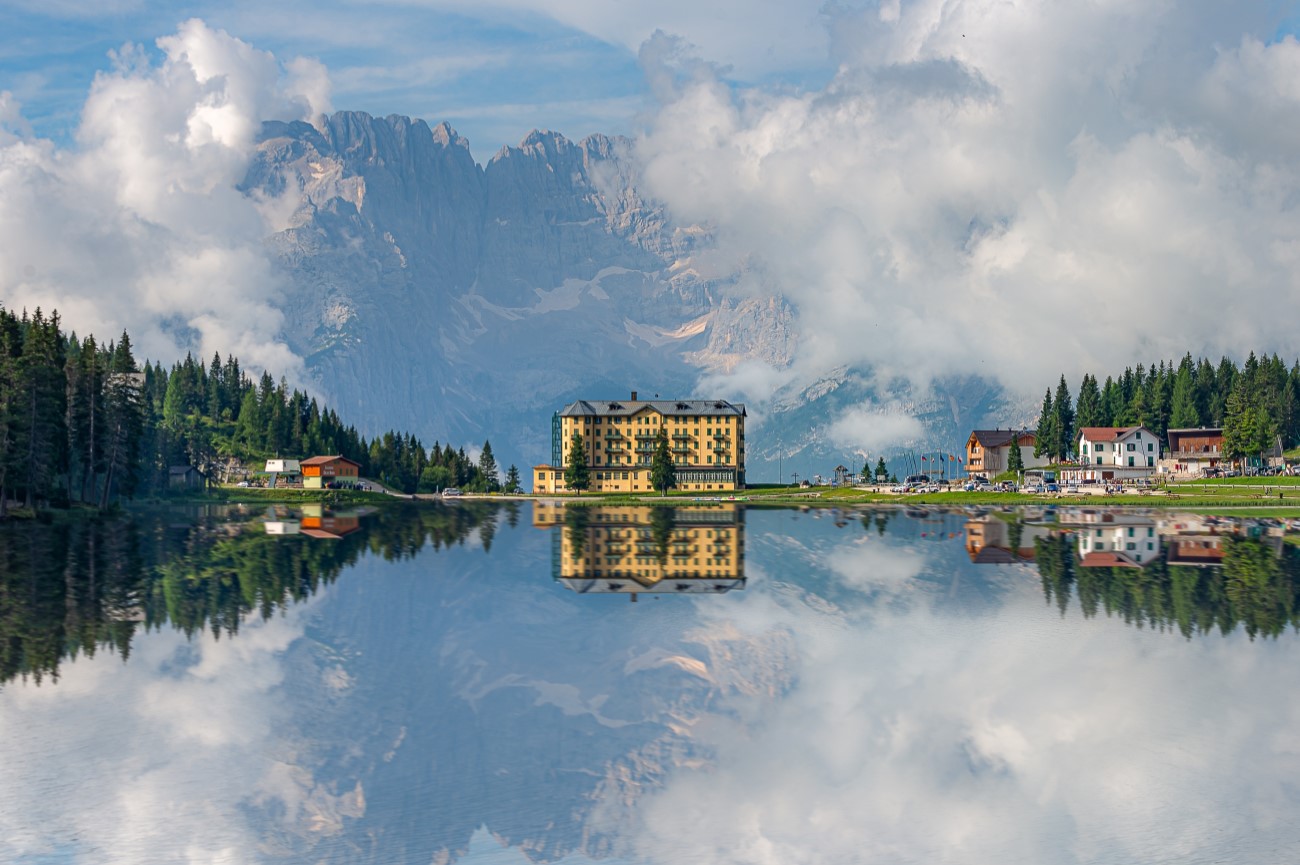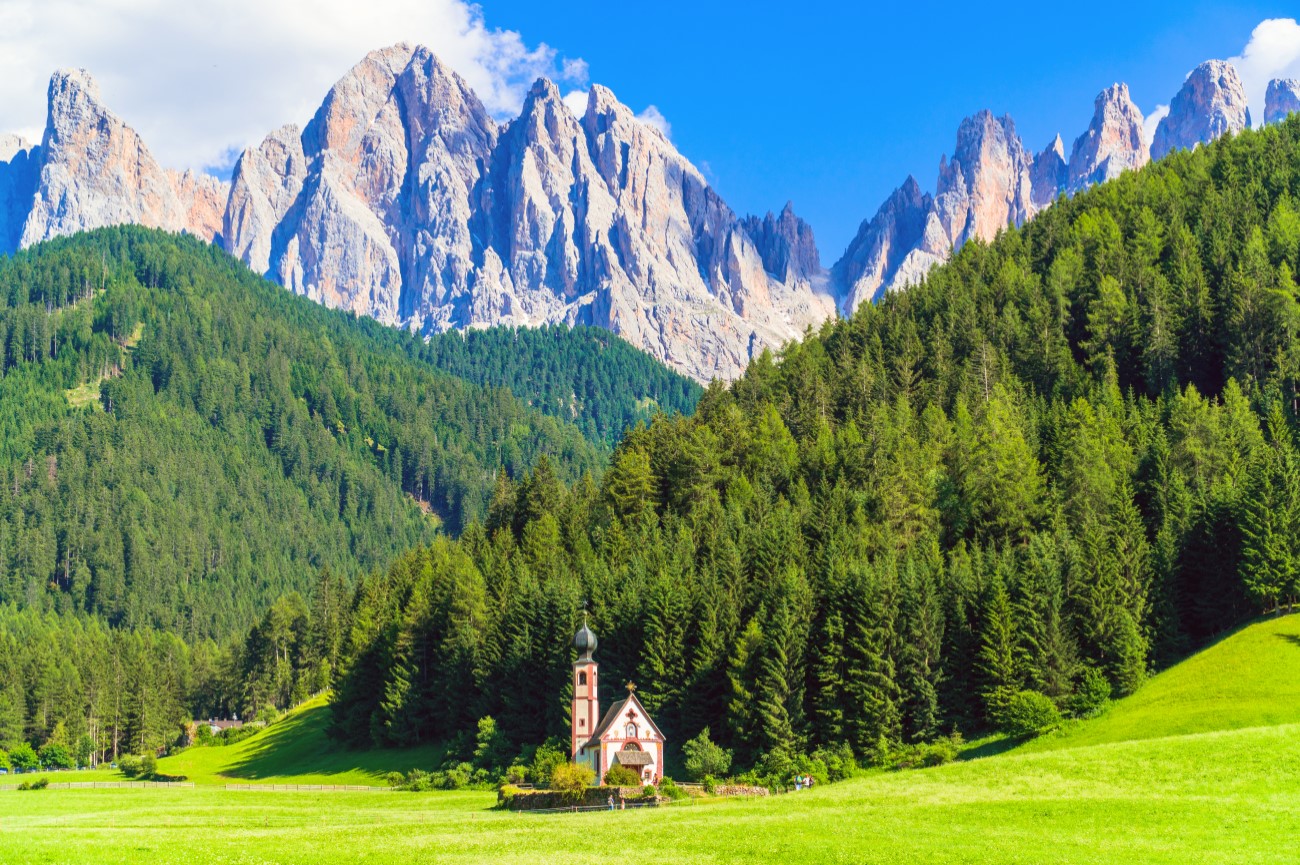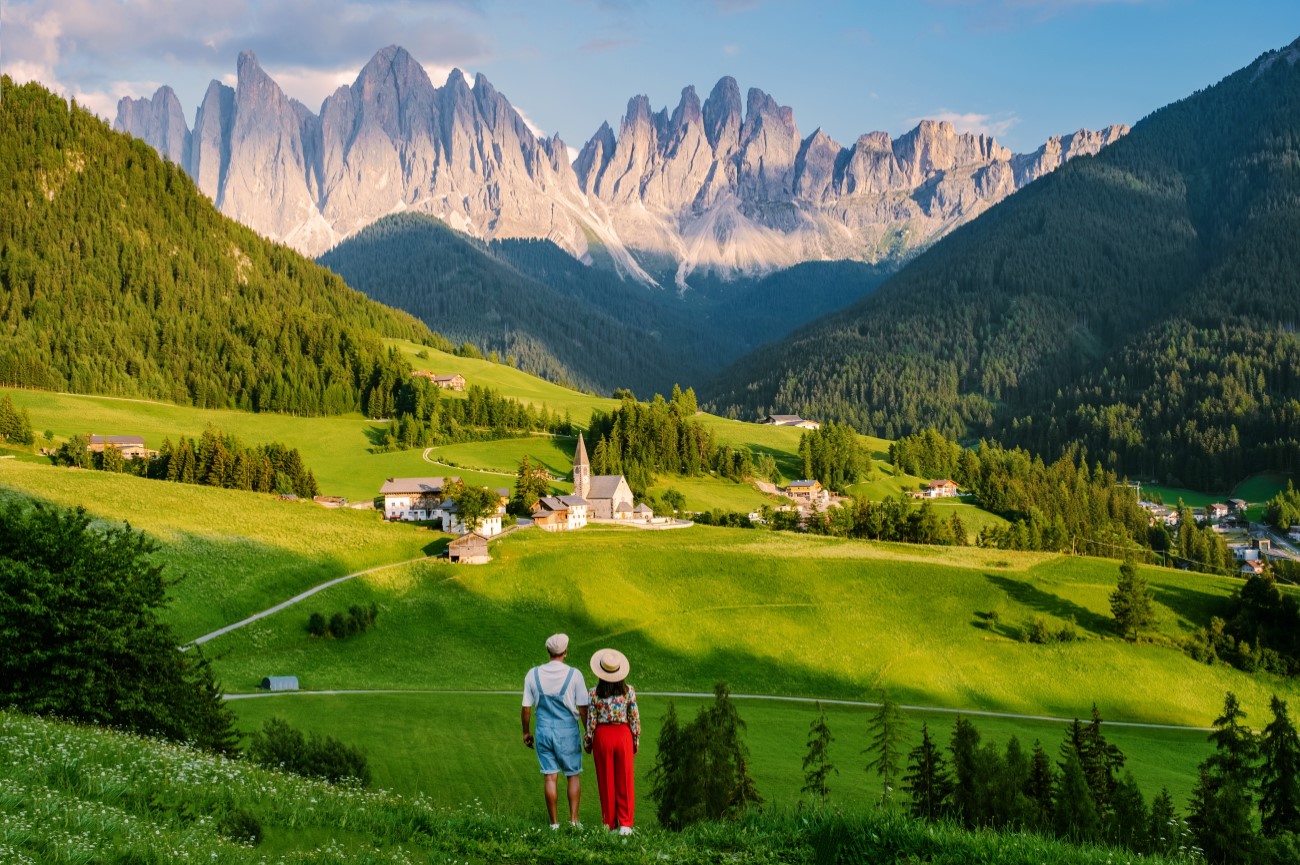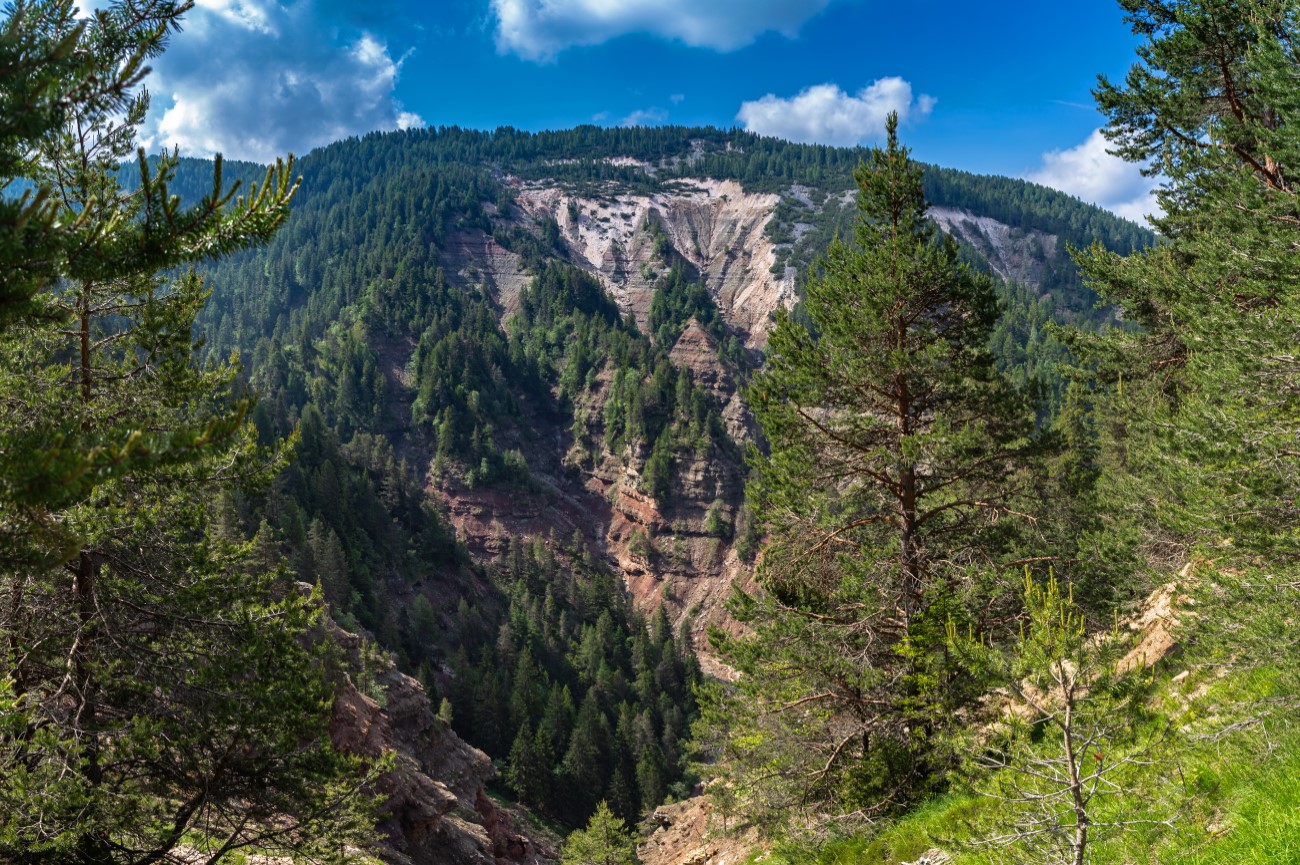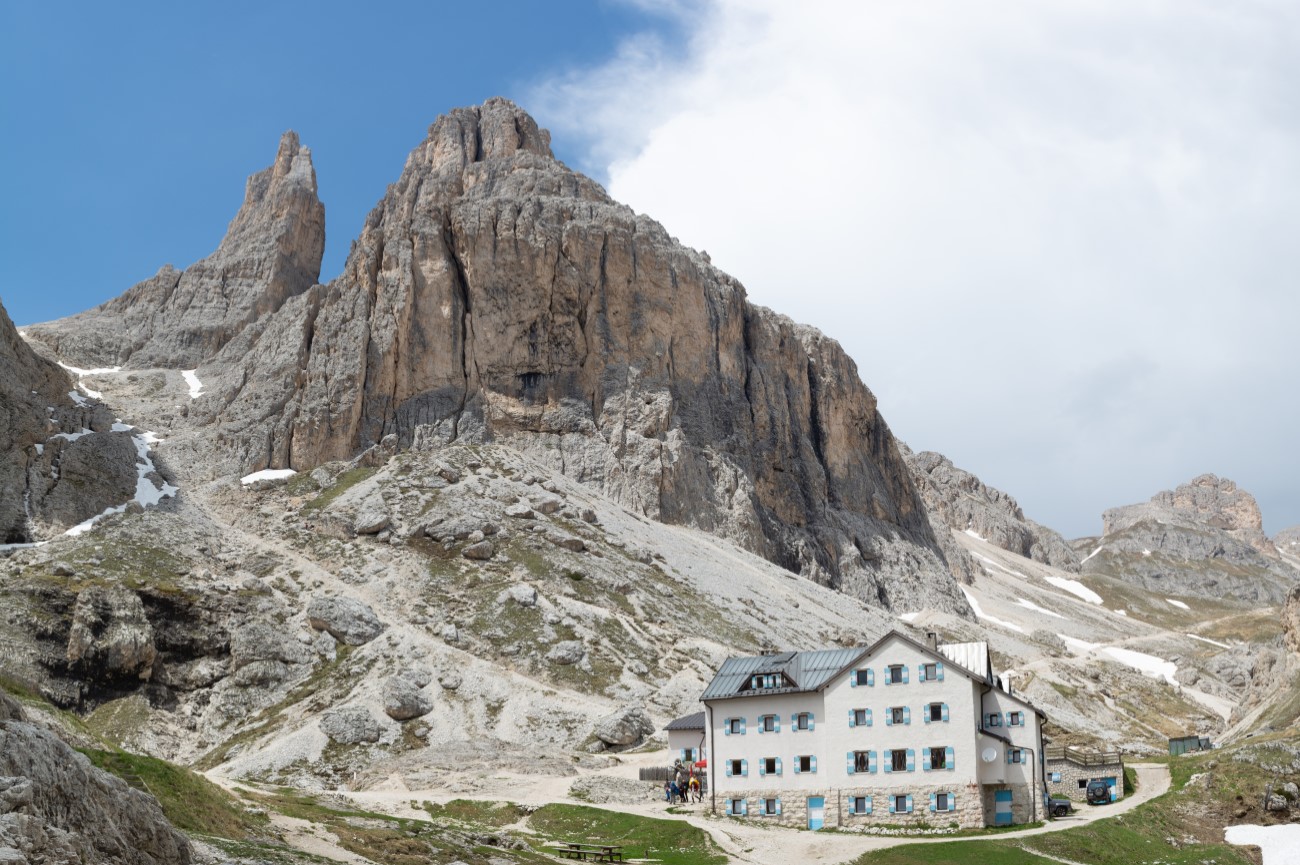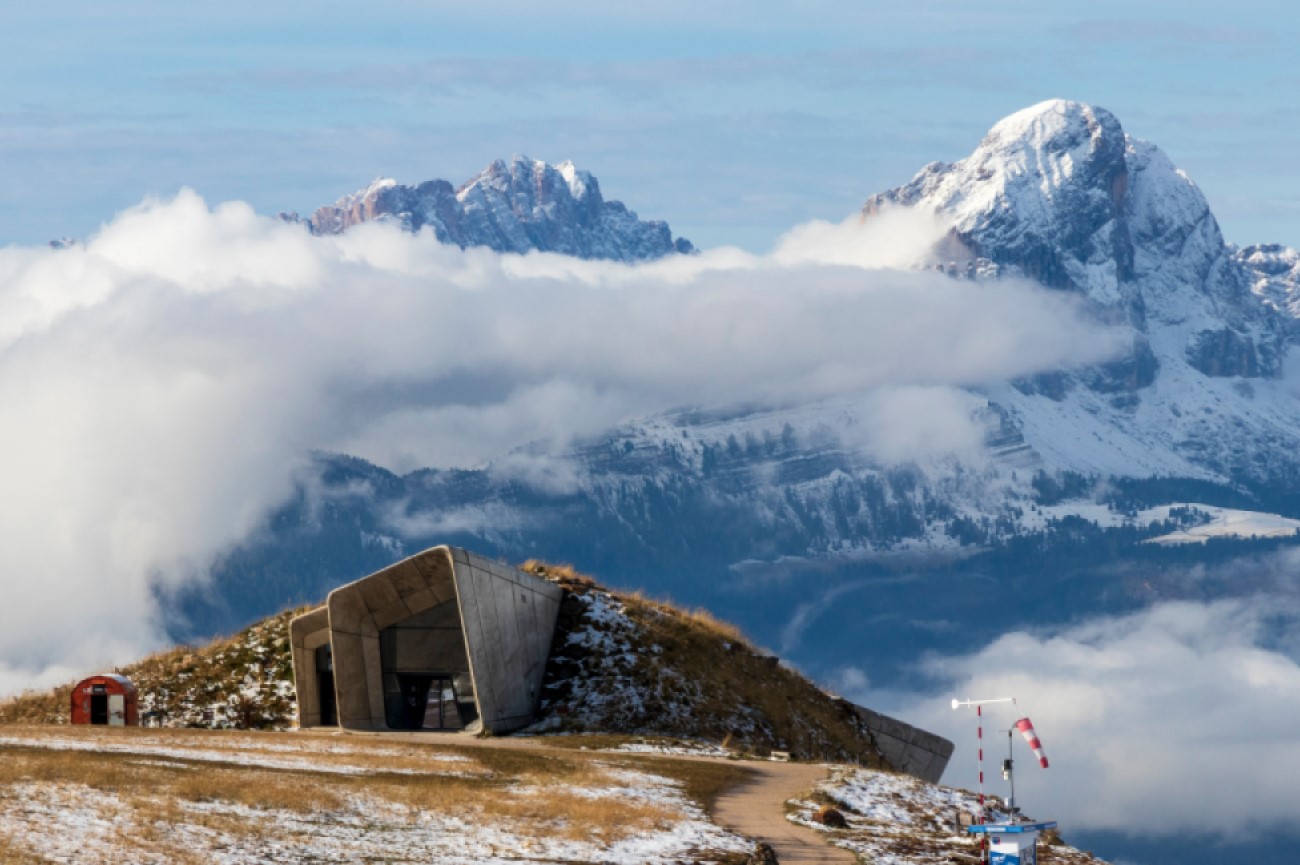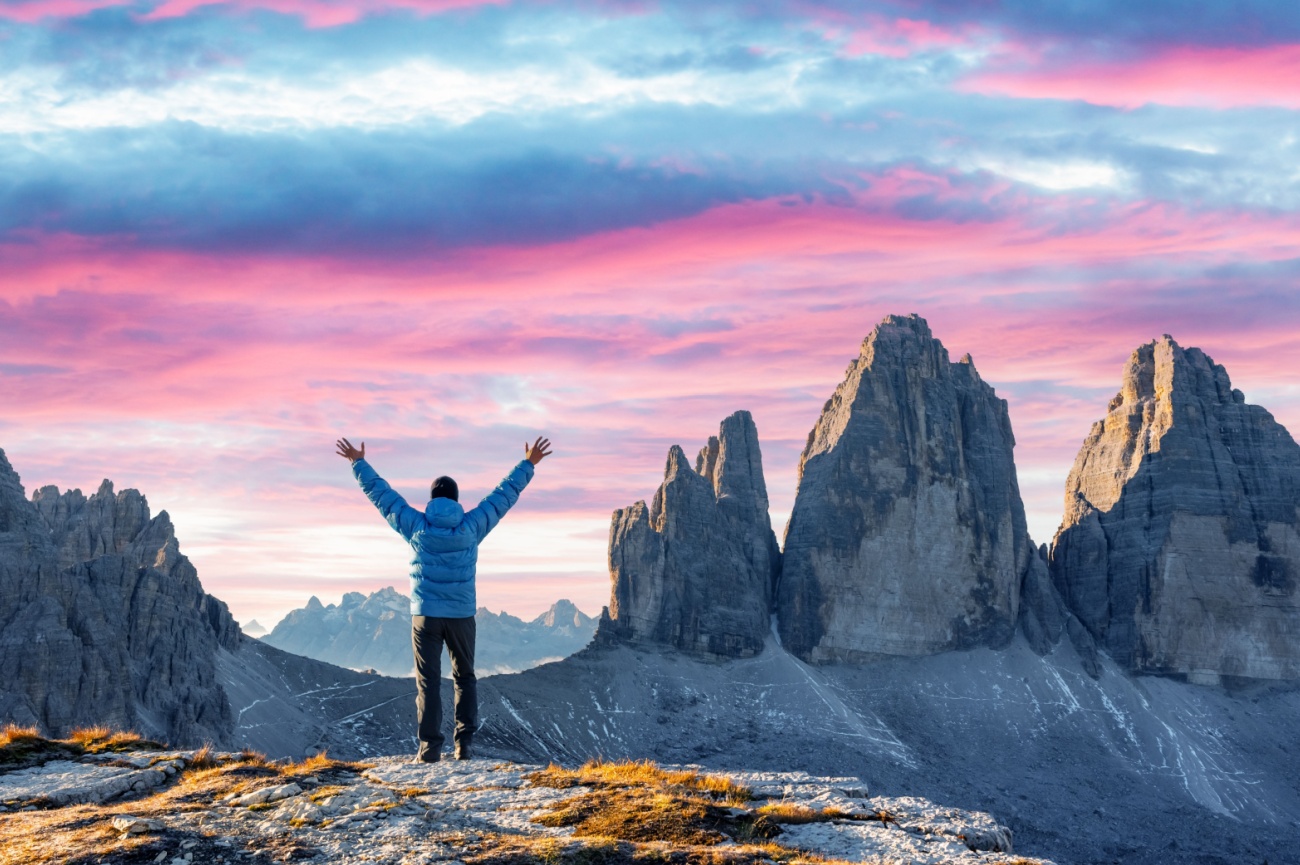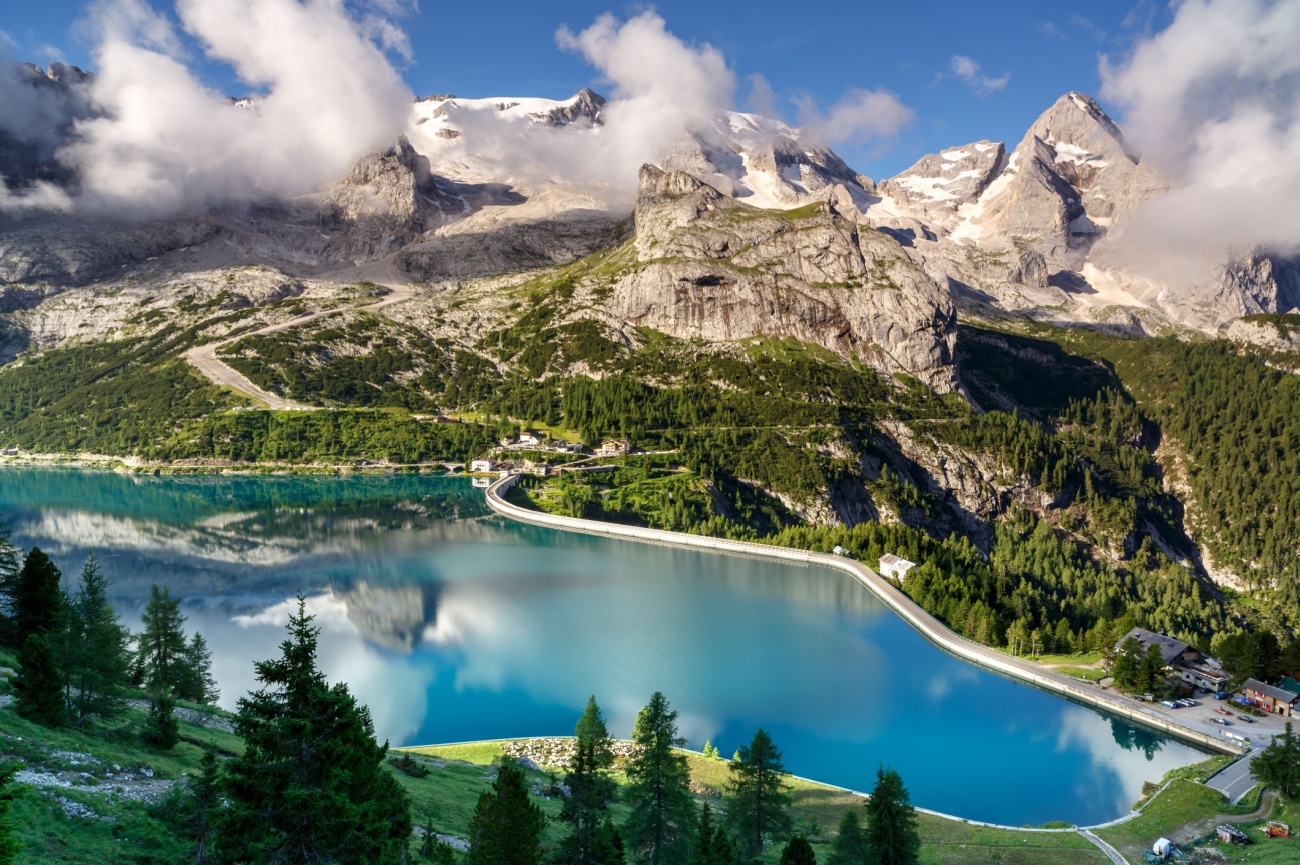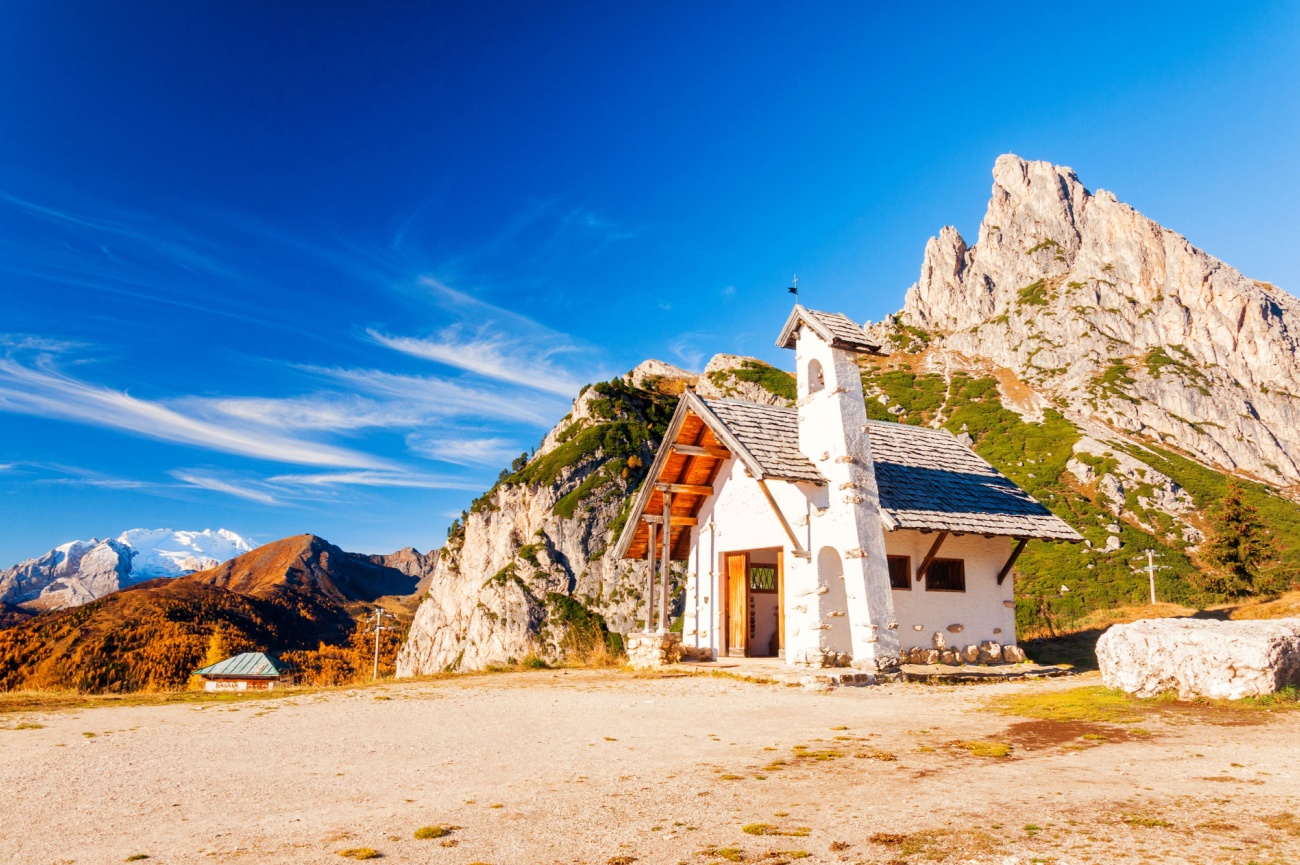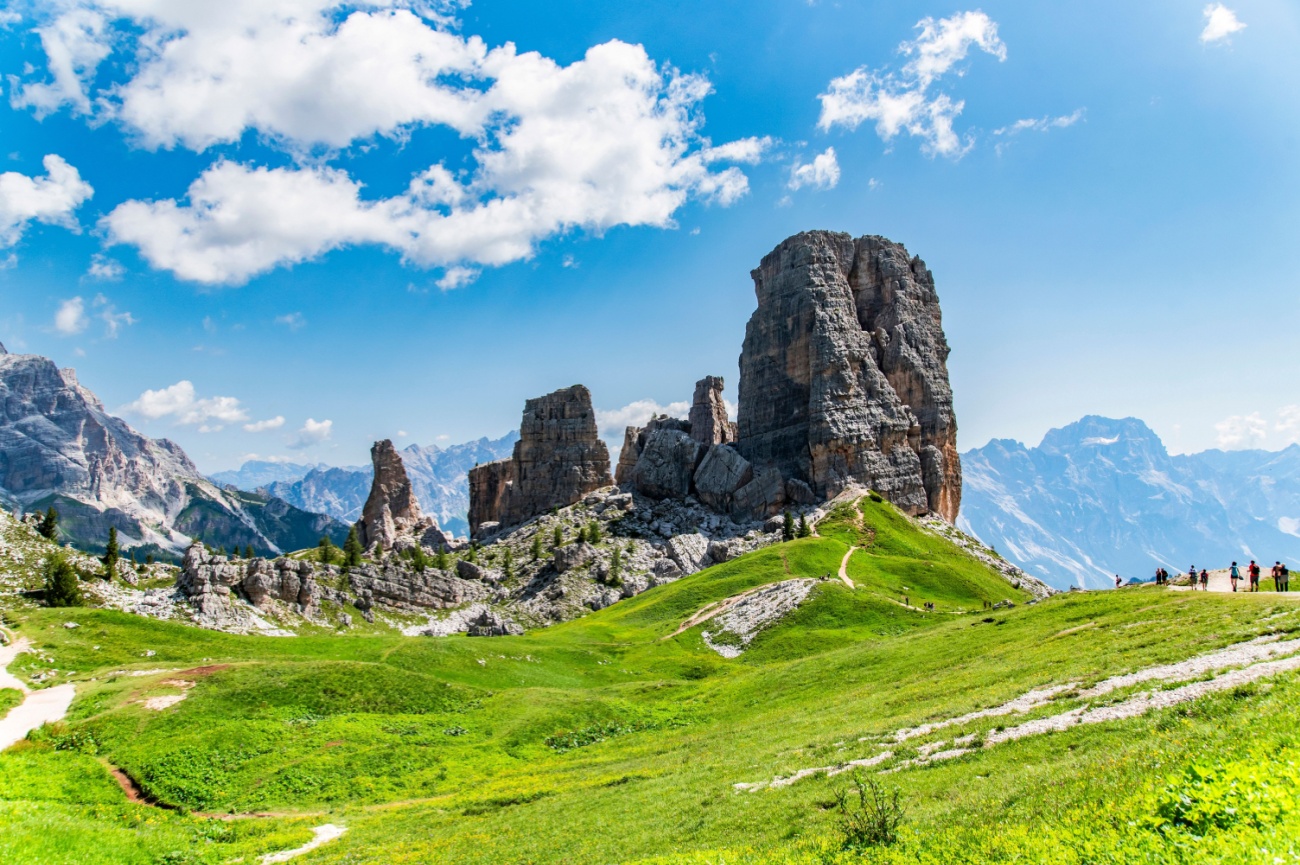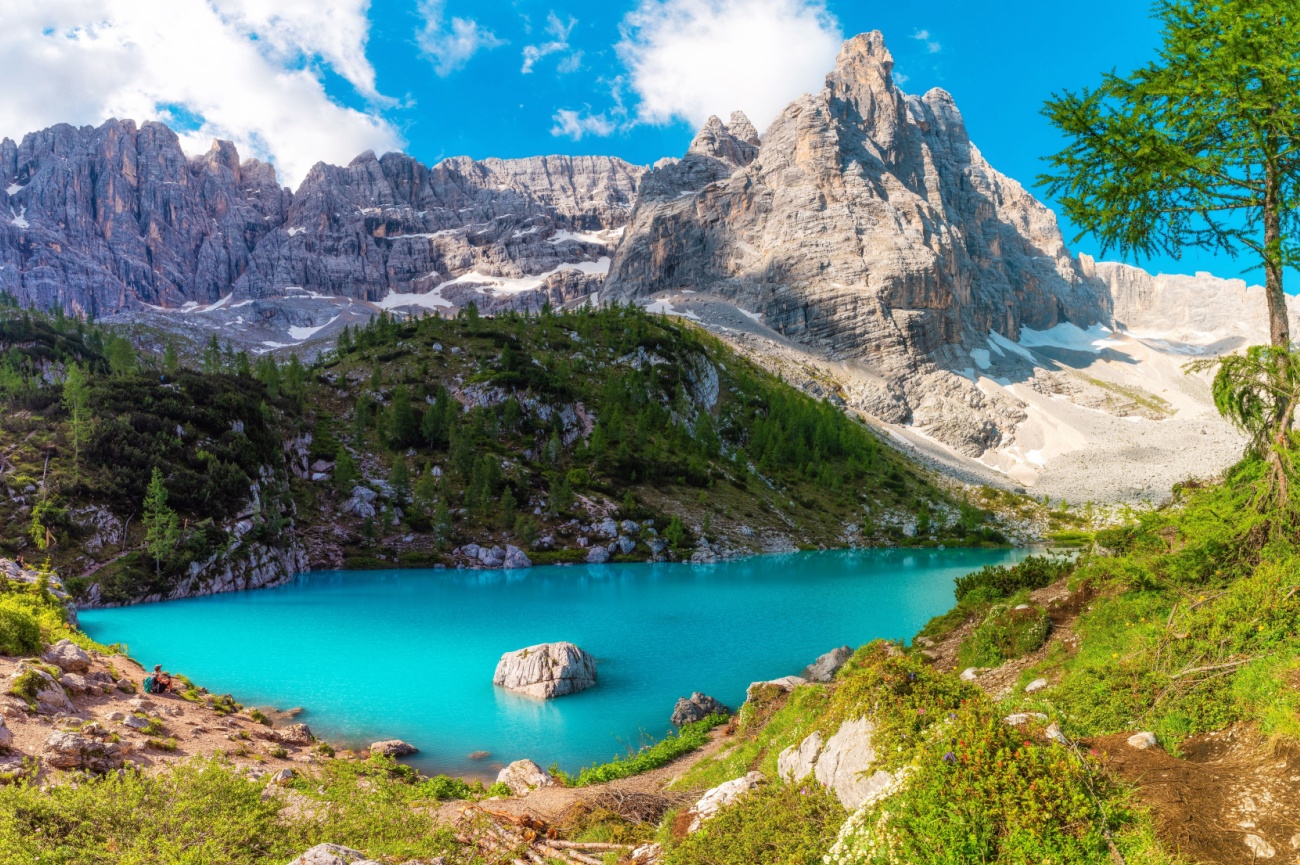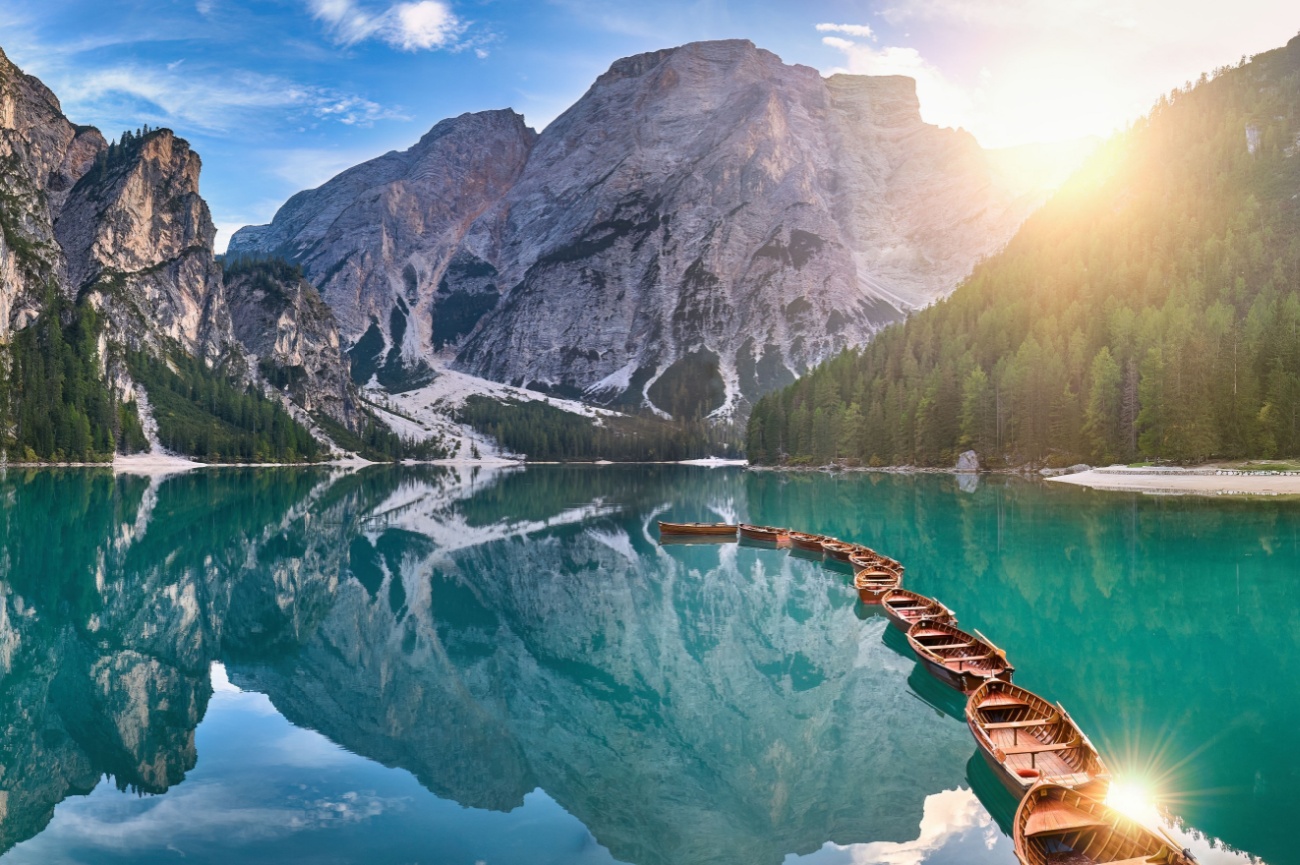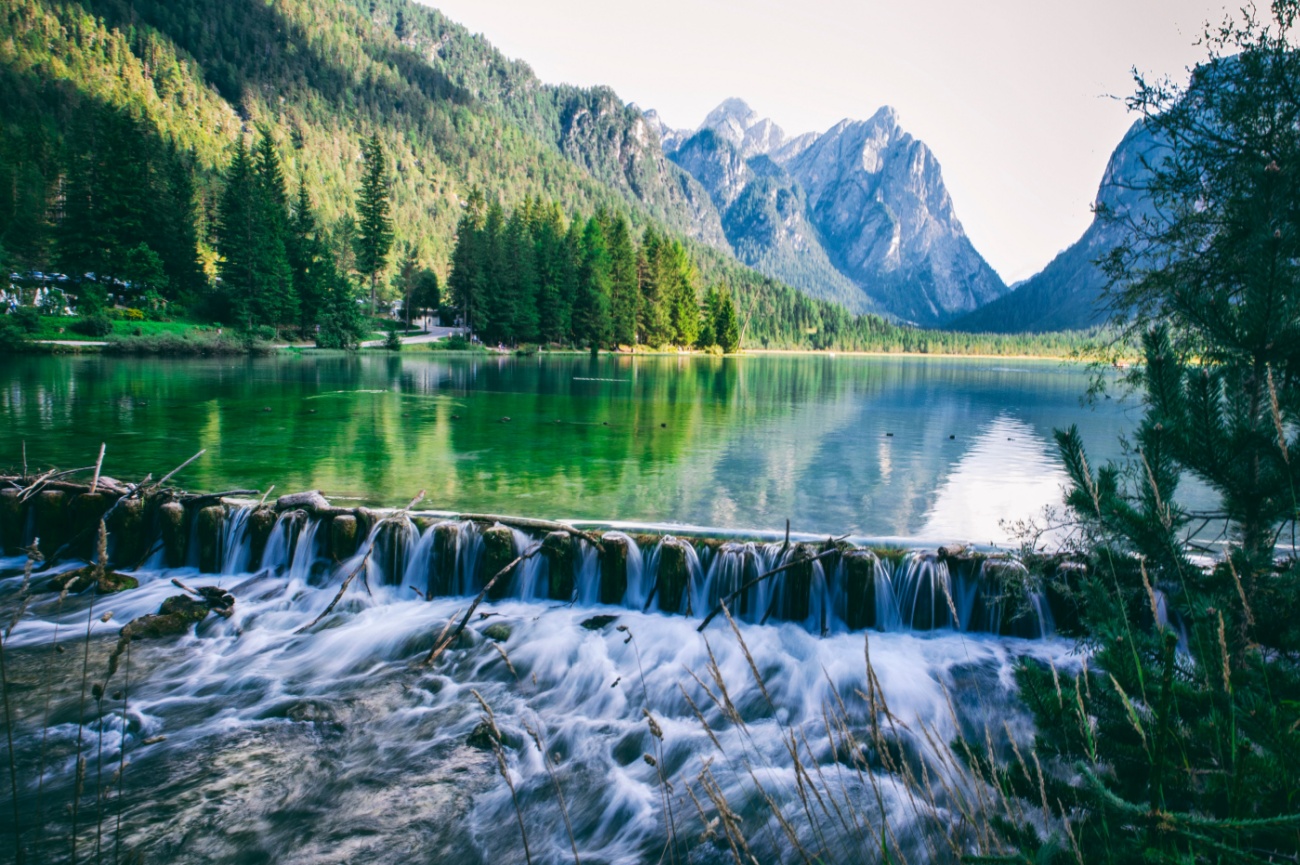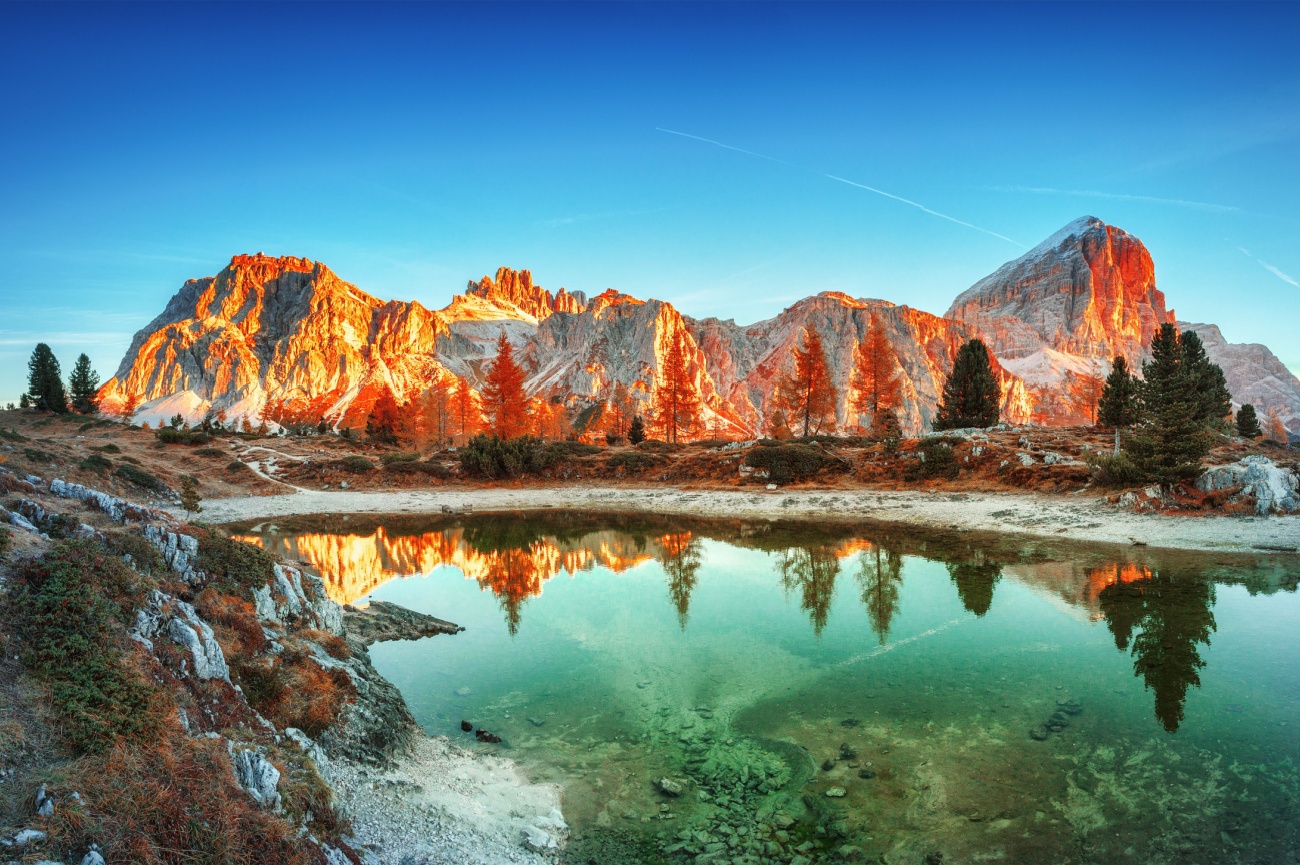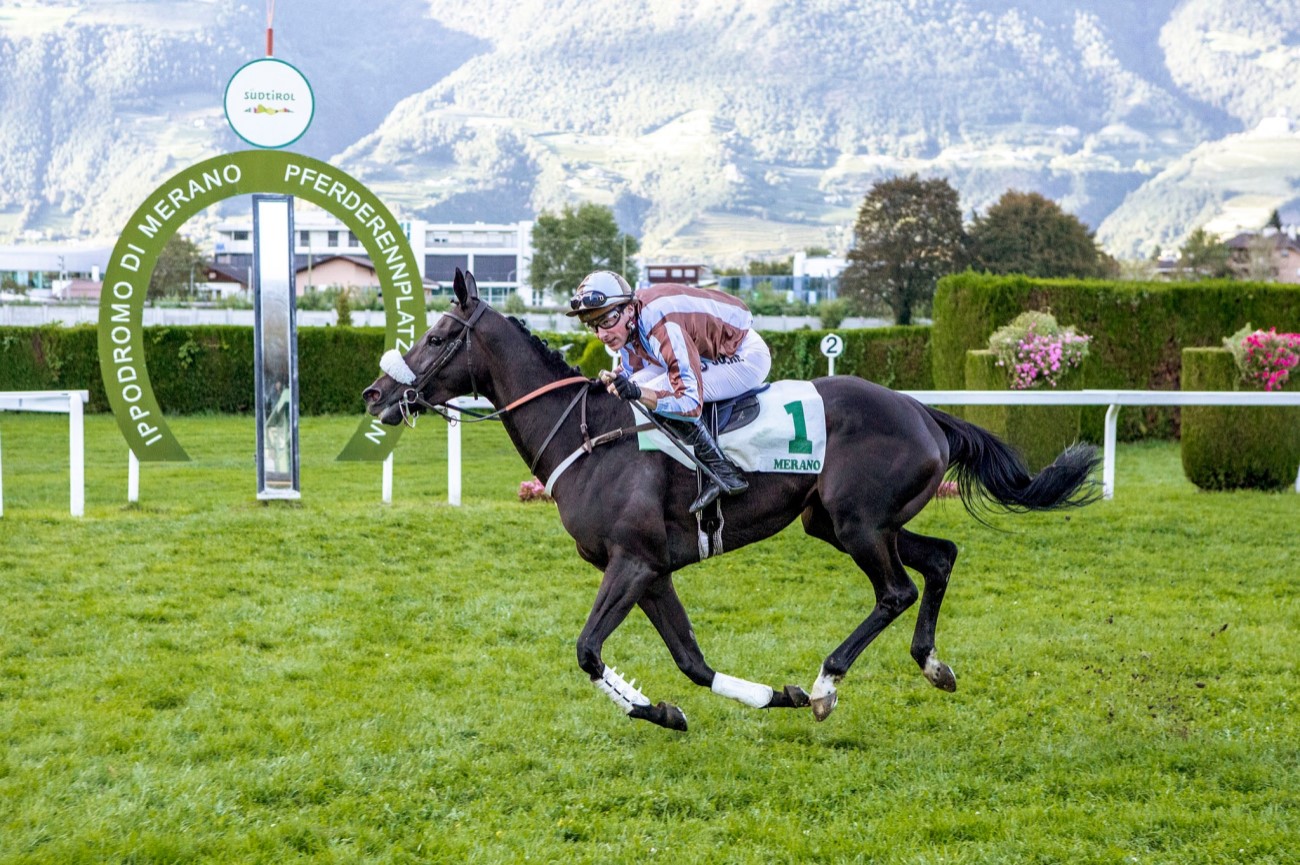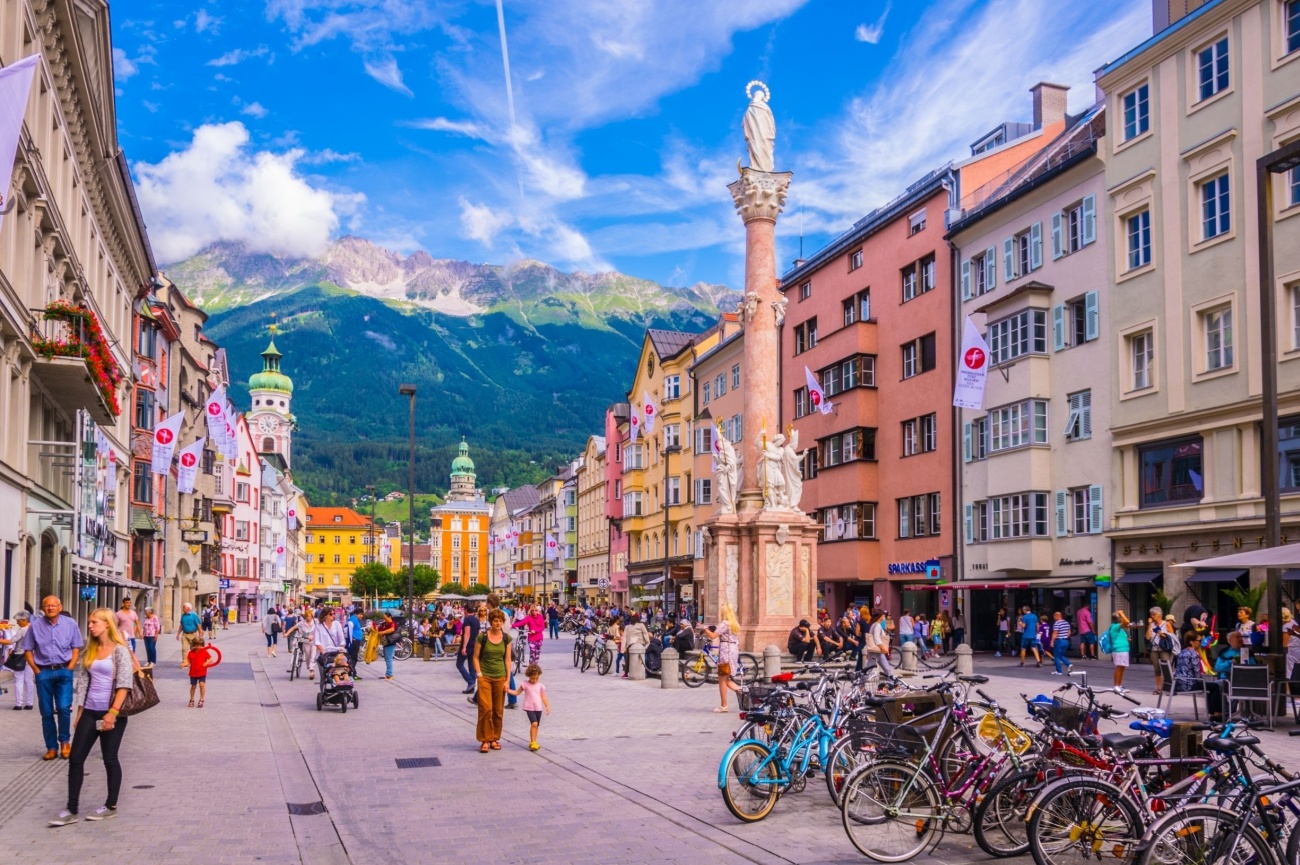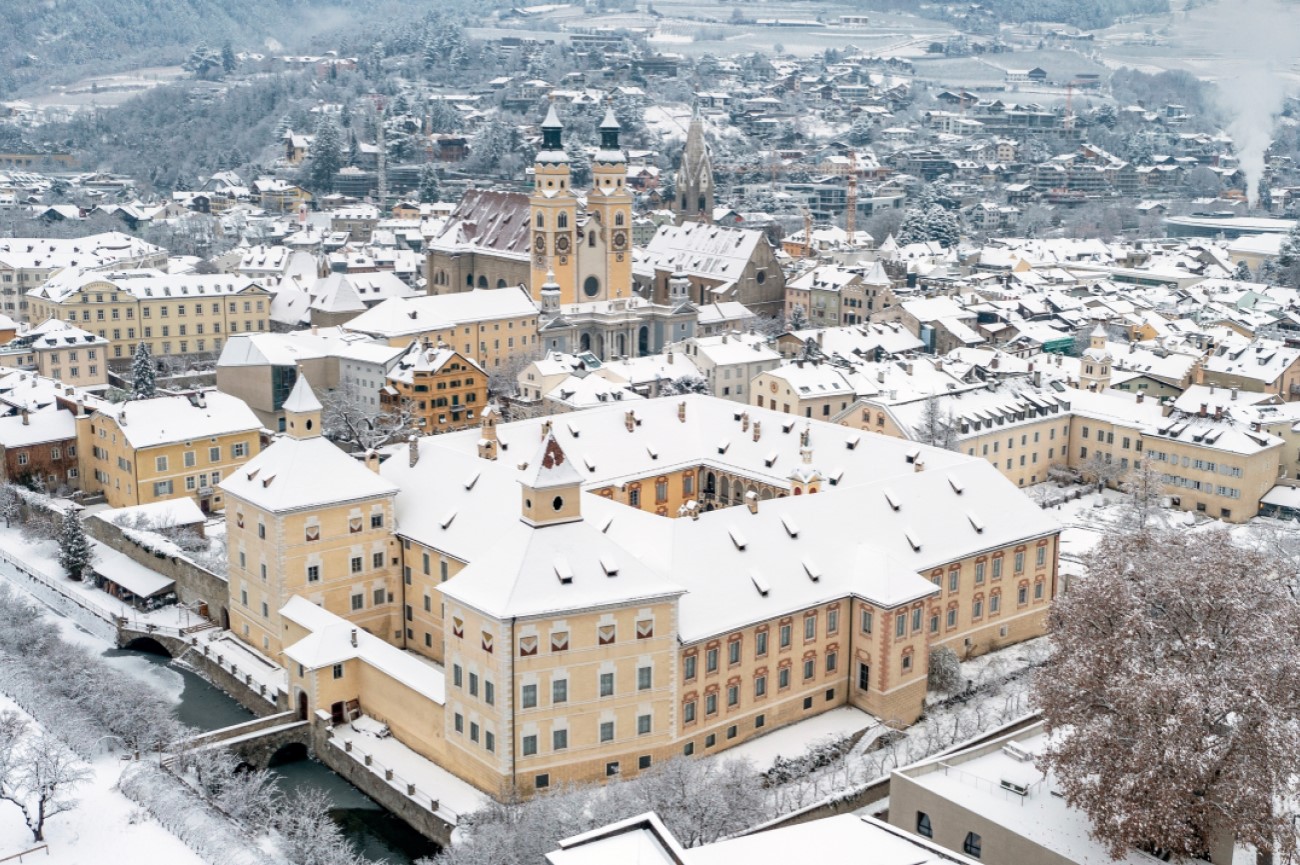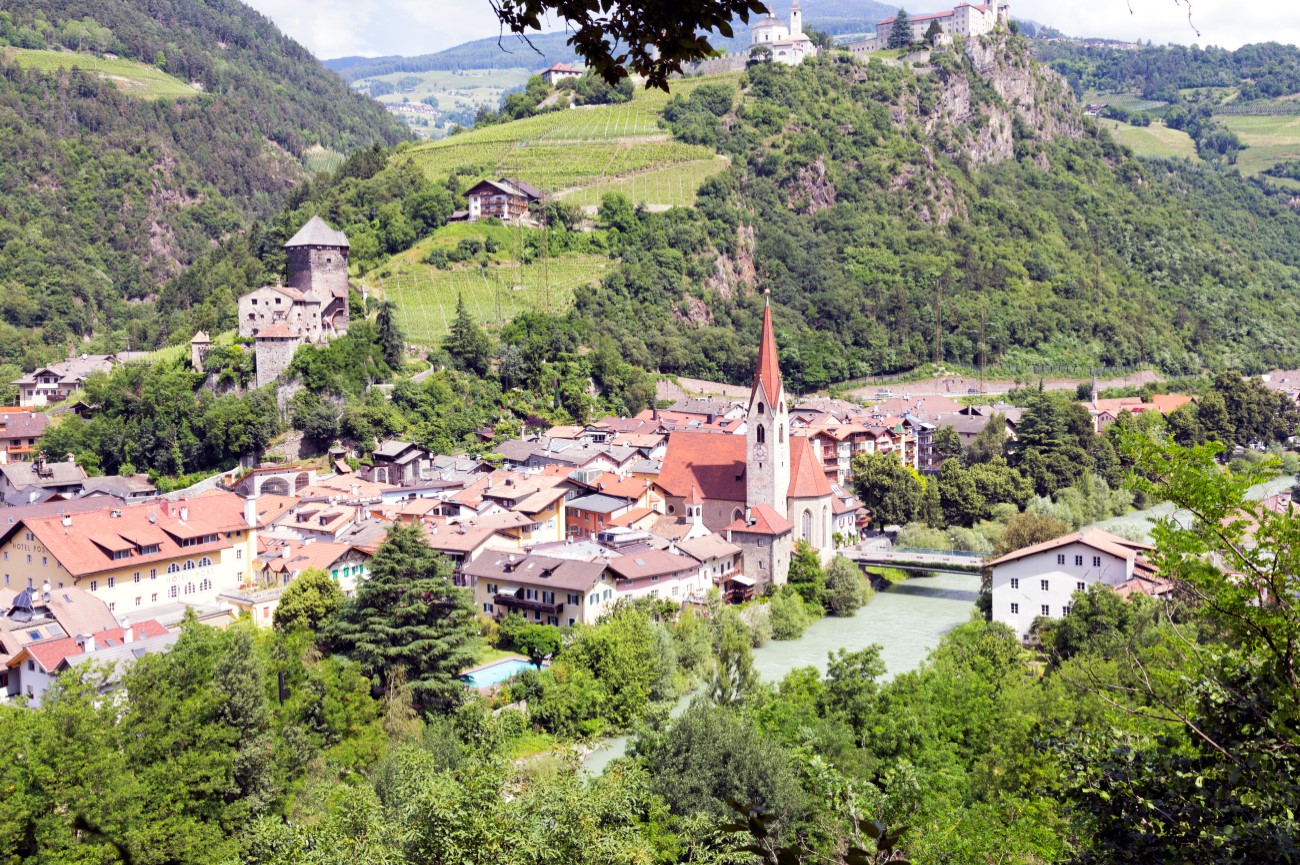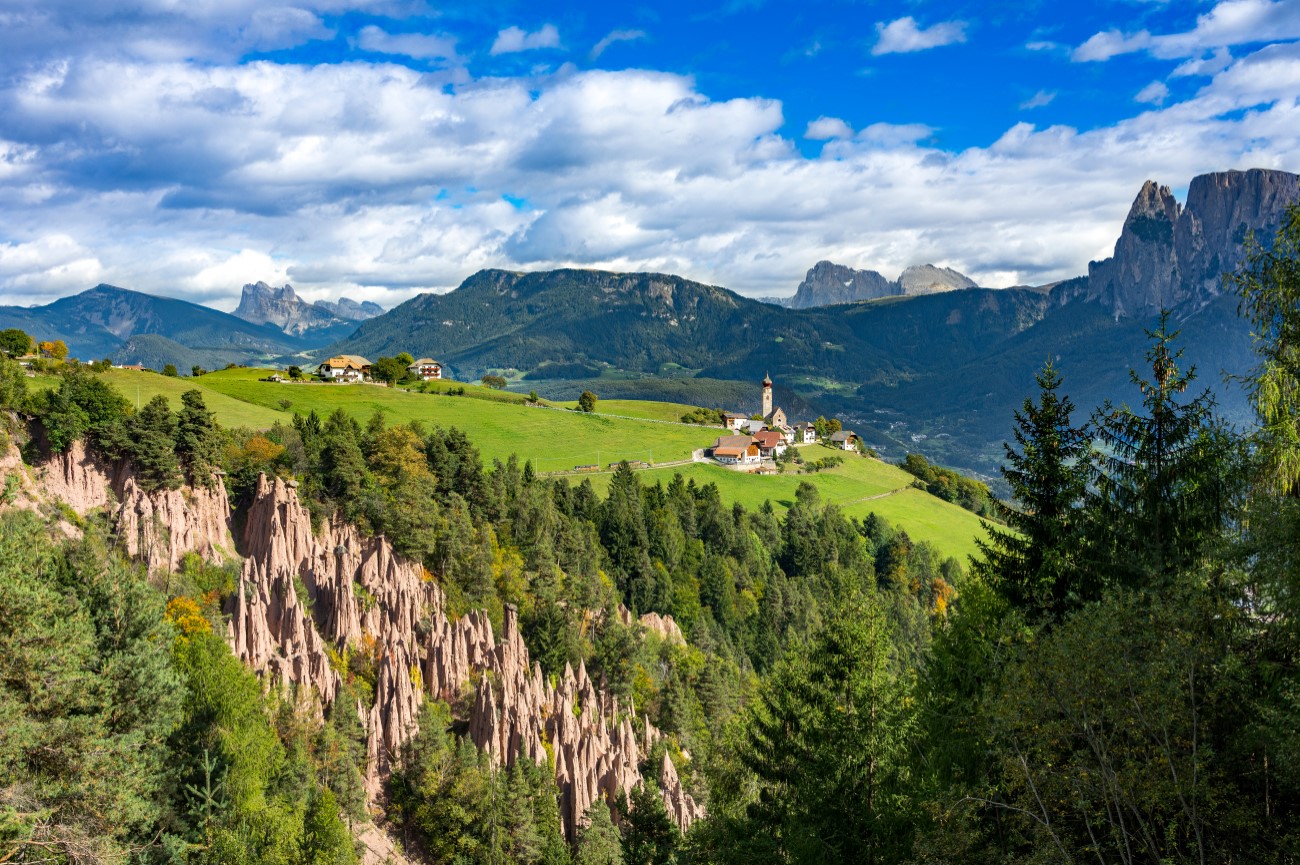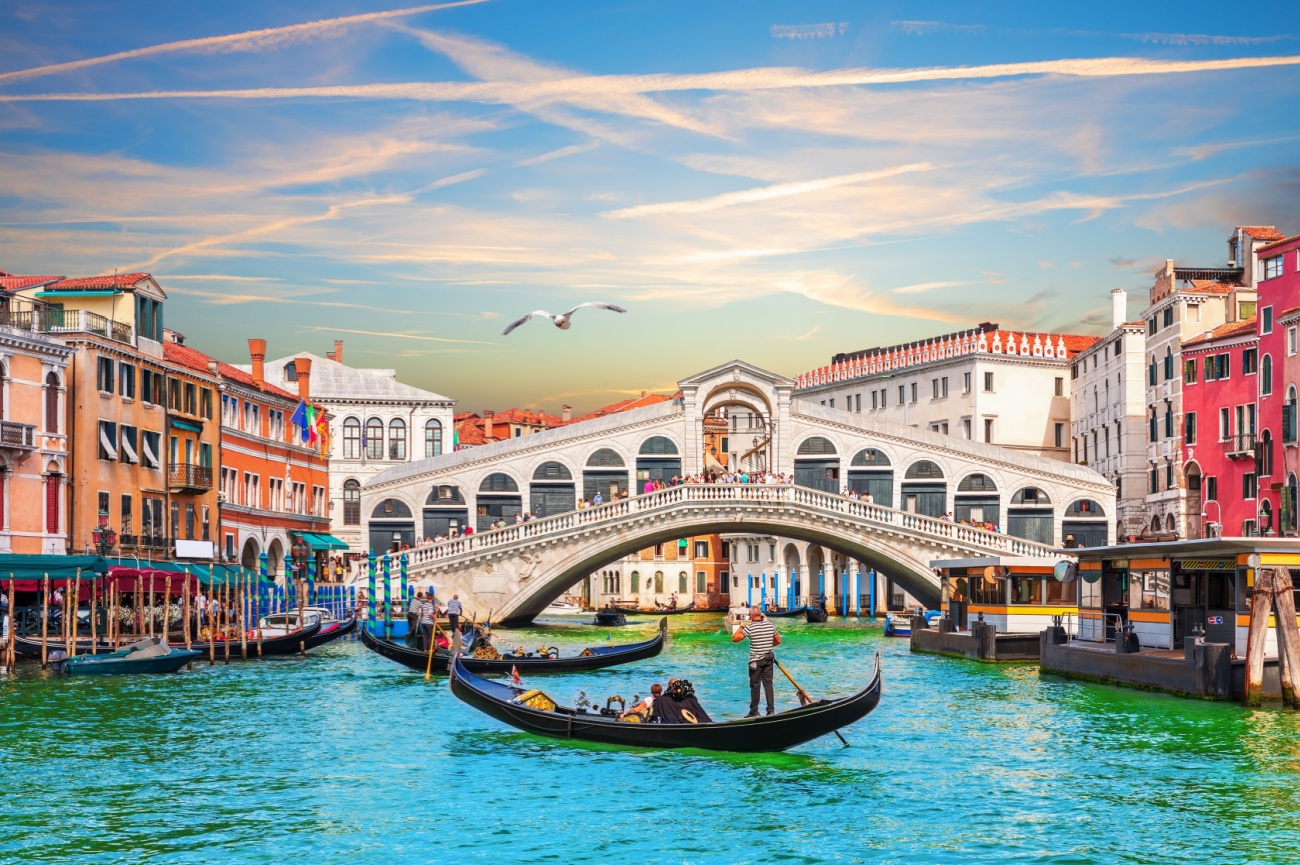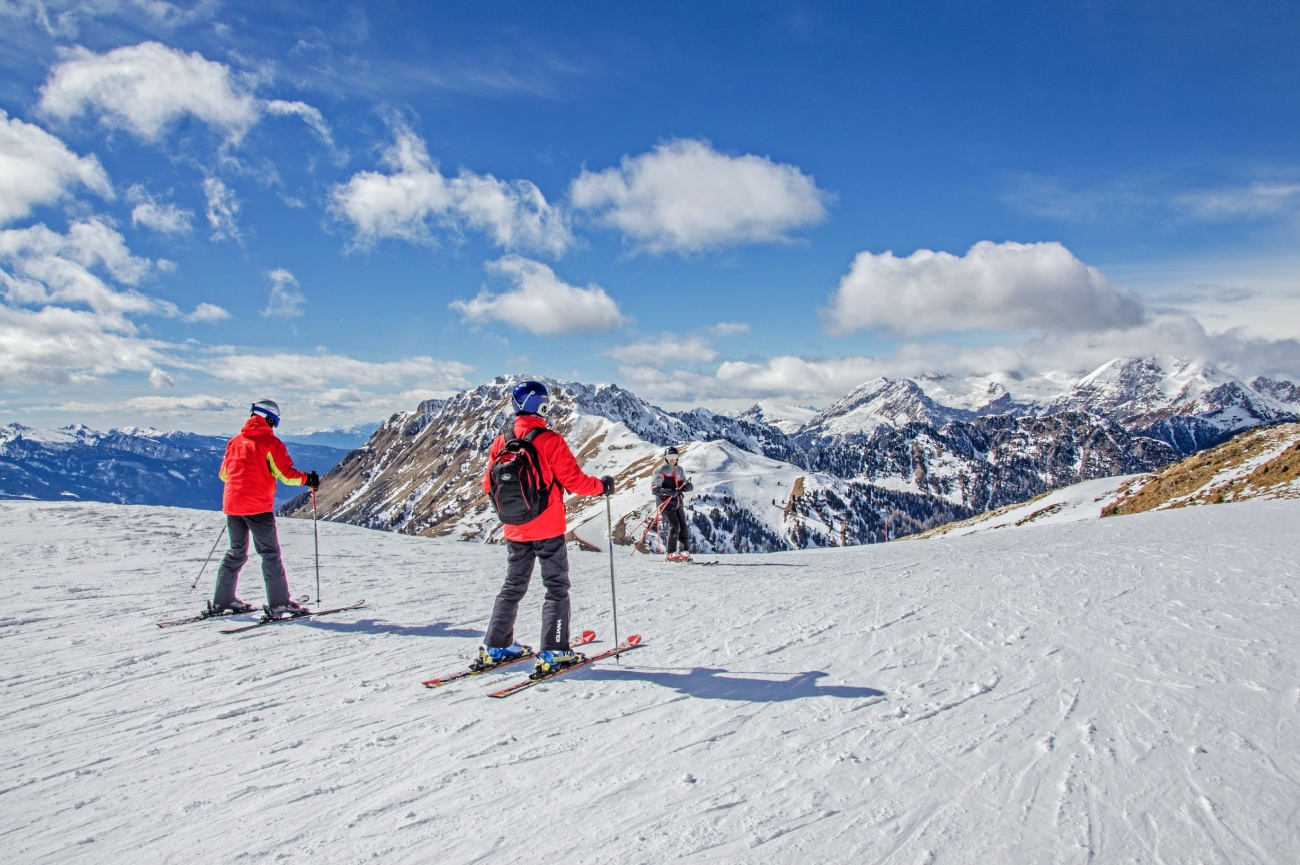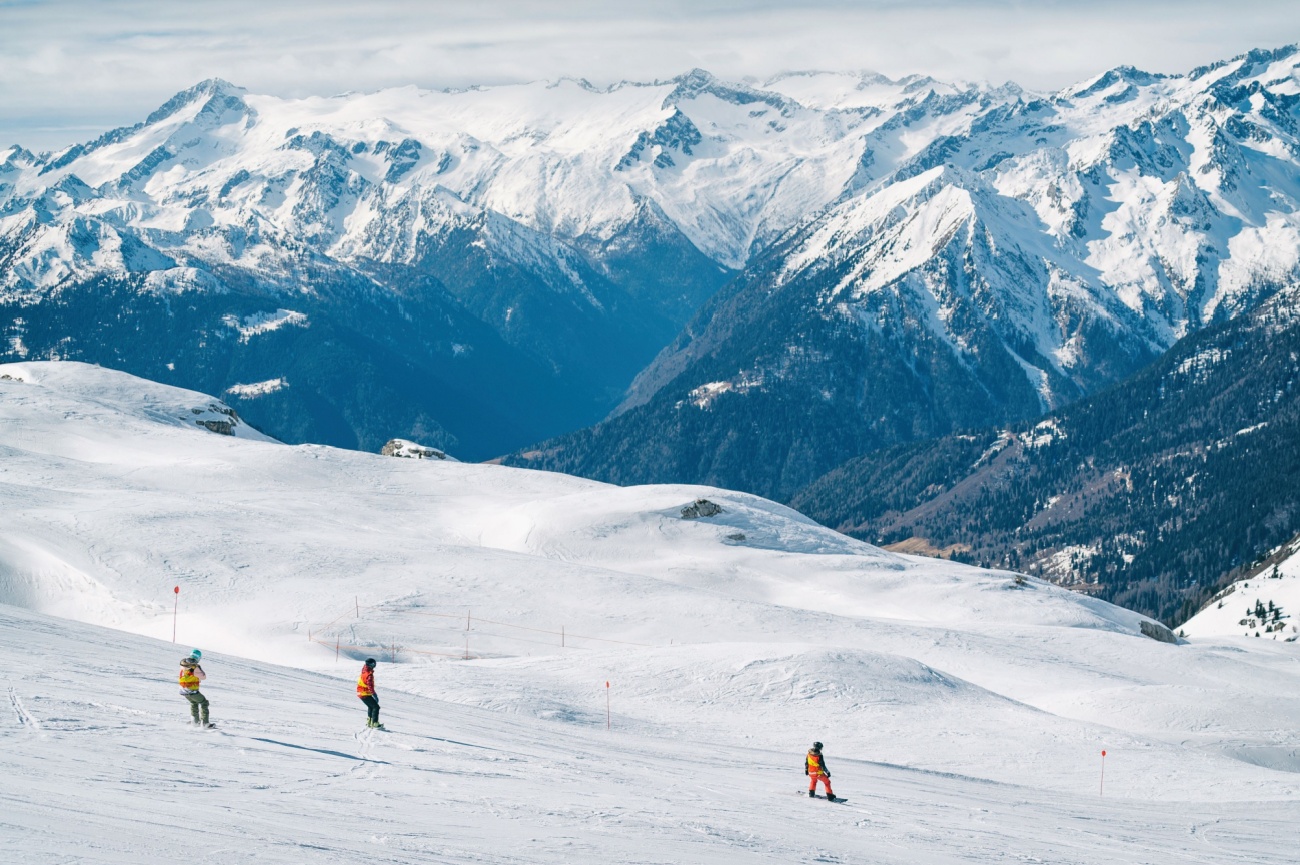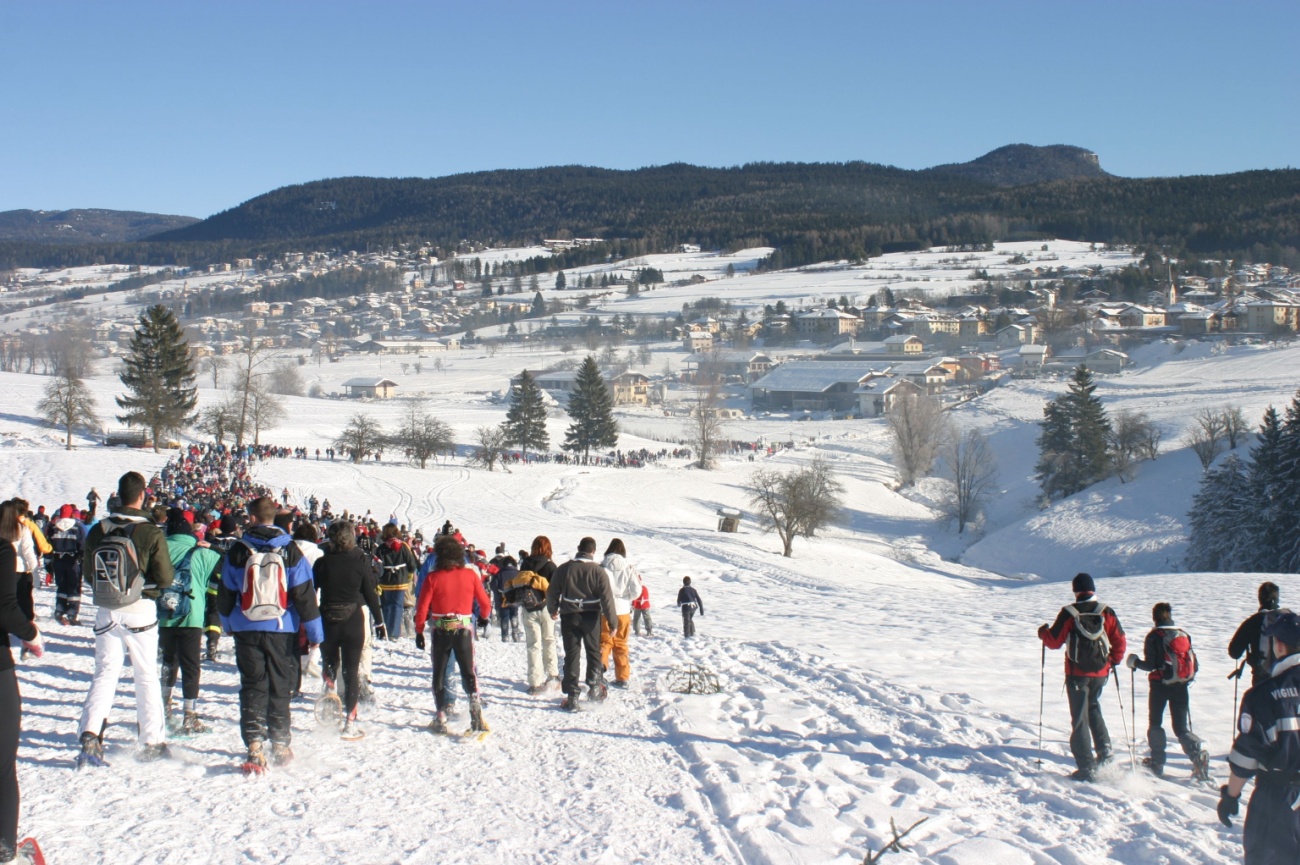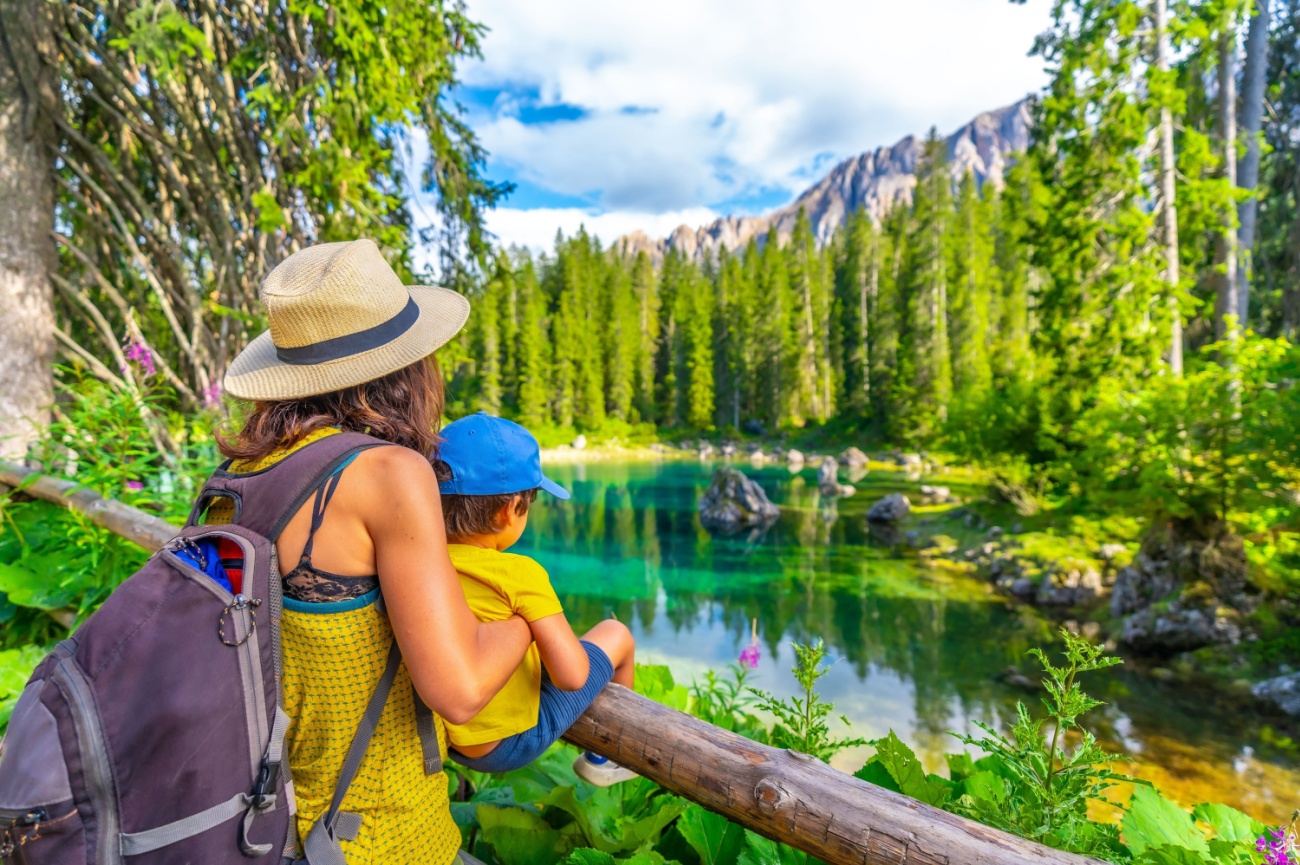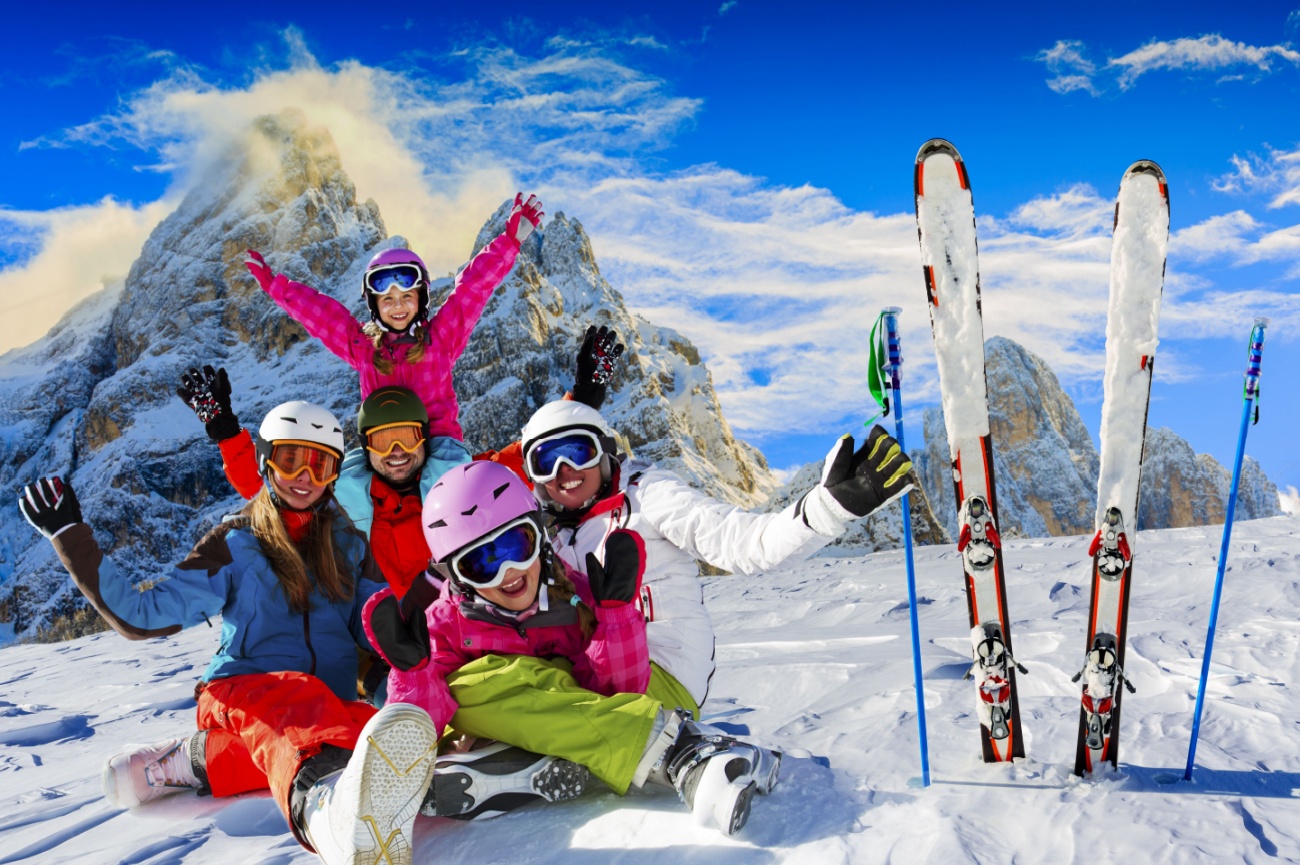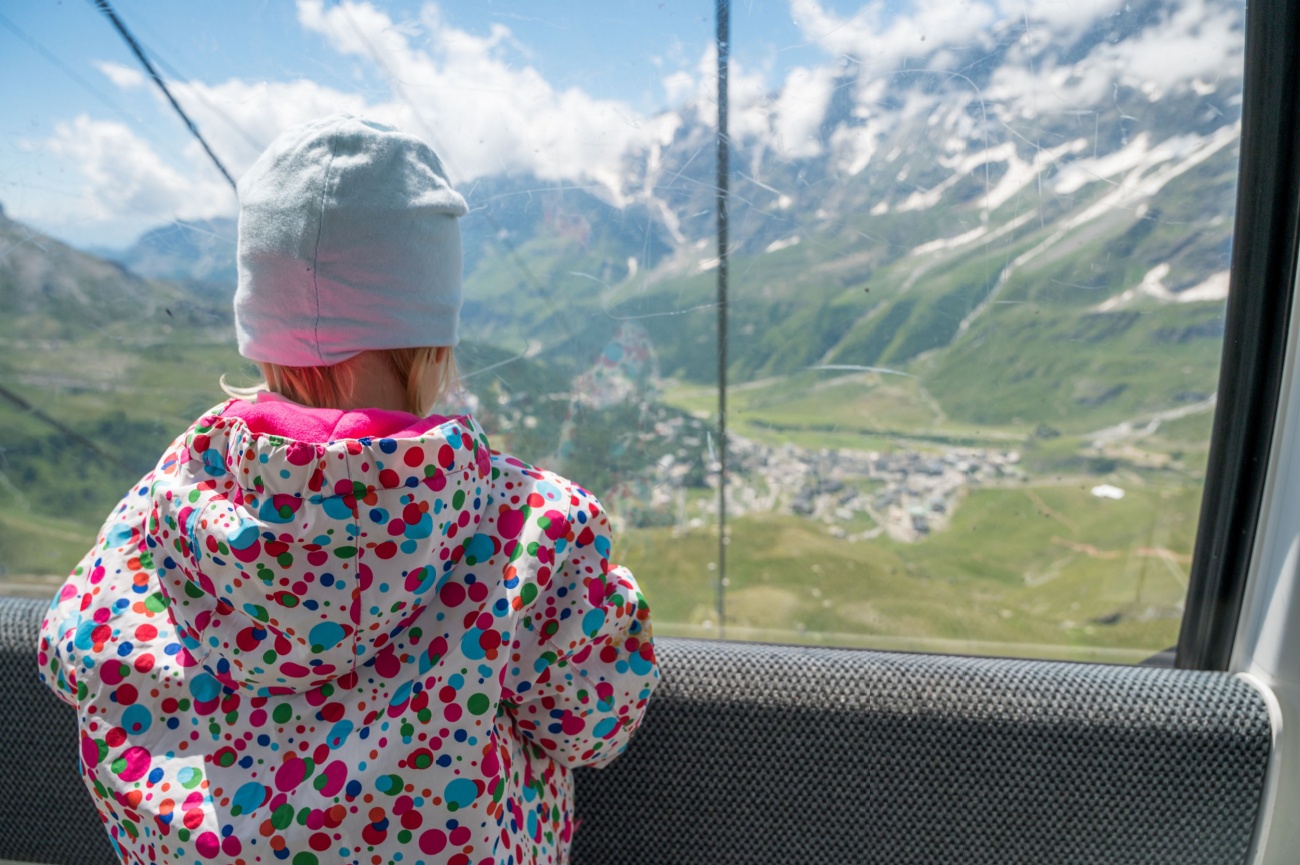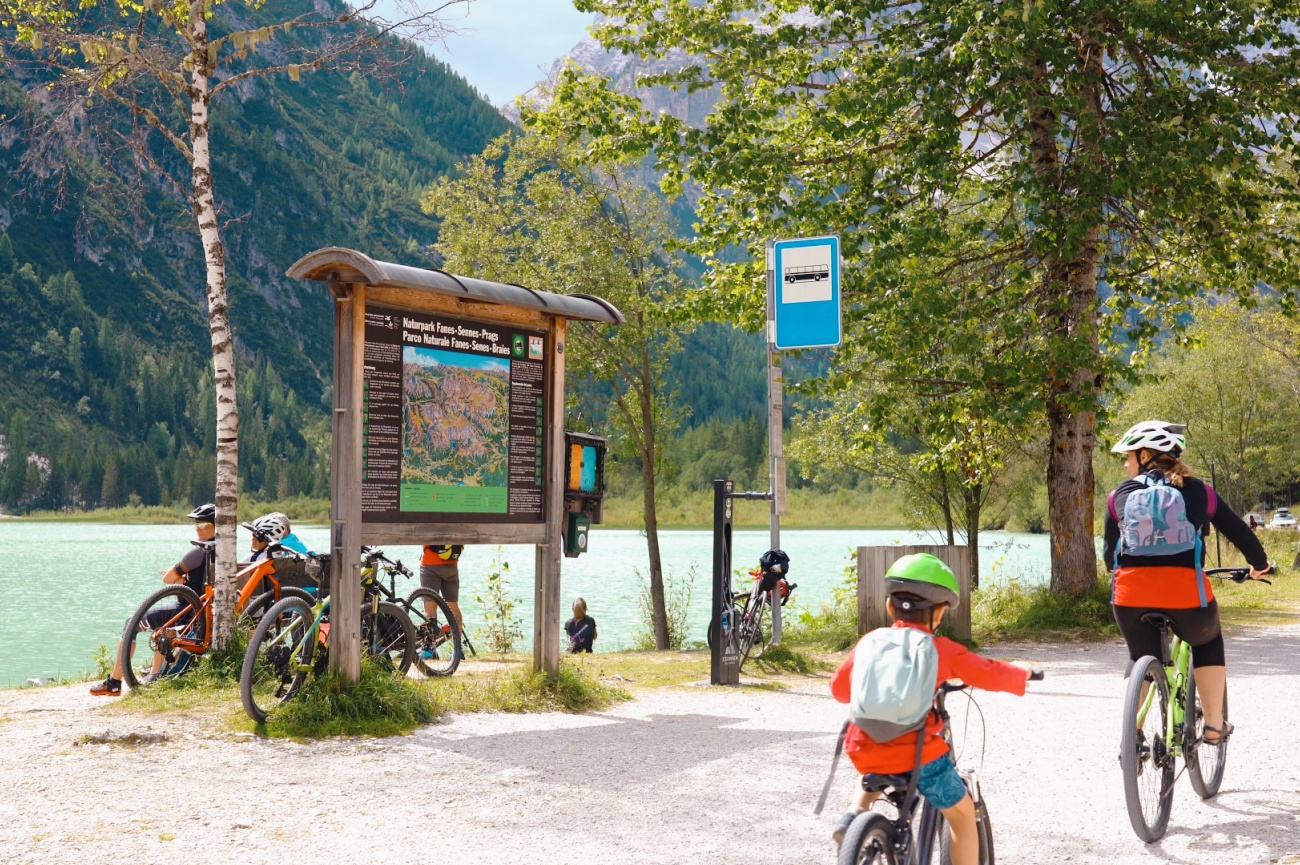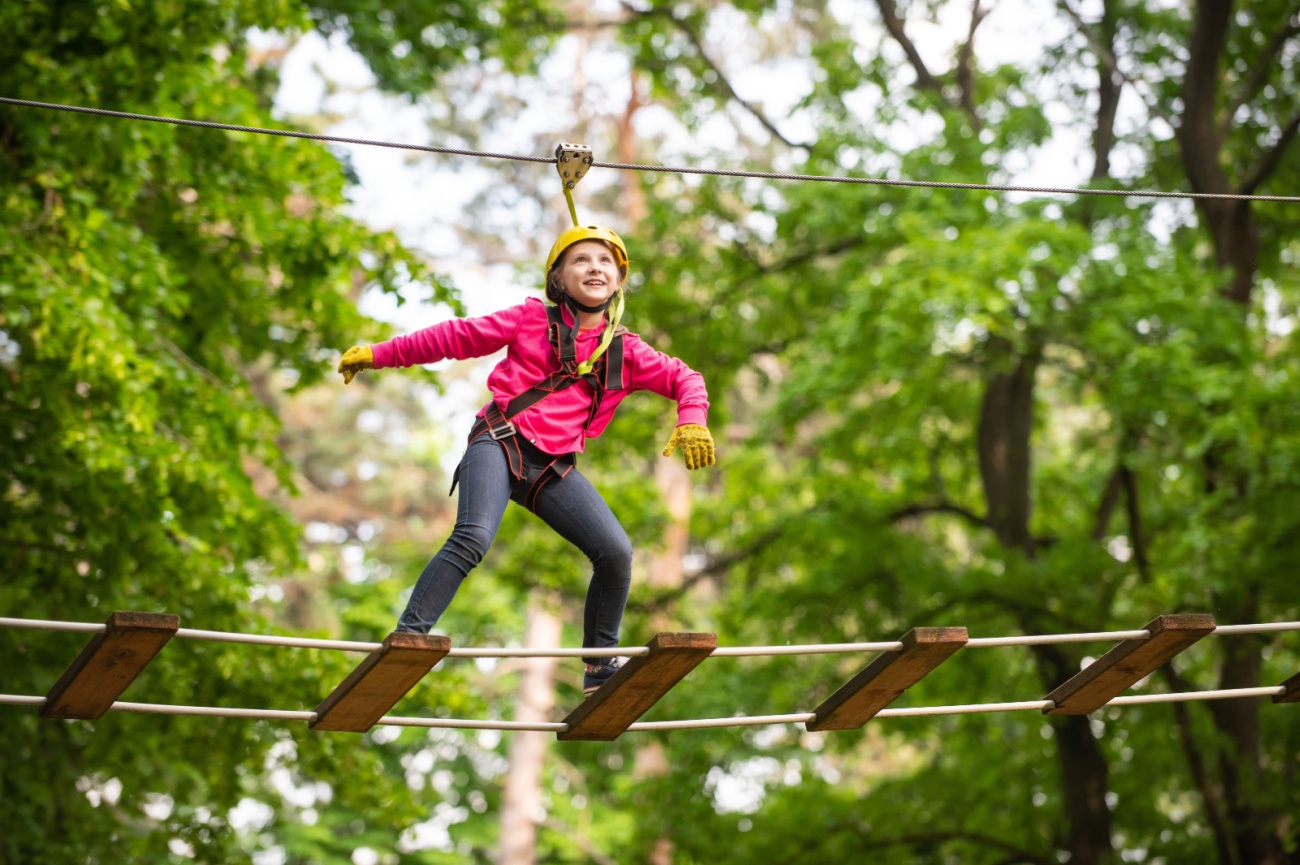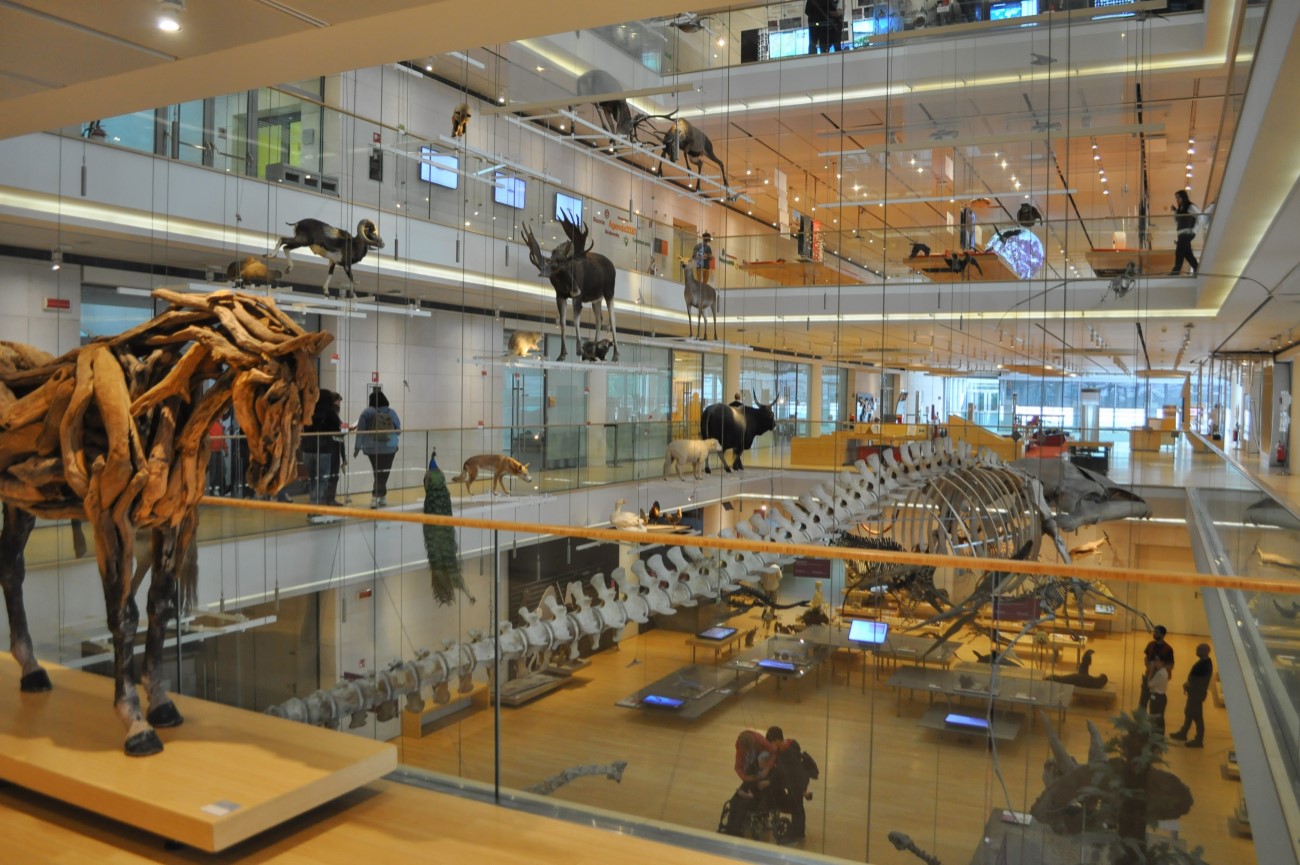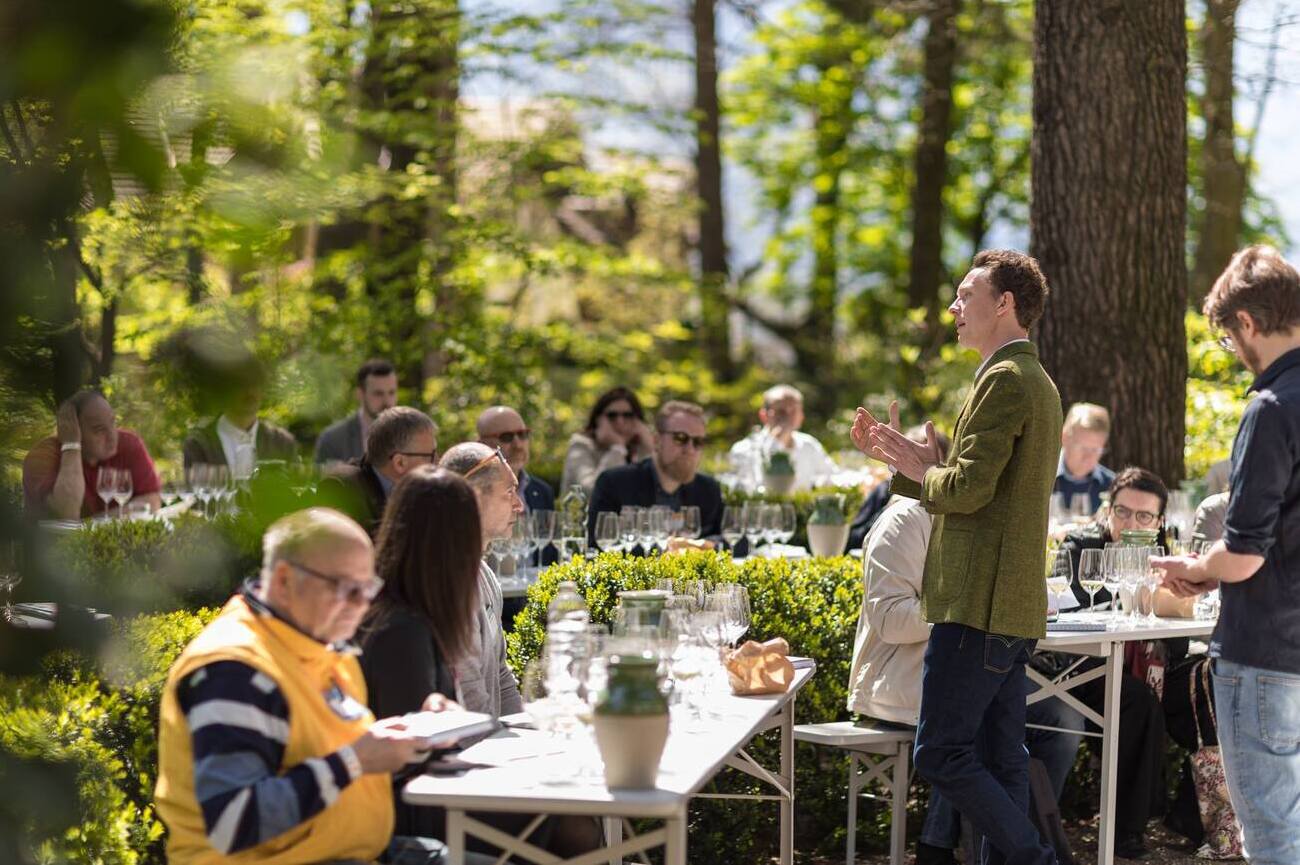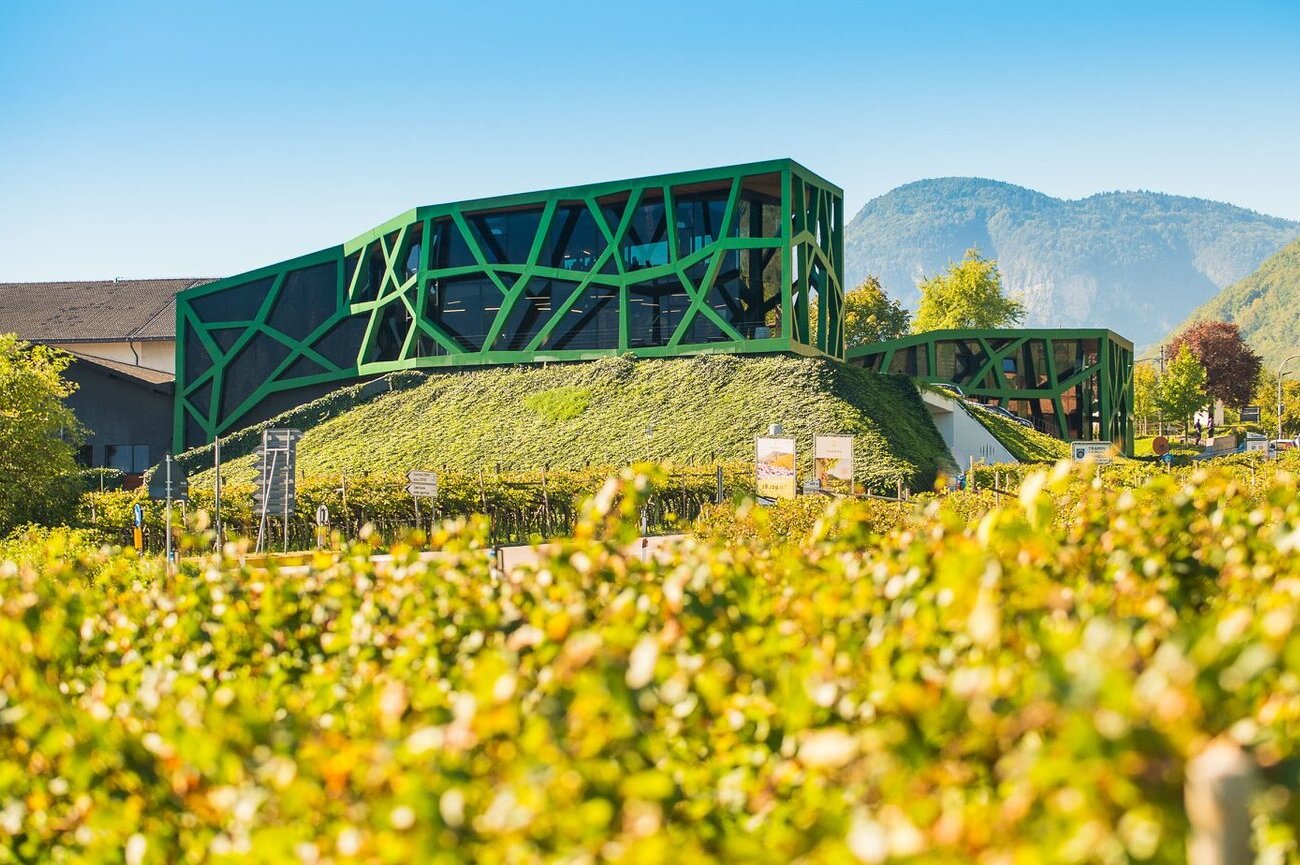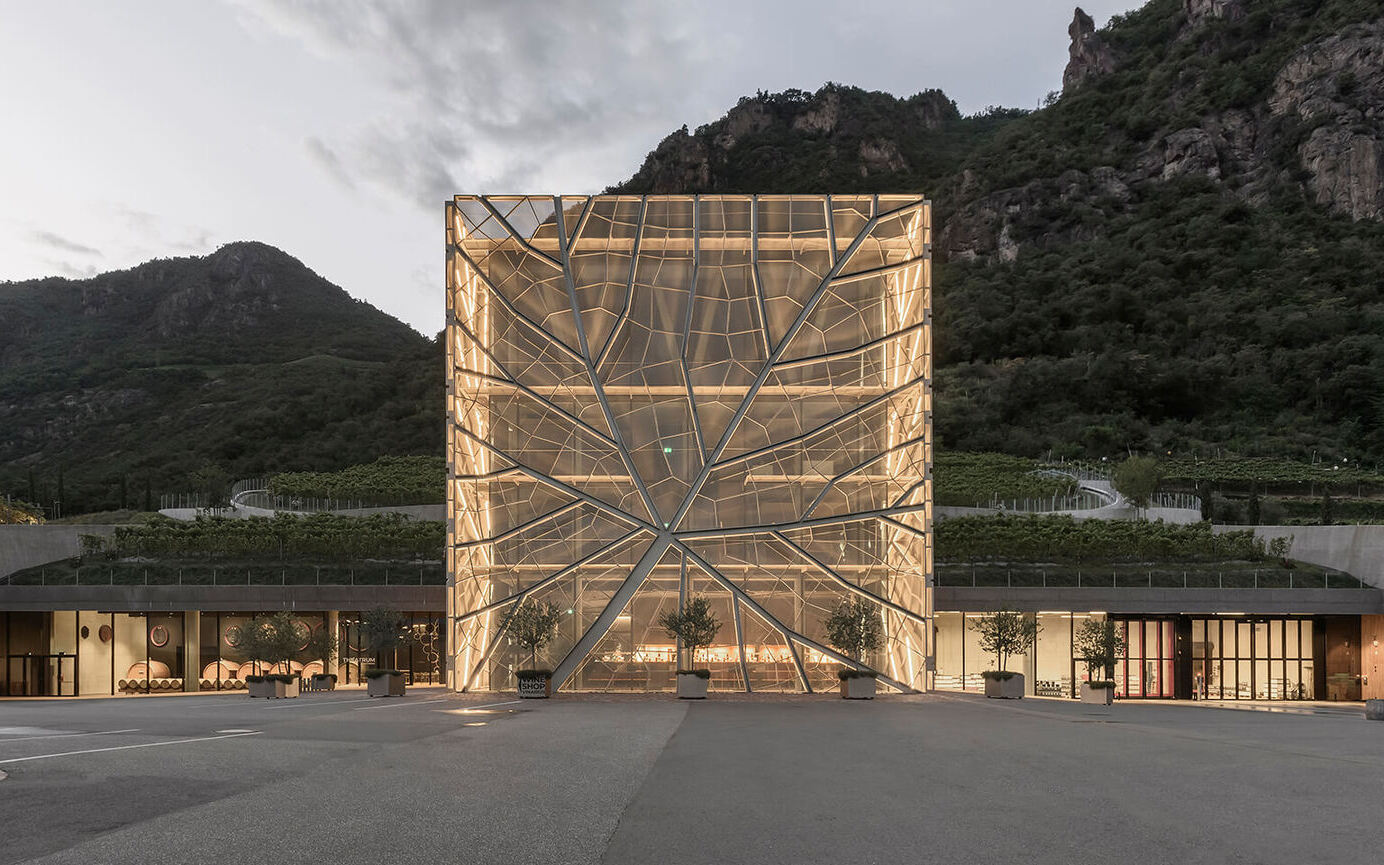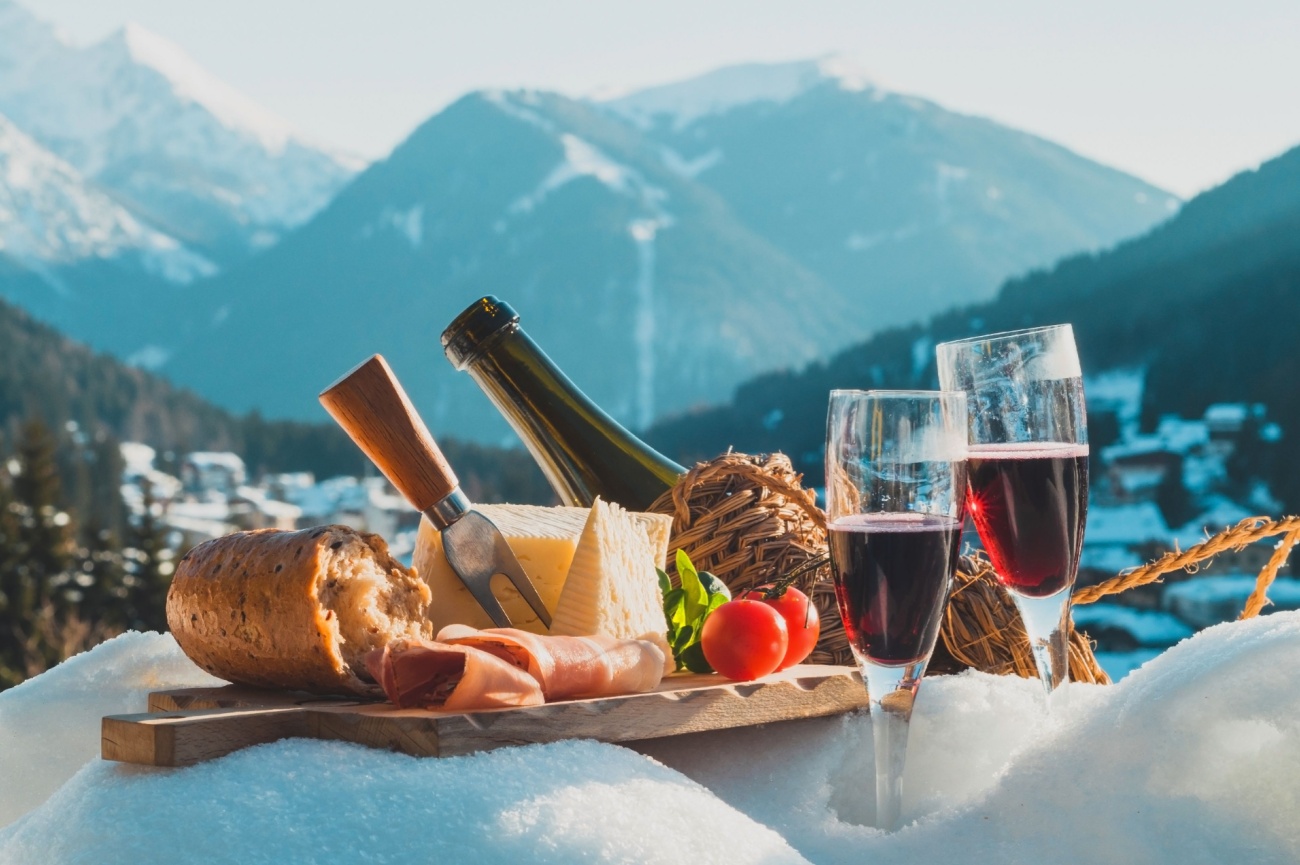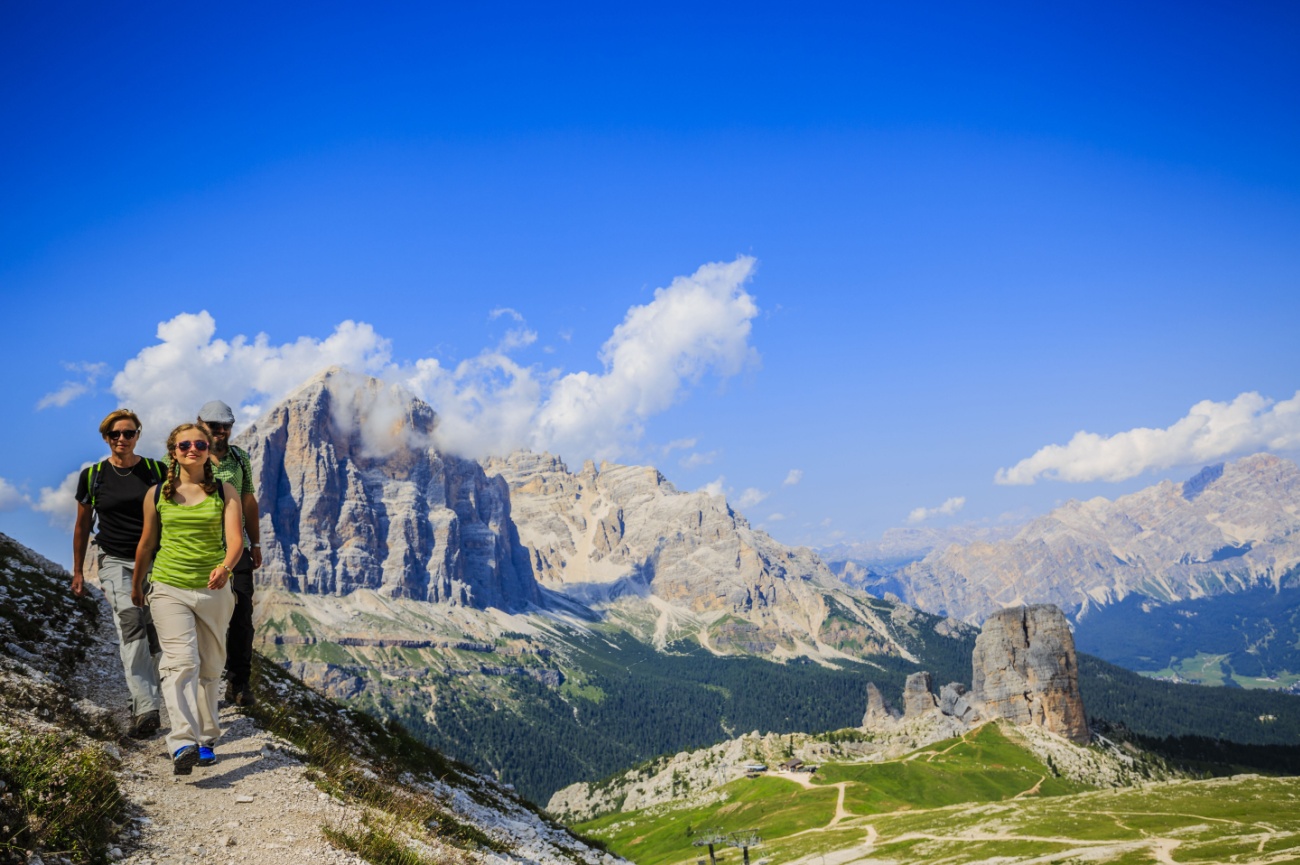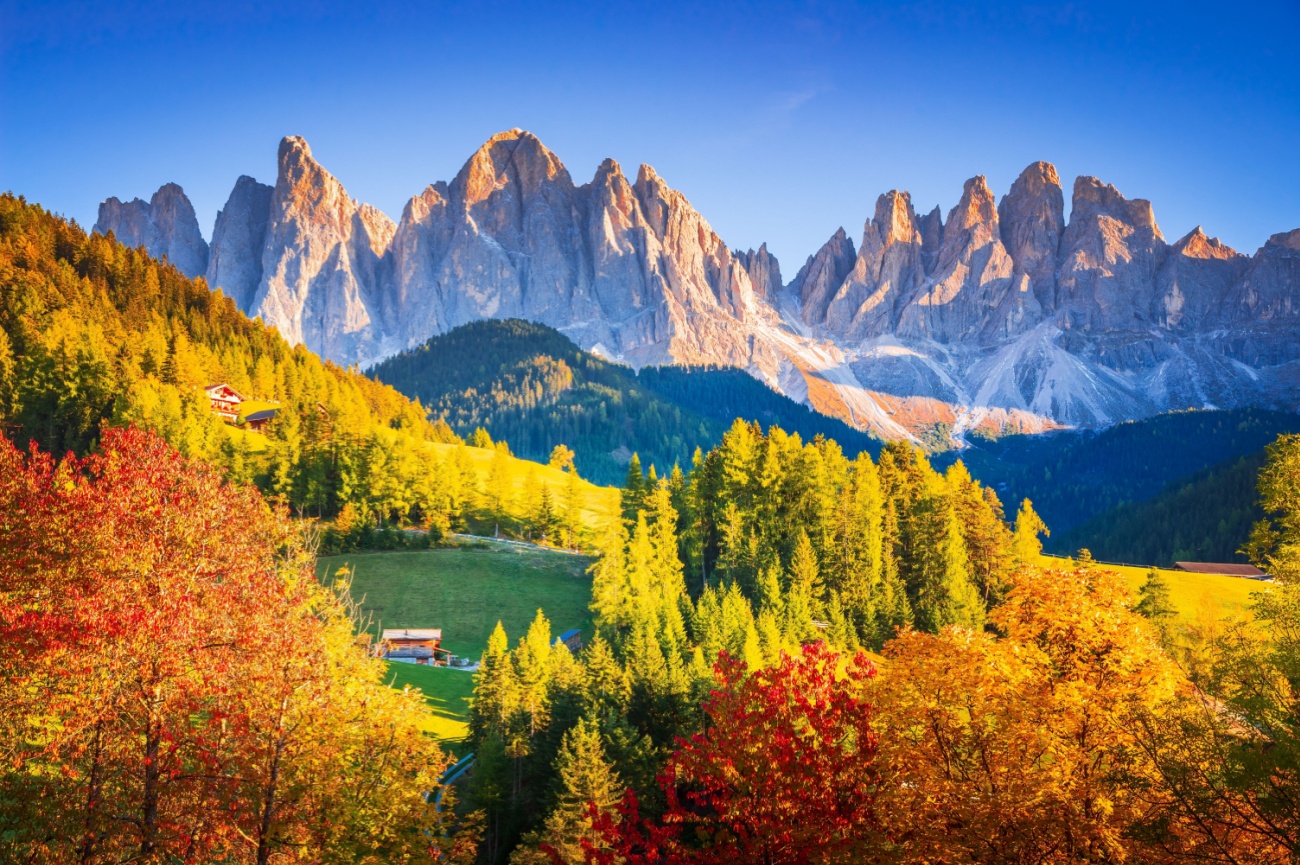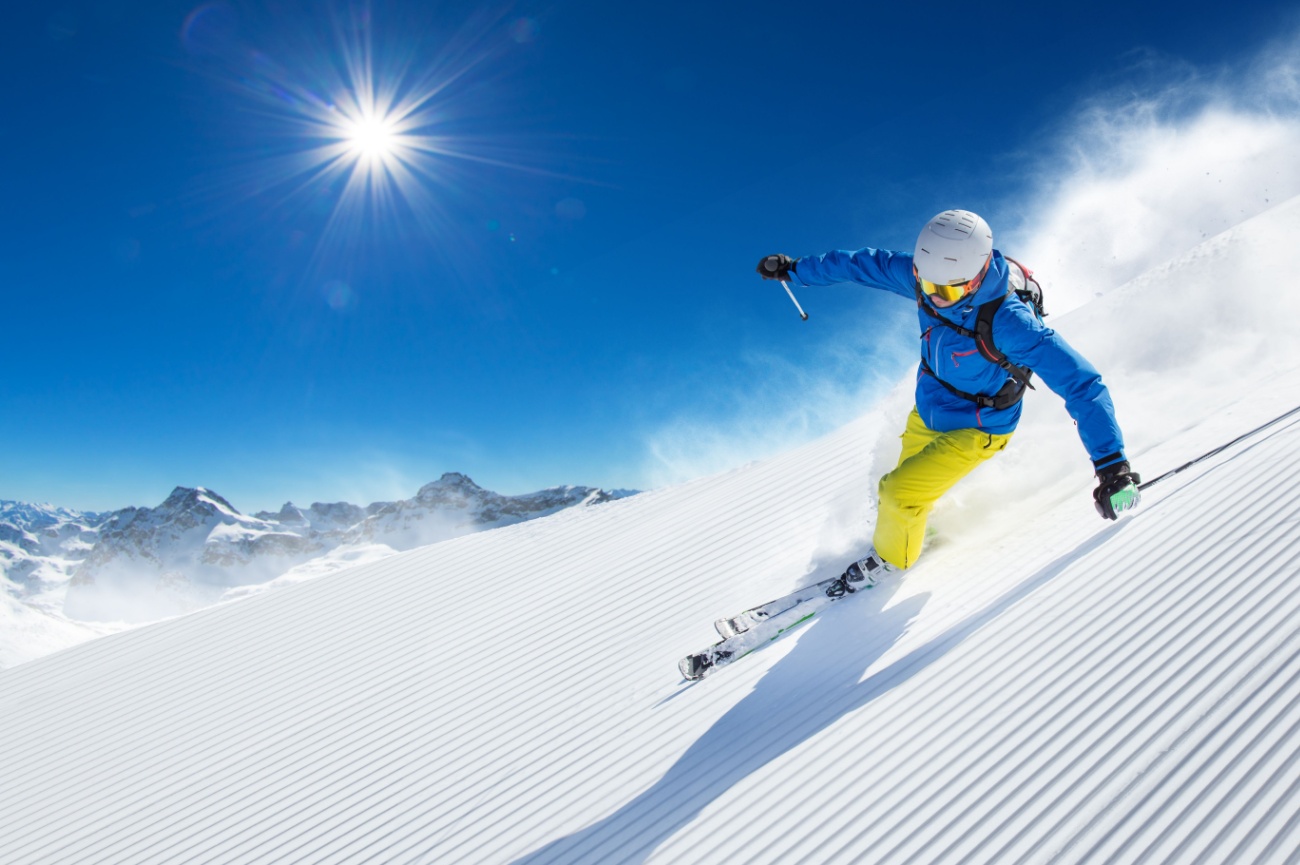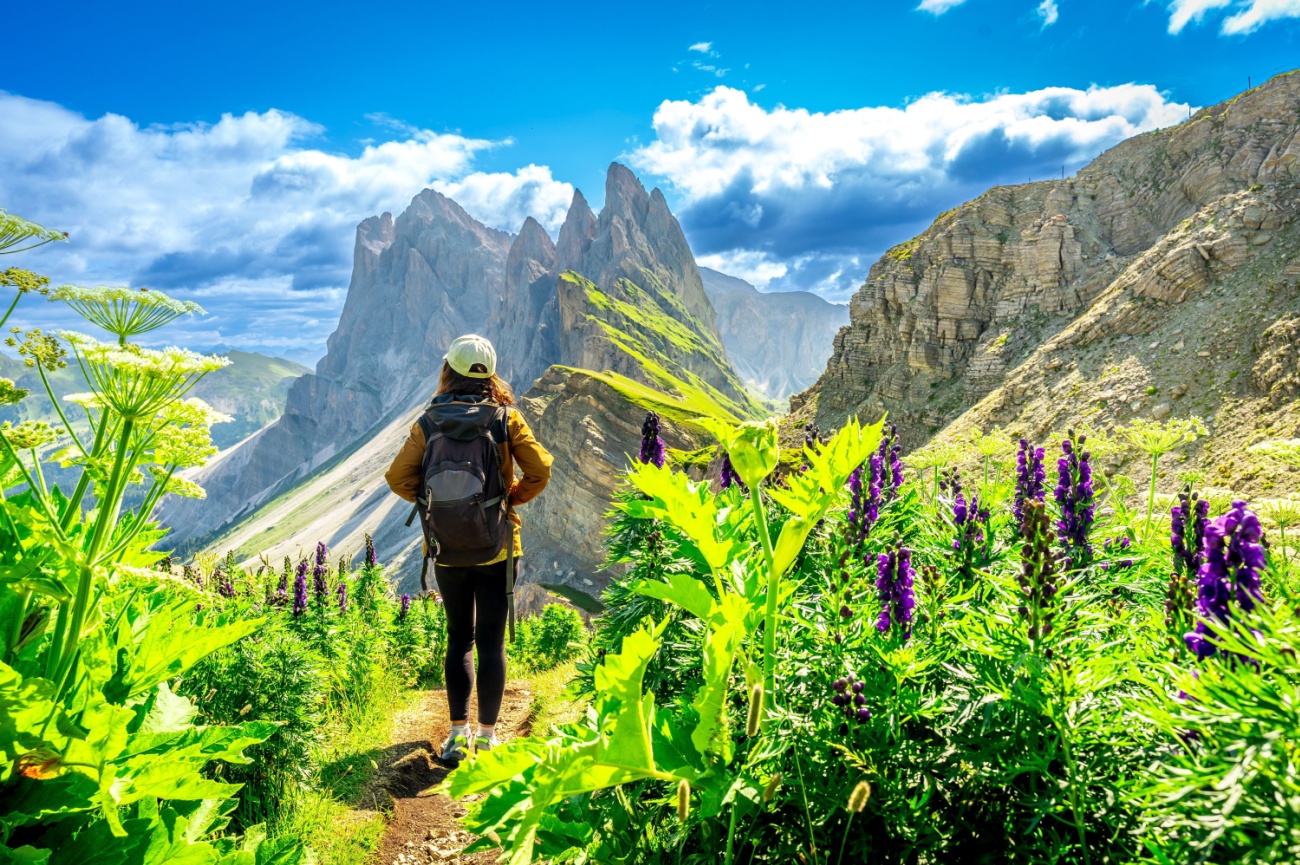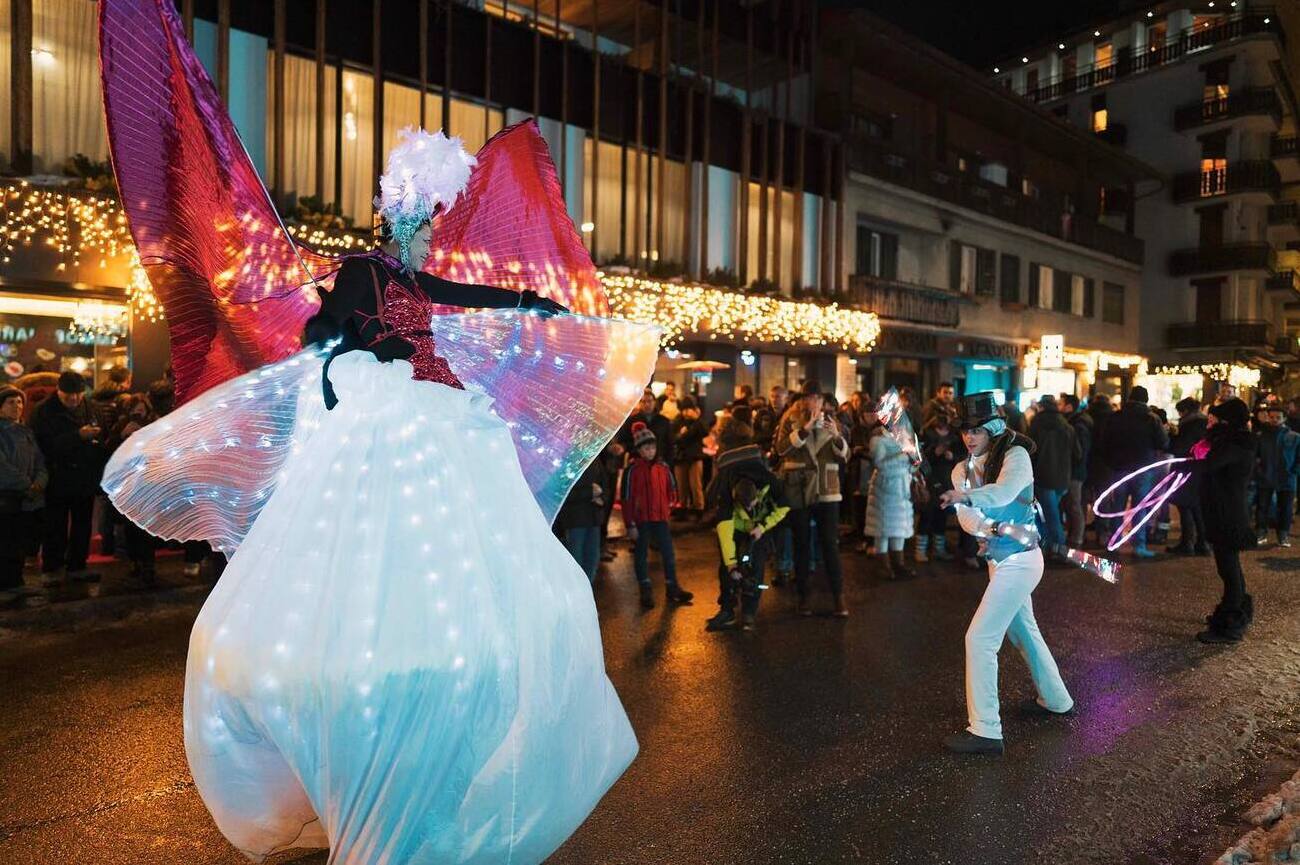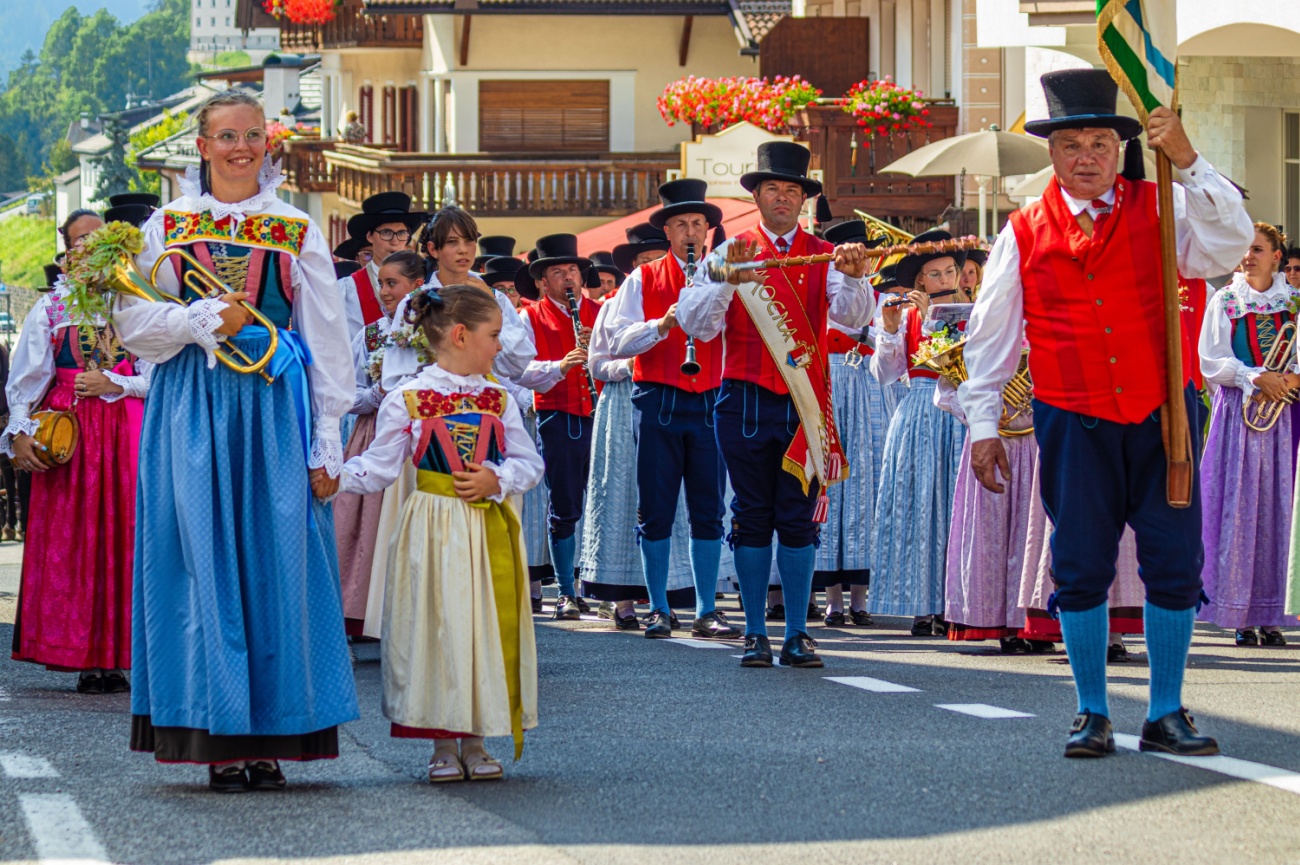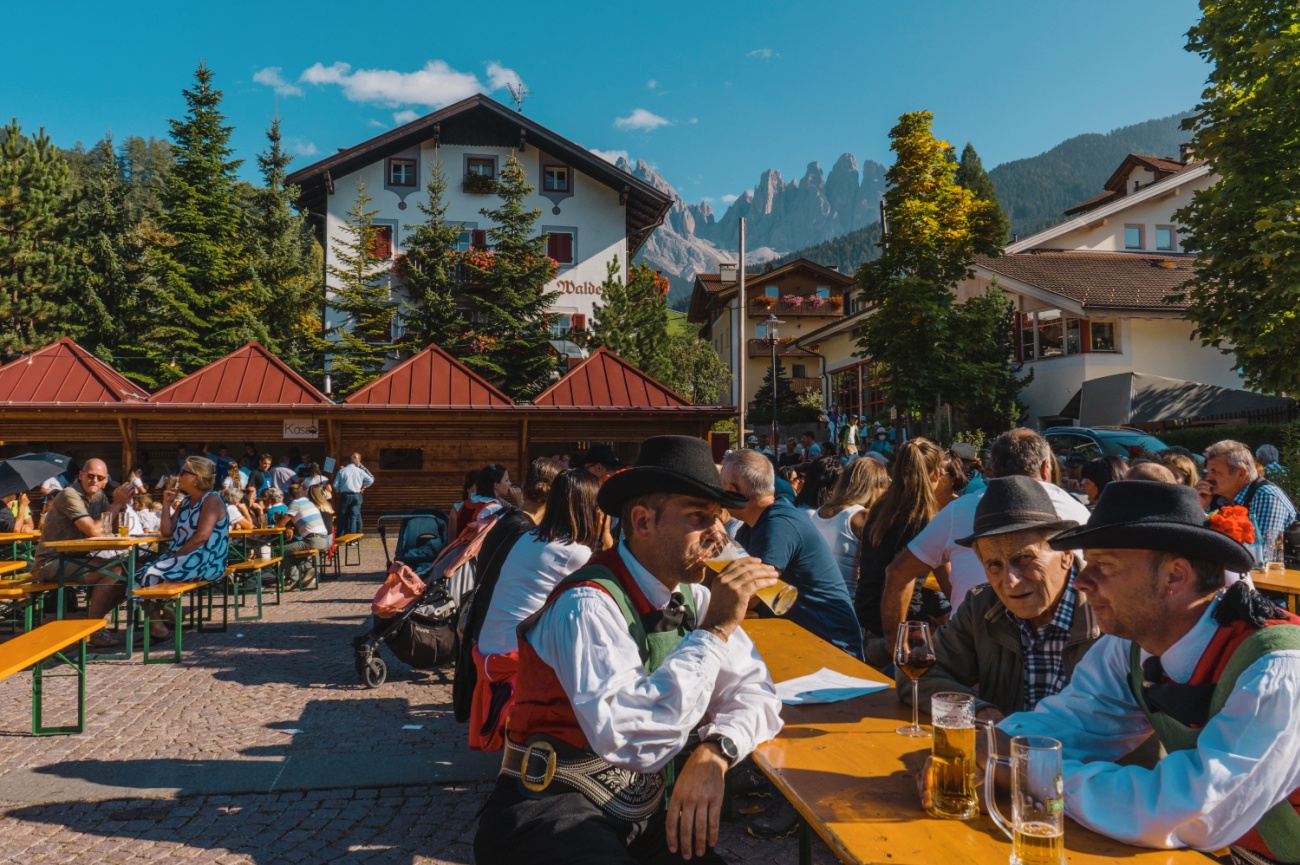Things to Do in the Dolomites, Italy: 5-Day Itinerary
The Dolomites, Italy’s dramatic limestone crown with its distinct and jagged peaks, offer some of the best Alpine experiences in Europe. The mighty mountains of northeast Italy guard the traditional culture in the region’s rural farmsteads and villages. This otherworldly stretch of mountains is protected as a UNESCO World Heritage Site.
The region is officially bilingual as Tyrol was once an independent state which is now split between Italy and Austria, so locals speak German and Italian. Anticipate local cuisine to reflect the same. The traditional economy is farming, but tourism is the big draw with skiing in winter and hiking in the summer.
The Dolomites are perfect for outdoor enthusiasts, nature lovers, photographers, and anyone who appreciates magnificent scenery, Alpine food, and traditions. The region offers a wide range of ski resorts, rock climbing opportunities, and year-round hiking. Like many European mountaintops, you'll find restaurants, shops, and a steady stream of tourists along the stunning Great Dolomite Road.
If you only have a few days, don't miss the Dolomite's iconic Tre Cime with its three enchanting pinnacles. Take in the sweeping views from the summit above the village of Ortisei. You can also enjoy a peaceful rowboat ride on the emerald waters of Braies Lake or have a picnic among the wildflowers in the Alpe di Siusi, Europe's largest high-altitude Alpine meadow.
Having a car is useful for exploring this part of Italy, as the main roads are well-maintained, allowing you to explore at a more relaxed pace. However, a car is not essential as the Dolomites are well-connected by a reliable bus service and cable cars. Follow our 5-day itinerary to fully experience the diverse beauty of the Dolomites.
Day 1 - The Alta Pusteria, South Tyrol

The Alta Pusteria region in Southeast Tyrol gives access to some of the most beautiful peaks of the Dolomites, including the Tre Cime (Three Peaks). The Three Peaks region is a skier’s paradise during winter and ideal for hiking in summer. Mountain trails lead to the most extreme vantage points with indescribably beautiful mountain lakes, such as Braies Lake, and alpine meadows.
Toblach (Dobbiaco)
Start your day in Toblach, also known by its Italian name Dobbiaco, is the eastern gateway to the Dolomites and an ideal starting point for exploring the Alta Pusteria region. Surrounded by majestic peaks and dense forests, it is a favourite among hikers in summer and cross-country skiers in winter. The town holds strong musical and cultural ties, famously hosting the annual Gustav Mahler Week in honour of the composer who found inspiration in its alpine tranquillity. With excellent regional cuisine, charming hotels, and access to scenic drives, Toblach is both a destination in its own right and a strategic base for exploring the surrounding natural wonders.
Lago di Braies
From Toblach, take a scenic 30-minute drive through pine forests and alpine pastures to reach Lago di Braies, one of the most photographed lakes in the Dolomites. Set against a dramatic backdrop of towering limestone peaks, the lake’s emerald waters offer a tranquil setting for a morning stroll or a short boat ride. A well-maintained trail loops around the shore, ideal for a gentle walk that captures the lake’s changing reflections and natural beauty. Arriving early ensures a peaceful experience before the midday visitors arrive.
San Candido (Innichen)
After a refreshing morning at the lake, head back toward San Candido, a picturesque town just 25 minutes away. This lively yet charming village combines alpine character with cultural heritage. Wander its cobbled streets, explore traditional shops, and take time to visit the Collegiate Church of San Candido — one of the finest examples of Romanesque architecture in the Alps. The town is also an excellent place to stop for lunch, with welcoming gasthofs serving regional dishes such as speck, dumplings, and freshly made Schlutzkrapfen.
Tre Cime di Lavaredo
After lunch, set off towards the heart of the Dolomites. A 45-minute drive takes you through the village of Misurina and up to Rifugio Auronzo, the main access point to the Tre Cime di Lavaredo. This toll road is typically open between June and October and offers jaw-dropping mountain views along the way. From the car park at Rifugio Auronzo, follow Trail 101, a well-maintained panoramic path that leads to Rifugio Lavaredo and on to Forcella Lavaredo. Just a few minutes into the walk, you’ll reach the Vista Panoramica Tre Cime di Lavaredo, one of the most spectacular viewpoints in the Dolomites, offering a sweeping view of the iconic southern face of the Three Peaks. Nearby, the charming Cappella degli Alpini sits quietly on a ridge — a small mountain chapel built by the Alpini soldiers, offering a moment of peace and reflection in this extraordinary setting. The well-maintained path continues gently across the alpine plateau, making this one of the most rewarding and accessible walks in the region. It is an out-and-back route, rather than a loop, so you’ll return to the car park the same way you came.
From Rifugio Lavaredo, the trail continues towards Forcella Lavaredo, a mountain saddle that offers one of the most iconic views in the Dolomites — the dramatic northern face of the Three Peaks. This stretch of the walk takes around 15 to 20 minutes each way, following a gently ascending gravel path framed by rugged alpine scenery. As you reach the top of the pass, the panoramic vista opens up to reveal a breathtaking sweep of jagged peaks and vast valleys beyond. It’s an unforgettable moment for anyone visiting the region. The path is an out-and-back route, so after taking in the views and capturing a few photos, you’ll return the same way to Rifugio Lavaredo and back to the car park at Rifugio Auronzo.
Hiking Trail 101 map: Rifugio Auronzo to Rifugio Lavaredo
(optional to Forcella Lavaredo)
Sesto (Sexten)
As the afternoon light begins to soften, descend from the high peaks and take a 40-minute drive to the quiet mountain village of Sesto. Known for its mountaineering heritage, Sesto is nestled in a peaceful valley surrounded by the jagged silhouettes of the Sexten Dolomites. A short walk into the Val Fiscalina offers a tranquil way to end the day, surrounded by alpine meadows and forested trails. With its traditional hospitality and excellent cuisine, Sesto is the perfect place to enjoy a relaxed dinner before returning to your base or continuing your South Tyrol adventure.
Day 1 - The Alta Pusteria, South Tyrol Tour Map
Where to Stay in The Alta Pusteria
- Villa Eden, Merano 5*: Villa Eden is a masterpiece of luxury. The 5-star adult-only hotel is nestled in a tranquil, forested park with terraced gardens. Marvel at the dramatic views of the Dolomites from the comfort of your exquisitely designed suite. Every detail is meticulously crafted, from the restaurant’s refined wellness gastronomy and tailored spa services to daily walks through the organic gardens and vineyard. Other luxe amenities include a medical spa, garden sauna, private yoga, and a gorgeous tasting room. Quality of life is at the forefront Villa Eden, a sanctuary of relaxation and rejuvenation.
- Forestis Dolomites, Bressonone 5*: This stylish, eco-friendly hotel in Bressonone offers spa, yoga, and wellness packages, and provides ski-to-door access to Plose Slope. The modern yet rustic suites feature Scandinavian simplicity, some with whirlpool tubs, tropical showers, and chalet-style balconies. Each room offers floor-to-ceiling views of the Dolomites. The hotel's sleek restaurant serves traditional South Tyrolean cuisine from a waste-free kitchen, incorporating foraged ingredients into the menu. The Celtic-inspired spa offers a wide range of treatments and various saunas, including infrared cabins in the woods. The hotel is just a few minutes from a ski lift, and there are hiking trails with access to the high-Alpine trails of the region. Relax with a swim in the indoor or outdoor pool, gather around the fire pit, or enjoy an evening cocktail with a view of the stunning peaks from the highest rooftop bar in Italy.
- Castel Fragsburg, Merano 4*: Perched high above the charming town of Merano, Castel Fragsburg is a luxurious 5-star hotel in a historic Alpine castle with sweeping vistas of the Adige Valley. The castle boasts a rich history, with wonderfully preserved architectural elements like stone walls, vaulted ceilings, and antique furnishings. Meticulously manicured gardens surround the castle, with colourful flowerbeds, orchards, and pathways, perfect for strolls in the natural beauty. Indulgent amenities include a renowned restaurant serving modern South Tyrolean dishes with wine pairings from local vineyards. The spa offers a range of holistic treatments inspired by the region's natural elements, including herbal baths, massages, and therapies. Guests of Castel Fragsburg are treated to a truly bespoke stay with a blend of history, nature, and refined luxury in one of the most striking settings in the Dolomites.
- Winkler Hotel, San Lorenzo 4*: The Winkler Hotel is a luxurious retreat nestled in the picturesque village of San Lorenzo di Sebato in the heart of the Val Pusteria. For those seeking an active or peaceful mountain escape, the Winkler offers easy access to outdoor activities like hiking, skiing, and golfing, with the iconic Plan de Corones ski resort nearby. Take advantage of its exceptional spa facilities with saunas, steam rooms, and multiple outdoor and indoor pools. Spacious, modern accommodations are elegantly appointed with light wood panelling and sleek, minimalist furnishings. Those rooms with private balconies delight you with striking sunrises and sunsets. The hotel's restaurant serves innovative gourmet cuisine with a focus on fresh, local ingredients.
- Hotel Chalet Gravenstein, Tirolo 3*: This little gem is a small, family-run chalet-style hotel in the middle of a pretty apple orchard just outside of Merano. The hotel has ten cosy, comfortable rooms, while most feature a balcony. Take breakfast or cocktails under the pergola or on the patio. The inviting swimming pool is tucked into a green oasis surrounded by vibrant gardens.
Where to Eat in the Alta Pusteria
Fine dining
- Ristorante La Stube, San Martino di Castrozza: Located in San Martino di Castrozza, Ristorante La Stube offers a fine dining experience with a focus on seasonal ingredients and creative presentations. The chef skillfully crafts dishes that highlight the flavors of the region, and the restaurant boasts an impressive wine list. It is the perfect choice for a special occasion or a romantic dinner.
- Sissi Restaurant, Merano: Sissi Restaurant in Merano is an elegant establishment that has been awarded one Michelin star. It is renowned for its innovative dishes, which beautifully blend local and global influences. The multi-course tasting menus offer a creative culinary journey using the freshest local, seasonal ingredients, and are complemented by an extensive selection of wines. The intimate atmosphere makes it the perfect setting for a romantic dinner or a special celebration.
Casual Dining
- Ristorante Malga Valli, Barcis: This lovely restaurant in the picturesque Friulian mountains is renowned for its breathtaking views and rustic atmosphere. The delightful menu showcases local homemade pasta, grilled meats, and fresh produce, accompanied by an excellent selection of regional wines. The welcoming hospitality makes Malga Valli an ideal destination for hikers and families, offering a genuine taste of alpine cuisine in a stunning setting.
- Ristorante Pizzeria L'Incontro, Predazzo: For a relaxing dining experience, make sure to visit Ristorante Pizzeria L'Incontro in the centre of Predazzo. It's known for its friendly atmosphere and diverse menu. You can enjoy a variety of wood-fired Roman-style pizzas and traditional Tyrolean dishes. The cosy ambience makes it a great choice for families and friends to enjoy a satisfying meal after a day of hiking or skiing.
- Rifugio Rudi, Sesto: Rifugio Rudi, or Rudi Hütte, is a charming mountain hut located in Sesto, specializing in hearty, traditional Tyrolean cuisine, wild game, mushroom dishes, and homemade cakes. It's a popular meeting point for hikers in summer and skiers in winter, offering a lively atmosphere with classic rustic decor. The hut is a fun place to recharge after a day of adventuring. Next to the Rudi Hut is the entrance to a 5km long toboggan run in winter and a large children's playground in warmer months.
The Alta Pusteria Markets
- Weekly Farmers' Market: The weekly Saturday farmers' market in Merano’s town square offers the best of local produce, artisanal cheeses, and cured meats. Additionally, the Merano Fruit and Vegetable Market, located in the heart of the town, is open a few days a week with vendors selling various seasonal fruits, vegetables, and flowers.
Day 2 - Bolzano

Bolzano, nestled in the stunning South Tyrol region, is a charming blend of Italian and German cultures, as reflected in its architecture, cuisine, and alpine traditions. Surrounded by majestic landscape, the “Gateway to the Dolomites” boasts breathtaking scenery that attracts outdoor enthusiasts year-round. Bolzano is a great base to explore the region as it is large enough to have plenty of dining and lodging options for travellers.
At the heart of Bolzano lies its historic Medieval centre where pastel buildings and arcades cradle Piazza Walther. Visit the striking Gothic Duomo di Bolzano Cathedral with its impressive bell tower and many artistic treasures. The city's rich history and cultural heritage is showcased in its well-preserved medieval buildings, such as the iconic Castel Mareccio, bustling cafes and shops. The South Tyrol Museum of Archaeology is home to the famous Ötzi the Iceman. Also worth a visit is the Messner Mountain Museum Firmian, housed in the historic Sigmundskron Castle just outside Bolzano. Curated by legendary mountaineer Reinhold Messner, it explores the profound spiritual and cultural relationship between humans and mountains through art, storytelling, and dramatic architecture. Take time to ride the cable car up to Soprabolzano for panoramic views.
Day 2 - Bolzano Tour Map
Where to Stay in Bolzano
- Castel Hörtenberg 5*: Perched amidst the breathtaking scenery of the Dolomites is Bolzano’s first 5-star hotel located in a 15th-century castle with grand halls, period furniture, towers, and turrets. Elegantly designed rooms and suites are thoughtfully decorated with wood-paneling, stucco, and majolica tiles to reflect the castle’s rich heritage while offering contemporary comforts. Lounge poolside on a sunbed surrounded by stunning mountains and lush landscapes. Culinary enthusiasts appreciate the hotel’s exquisite dining options which highlight the best of South Tyrolean cuisine. The castle also houses a museum of local art and the history of the castle itself.
- Hotel Quellenhof Spa 5*, South Tyrol: Hotel Quellenhof is a luxury wellness resort located near Merano in South Tyrol, known for its extensive spa facilities and peaceful Alpine setting. The resort includes several pools, saunas, a medical spa, and a wide range of beauty and wellness treatments. Guests can also enjoy yoga sessions, fine dining, and outdoor activities like tennis and golf. It’s a popular choice for those looking to unwind in a high-end, all-inclusive setting while still being within easy reach of the Dolomites.
- Goldenstern Townhouse 4*: Goldstern Townhouse Hotel is an urbane boutique hotel that blends alpine charm with modern elegance. It’s the perfect option for those seeking a luxurious escape with sophisticated design and warm hospitality. Each room is thoughtfully curated with a mix of contemporary and traditional, blending 800-year-old spaces with modern custom-designed furniture. End your busy day in the rooftop sauna or step out for a meal at one of the many nearby restaurants. The hotel’s location in the historic centre of Bolzano and proximity to dining, shopping, and outdoor activities make this an exceptional choice for the erudite traveller.
- Stadt Hotel Città 4*: Stadt Hotel Città’s location in the heart of Bolzano makes this historic hotel an ideal base for exploring Bolzano’s rich cultural heritage, charming streets filled with shops, cafes, and historical landmarks. The Grand Dame of Bolzano stands out with its bright pink façade and elegant arcades. The hotel features elegantly designed rooms that nod toward the Art Deco with its chic, sumptuous decor. Stadt Hotel Città’s restaurant serves a delectable array of local dishes, while the glass-domed Elliptical Room is an extraordinary place to grab a cocktail. For those looking to venture into the great outdoors, the hotel offers easy access to nearby hiking trails and ski resorts.
- Gasthof Kohlern Hotel 3*: This charming retreat perched on a hillside above Bolzano offers a unique blend of rustic charm and modern hospitality. Wake up to breathtaking views from the balcony of your cosy room featuring traditional alpine decor. The hotel’s restaurant is a highlight, serving delicious Tyrolean and Italian scratch-made cuisine, speck platters, knödel, and seasonal game dishes. Dining on the summer terrace allows you to savour your meals along with spectacular mountain scenery. The year-round heated infinity pool has a bird’s-eye view over Bolzano. This family-run hotel is Gasthof Kohlern serves as a fantastic base for outdoor adventures with easy access to ski slopes and trails and is a few minute walk to the cable car to Bolzano.
Where to Eat in Bolzano
Fine dining
- Ristorante Cavallino Bianco: Ristorante Cavallino is in a charming rustic alpine tavern, offering a cosy yet upscale dining experience. The menu features a mix of traditional Tyrolean cuisine and modern Mediterranean flavours. Signature dishes include handmade pasta and expertly prepared meats, paired with an impressive selection of local wines. The warm hospitality adds to the inviting atmosphere.
- Restaurant Löwengrube: Known for its cosy ambience and German-Italian fare, Bolzano’s oldest restaurant features hearty dishes such as speck platters, lamb chops, and homemade dumplings served up in a warm, wood-panelled setting. This is a solid choice to experience authentic Tyrolean cuisine and an excellent wine list of local varieties.
- Restaurant Laurin: Located in the elegant Hotel Laurin, the namesake restaurant offers a refined, international dining experience. The menus are inspired by a broad range of flavours from Japan and Naples to London and Rome, as is the dining room’s bright bistro-like décor. Arrive a little early to grab a cocktail and live jazz in the Laurin Bar to round out your special evening.
Casual Dining
- Osteria da Marco: Osteria da Marco is a casual neighbourhood restaurant serving traditional Mediterranean cuisine with a northern twist. The menu highlights fresh, seasonal ingredients weaved into homemade pasta, hearty speck platters, and a selection of regional wines that perfectly complement the dishes. The rustic decor, complete with wooden beams adds to the cosy ambiance. Expect a warm, inviting atmosphere and friendly service.
- FranziskanerStuben: FranziskanerStuben in Bolzano’s old town is a delightful restaurant named for the 13th-century Franciscan church a few steps away. Located in a historic building on a charming, cobbled side street, the restaurant has a dining room with classic alpine décor, a pretty outdoor patio, and seating in the medieval stone vaulted wine cellar. The menu features authentic German-Italian cuisine, from hearty charcuterie platters to flavorful pasta and seasonal specialities. Pair your meal with a selection of local wines for a true taste of the region.
Day
3 - Cortina d’Ampezzo

Nestled in the heart of the Dolomites, Cortina d’Ampezzo, often referred to as the “Queen of the Dolomites,” combines charm with sophistication, making it a premier destination for travellers year-round. The picturesque resort town is renowned for its breathtaking alpine scenery, vibrant cultural heritage, and world-class year-round outdoor activities.
In the winter, Cortina transforms into a skier’s paradise. As part of the Dolomiti Superski area, it boasts over 120 kilometres of slopes, well-groomed trails, and a variety of ski resorts catering to all skill levels. In the summer, the region offers exceptional hiking, mountain biking, and rock-climbing opportunities, and is a fantastic base for exploring the natural beauty of the Dolomites. Cortina is also a great base for trying the famous Via Ferrata climbing routes — fixed-cable paths that allow non-experts to ascend dramatic rock faces safely, combining adventure with spectacular views.
The nearby Monte Cristallo range is a photographer’s dream, with jagged spires and scenic hiking trails that make it one of the most striking backdrops in the region.
Cortina's vibrant town centre is filled with chic boutiques, artisanal shops, and cosy cafes, where visitors can savour local delicacies and relax with a glass of wine. The town’s rich cultural heritage is seen in its charming architecture, historical buildings, and numerous art galleries. For those looking to unwind, Cortina offers some of the region’s best upscale hotels, wellness spas, and gourmet dining experiences that highlight the region’s culinary delights.
Day 3 - Cortina d’Ampezzo Tour Map
Where to Stay in Cortina d’Ampezzo
- Grand Hotel Savoia Cortina d'Ampezzo, A Radisson Collection Hotel 5*: Grand Hotel Savoia is an elegant five-star retreat in the heart of Cortina d’Ampezzo, blending timeless grandeur with contemporary comfort. Housed in a historic building with sweeping views of the surrounding Dolomites, the hotel offers refined rooms and suites with tasteful alpine-inspired interiors. Guests can enjoy fine dining at the hotel’s gourmet restaurant, unwind in the sleek spa and wellness centre, or sip cocktails at the panoramic terrace bar. Ideally located near Cortina’s shops, ski lifts, and scenic trails, Grand Hotel Savoia is a superb base for year-round mountain escapes.
- Hotel de Len 4*: Hotel de Len is a stylish alpine luxury hotel located in Cortina d’Ampezzo, perfectly positioned for exploring the Dolomites. The warm and inviting rooms offer a blend of contemporary design with traditional alpine charm. The wall-sized windows and balconies provide panoramic views of the mighty mountains. The hotel features an upscale restaurant serving delicious local cuisine, along with a wellness area complete with a spa, sauna, and relaxation lounge. Conveniently situated near ski slopes and hiking trails, Hotel de Len is an ideal base is a perfect option for both winter sports and summer adventurers.
- Hotel Cortina 4*: Hotel Cortina, set in a classic 19th-century chalet-style building in the pedestrianised town centre, is full of alpine charm, from the carved woodwork and panelled rooms to curly wrought iron railings and flower box balconies. The rooms exude traditional alpine style with hand-painted furniture and floral fabrics. Suites have separate living rooms and/or private saunas. Amenities include an upscale restaurant, a bar with a terrace, and a wellness area with a hot tub, Turkish bath, and a solarium. Indulge in the flavours of the region at the hotel’s restaurant. With easy access to nearby ski slopes and hiking trails, Hotel Cortina serves as an ideal base for outdoor adventures and is only a 5-minute walk to the Faloria cable car.
Where to Eat in Cortina d’Ampezzo
Fine dining
- Ristorante Tivoli Cortina: Tivoli, a Michelin-starred gem, offers you an exquisite dining experience with themed tastings and imaginative a la carte menus that blend traditional Italian flavours with modern techniques. White linen tables, brilliant service, and a world class wine program make this a meal to remember. In warmer months, take your dinner on the covered terrace overlooking a wildflower meadow.
- El Toula: Located in the Grand Hotel Savoia, El Toula is a favourite dining destination for its gourmet alpine cuisine showcasing the region’s rich culinary heritage with a focus on fresh, local ingredients. Savor an expertly crafted meal paired with a curated selection of local wines in a refined wooden chalet. The menu also has a nice selection of vegetarian options.
Casual Dining
- Rifugio Lagazuoi Café and Terrace Bar: Set high in the mountains, Rifugio (“Refuge”) is a restaurant attached to one of the most elevated mountain inns in the Dolomites. The spacious deck, at 2,732 metres above sea level, is famous for its glorious views of what looks like the entirety of the jagged Dolomite peaks. The humble hut serves a menu full of hearty alpine fare like burgers, pasta, and most famously, the polenta. You can reach Rifugio easily via the Lagazuoi cable car from the Falzarego Pass.
- Da Beppe Sello: Da Beppe Sello is a casual eatery with a “feels fancy” vibe. It is known for authentic Italian cuisine and down-to-earth hospitality. The menu celebrates local flavors, featuring fresh pasta, hearty mountain dishes, and an excellent selection of wines. With its rustic country decor and friendly service, Da Beppe Sello is a great spot for both skiers looking to refuel and locals enjoying a cozy meal. Whether you're savoring a plate of handmade gnocchi or indulging in a rich tiramisu, this classic restaurant and bar captures the essence of Alpine dining.
- Ristorante Al Camin: A delightful culinary destination in downtown Cortina d’Ampezzo combines traditional Italian flavours with a modern rustic ambience. Known for its friendly service, the restaurant offers a diverse menu featuring classic dishes, such as homemade gnocchi and succulent game meats, as well as crêpes, custard, and a carefully curated wine list. The warm atmosphere, complete with a crackling fireplace, makes this a perfect place for après-ski meals.
Day 4 - Val
Gardena

Val Gardena, known for its scenic villages, ski resorts, and spa hotels, offers guests a regional bus pass to minimize car traffic during their stay. The surrounding mountains are dotted with picturesque trails, inviting nature lovers to explore the stunning alpine scenery. With superior ski-in/ski-out options, this is a premiere home base, especially in the winter. During the summer, Val Gardena is an excellent area for hiking as some of the most iconic ‘postcard perfect’ landscapes of the Dolomites are in the immediate area.
The major advantage of staying in Val Gardena is its proximity to the relatively flat highway through the valley, making it easy to get here. Also, the bigger towns of Bolzano and Merano are close by offering alternative sightseeing and indoor activities in bad weather.
Nestled within the Val Gardena, Ortisei and Selva are two quintessential alpine towns that embody the beauty and culture of the Dolomites. With direct access to the Dolomiti Superski area, both towns are ideal for skiing in winter and hiking or mountain biking in summer.
Ortisei is a lively town known for its picturesque streets lined with colourful wooden buildings, bustling shops, and cafes. Visitors can enjoy traditional Tyrolean dishes in cosy restaurants and explore shops selling exquisite woodcarvings and local handicrafts. Ortisei is also the starting point for the famous cable car to Seceda, where the legendary Seceda Ridgeline Hike begins. This dramatic trail follows a grassy spine high above the valley floor, offering unforgettable panoramic views across the Dolomites — it’s one of the most iconic and photographed hiking routes in the region.
Selva, just a short distance away, offers a more rugged alpine experience, making this a favourite among outdoor enthusiasts.
Day 4 - Val Gardena Tour Map
Ortisei
Ortisei offers easy access to some of the best skiing in the region, with direct connections to the Dolomiti Superski area. In the warmer months, the surrounding mountains become a flower-filled playground for hikers, mountain bikers, and nature enthusiasts, with trails that lead to breathtaking vistas and tranquil alpine meadows. Take the cable car from the village of Ortisei to the Seceda summit where a variety of ridge trails amaze you with panoramic views.
Selva
Selva, located in the heart of Val Gardena, is the highest village in the valley and is considered one of the gateways to the Dolomites. It is famed for the dramatic landscapes that cradle the town and outdoor adventures. The village offers direct access to the Dolomiti Superski area, featuring a vast network of slopes suitable for all skill levels. With its charming chalets, vibrant local culture, and delicious Tyrolean cuisine, Selva offers a warm and welcoming atmosphere for visitors. Puez-Odle Altopiano accessible from Selva is a spectacular 4-hour hiking circuit with jaw-dropping views of the Dolomites, fields of wildflowers, and endless alpine views.
Alpe di Siusi (Seiser Alm)
The Alpe di Siusi is a must-visit destination for anyone exploring the Dolomites. Europe’s largest high-altitude Alpine meadow is a breathtaking expanse of green rolling hills, vibrant wildflowers, and tiny villages set against magnificent mountain backdrops. Alpe di Siusi offers an extensive network of hiking and biking trails covering 57 square kilometres that lead to scenic viewpoints and quaint mountain huts where you can refresh with local food and drinks. Take your walking stick, as the serene surroundings and stunning vistas make the meadow ideal for walks and picnics. During the winter months, the area transforms into a snow-white cross-country ski destination through unparalleled beauty.
Day 4 - Ortisei, Selva & Alpe di Siusi Tour Map
Funes Valley
Funes Valley, also known locally as Villnöss, is a hidden gem in the Dolomites. The valley is home to a rich Ladin culture, festive local traditions and a peaceful environment characterised by lush meadows, traditional farmhouses, and vibrant wildflower fields. The small village of St. Magdalena with its picture-perfect church and captivating backdrop of the Parco Naturale Puez Odle’s mountain range is one of the most photographed landscapes in the Dolomites. Also notable is the famous Adolf Munkel Trail provides breathtaking views of the iconic snaggletooth Geisler Peaks.
Day 4 - Funes Valley Tour Map
Mountains
Passes
- Passo Pordoi: One of the four major passes on the Great Dolomites Road, built in the early 20th century connects Bolzano to Cortina d’Ampezzo at an elevation of 2,239 meters. Ride the Pordoi cable car to the summit of Sass Pordoi, often referred to as the "Terrace of the Dolomites." From this vantage point, you can enjoy panoramic views of the dramatic peaks and valleys. In winter, Passo Pordoi is part of the Dolomiti Superski area, offering access to a vast network of ski slopes suitable for all levels. During the warmer months, it becomes a hub for hiking and mountain biking, with trails leading to some of the most beautiful spots in the region.
Passo Pordoi Route Map
- Passo Sella: Passo Sella connects the Val Gherdëina in South Tyrol and Canazei in the Fascia Valley in Trentino. It sits at an elevation of 2,240 meters, making this one of the most scenic mountain passes in the Dolomites. Renowned for its stunning vistas, the pass offers breathtaking views of the iconic Sella Group and surrounding peaks. In winter, Passo Sella is part of the extensive Dolomiti Superski area, featuring well-groomed slopes and trails. During the summer months, it transforms into a paradise for hikers and mountain bikers, with numerous trails that lead to spectacular viewpoints and charming alpine huts.
Passo Sella Route Map
- Passo Gardena: The Gardena Pass is a picturesque pass that connects Val Gardena with the Val Badia at an elevation of 2,136 meters. The drive offers spectacular panoramas of the surrounding peaks, including the majestic Sella Group and the Sassolungo. In winter, Passo Gardena is a key access point for skiers to a vast network of slopes in the Dolomiti Superski area. In the warmer months, it becomes a haven for hikers and mountain bikers, with a variety of trails leading to picturesque landscapes and charming rifugios. The pass is also rich in local culture, as it is home to the villages of Ortisei, Santa Christina, and Selva.
Passo Gardena Route Map
Where to Stay in Val Gardena
- COMO Alpina Dolomites, Alpe di Siusi 5*: COMO Alpina, nestled in the stunning Alpe di Siusi region, offers an upscale escape in the heart of the Dolomites. The ultramodern chalet-style boutique hotel combines modern comfort with traditional alpine charm and of course, breathtaking views of the surrounding mountains. Pamper yourself in the wellness area with a spa, sauna, and indoor pool, perfect for relaxation after a day of outdoor activities. The hotel's restaurant serves exquisite local cuisine, showcasing the flavours of South Tyrol. With direct access to hiking trails and ski-in/ski-out access to slopes, COMO Alpina is an ideal base for exploring the Alpe di Siusi. This enchanting retreat promises an unforgettable experience in one of Italy’s most breathtaking alpine regions.
- Adler Spa Resort Dolomiti, Ortesei 5*: Adler Spa Resort Dolomiti, an upscale resort, offers a perfect blend of luxury, wellness, and natural beauty. This elegant resort features country-chic rooms and suites, hardwood floors, and breathtaking views of the Dolomites. The highlight of the resort is its extensive spa, which includes a variety of treatments, saunas, and relaxation areas, as well as multiple pools and hot tubs. Enjoy both casual and gourmet dining on site. With easy access to hiking trails and ski slopes, Adler Spa Resort Dolomiti serves as an ideal base for outdoor year-round adventures.
- Cavallino Bianco, Ortesei 4*: Cavallino Bianco is a luxurious, family-friendly hotel known for its warm hospitality and exceptional amenities. The resort features beautifully designed rooms and suites that cater to both adults and children. The hotel boasts an extensive wellness area with a spa, indoor and outdoor pools, and various treatments to help guests unwind. Families can enjoy a range of activities, including a dedicated children's club, playgrounds, and outdoor activities. Cavallino Bianco's dining options showcase local cuisine, emphasising fresh, seasonal ingredients. The hotel’s prime location near hiking trails and ski slopes is an ideal base for exploring the breathtaking beauty of the Dolomites while enjoying a luxurious and family-oriented atmosphere.
- Grand Hotel Wolkenstein, Selva di Val Gardena: Grand Hotel Wolkenstein offers a perfect blend of elegance and alpine charm. This luxurious hotel features beautifully appointed rooms and suites providing a serene escape. The hotel boasts an extensive wellness area, including a spa, sauna, and indoor pool, ideal for relaxation after a day of outdoor adventures. Indulge in exquisite dining options that highlight local and international cuisine, ensuring a delightful culinary experience. With direct access to the Dolomiti Superski area and a variety of hiking trails nearby, Grand Hotel Wolkenstein is an ideal base for both winter sports enthusiasts and summer adventurers.
Where to Eat in Val Gardena
Fine Dining
- Ristorante Pizzeria Mar Dolomit, Ortisei: With a focus on seasonal and organic ingredients, Mar Dolomit offers a menu that is just a little different for the region offering seafood and meat dishes, shellfish risotto, and creative Roman-style pizzas. Shift gears from traditional game dishes to order octopus pasta, speck gnocchi, burgers, or whole branzino. The service is friendly, and the atmosphere is casual.
Casual Dining
- Ristorante i Tablà, Alta Badia: Known for its rustic modern atmosphere, Ristorante Tablà prides itself on offering a menu that celebrates local flavours and ingredients. The traditional kitchen turns out Tyrolean and Italian dishes, including hearty pasta dishes, flavorful risottos and expertly grilled meats, all complemented by a fine selection of local wines. On sunny days, you can dine al fresco on the terrace while the kids entertain themselves at the playground and animal park.
- Rifugio Resciesa, near Bolzano: Located on the Resciesa mountain, this rustic mountain hut offers a blend of alpine charm and stunning natural beauty. Perched at an elevation of about 2,200 meters, it serves as an ideal base for outdoor enthusiasts exploring the incredible surrounding landscape. It's a fun stop for hikers looking to enjoy hearty local specialties such as hearty speck platters and homemade strudel. Accessible via scenic hiking trails or a short ride on the Resciesa funicular, Rifugio Resciesa promises an unforgettable dining experience.
Day
5 - Great Dolomite Road Scenic Drive

The Great Dolomite Road is one of the most spectacular drives in Europe, with the surrounding scenery looking like a mighty sculpture. The 110-kilometer route connects Bolzano to Cortina d’Ampezzo, offering iconic views of towering peaks, lush valleys, and charming alpine villages. The majestic limestone pillars have something for everyone.
Travel the beautifully engineered road as it serpentines up to the 2,100-metre Sella Pass, with its vast hiking area full of pristine nature and sublime vistas. This region forms part of the Sella Ronda Ski Circuit, one of the most famous loops in the Alps, allowing skiers to circle the Sella Massif in a single day across multiple valleys and lifts. The same slopes become busy with skiers in the winter.
In summer, cyclists can participate in the Sellaronda Bike Day, when roads around the Sella Massif are closed to traffic for a festive, car-free alpine ride open to all levels.
The Dolomites is rock-climbing country, but there is more than one way to get to the top of the mountain. With more than 100 cable cars throughout the Dolomites, let the lifts do the climbing and deliver you sweat-free to the trail heads. Take the Seceda cable car from the picturesque village of Ortisei to the summit and hike one of the many trails offering unrivalled views of the Dolomites. A few ridgeline trails are easy enough for the kids.
Sassolungo Pass, situated at an elevation of 2,268 meters, is a stunning drive connecting the Val Gardena and Val di Fassa valleys offering awe-inspiring views of the iconic Sassolungo and surrounding peaks. The region is famous for its historic “coffin” gondolas that float you to the top of the most famous mountain peaks overlooking Italy's largest high-alpine meadow, Alpe di Siusi, with its endless carpet of wildflowers and crisscrossing paths.
Stop at Passo Pordoi ridge to take a lift to Sass Pordoi for stunning 360-degree views. Sass Pordoi, often referred to as the "Terrace of the Dolomites," is a striking mountain peak situated at an elevation of 2,950 meters. Accessible via a cable car from Passo Pordoi, it offers visitors vast panoramic views of the surrounding Dolomites, including the Sella Group and Marmolada Glacier.
Day 5 - Great Dolomite Road Scenic Drive Map
Other
Things to See in The Dolomites
- Alpin Panorama Hotel Hubertus: Alpin Panorama Hotel Hubertus is a spectacular modern resort that makes a stellar base for winter sports enthusiasts and summer adventurers, with access to ski slopes for all levels, hiking trails, and a world-class wellness area, complete with a spa, pools, and relaxation zones that provide a serene retreat after a day of your activities. Pushing the boundaries of architecture and luxury, the modern eco-resort boasts the most amazing infinity pool floating over the mountainside. This elegant hotel features beautifully designed rooms and suites, many with panoramic views of the surrounding mountains.
- Alta Badia: Alta Badia is a picturesque valley offering access to the expansive Dolomiti Superski area in winter, with a variety of slopes suitable for all levels of skiers and snowboarders. In the summer, the region transforms into a haven for hikers and mountain bikers. Well-marked trails lead to stunning viewpoints and charming mountain huts serving delicious local cuisine. The region also boasts great food and Michelin-starred restaurants.
- Bruneck: Another gateway to the Dolomites is known for its charming medieval architecture with a delightful mix of historic buildings, lively shops, and cosy cafes. Bruneck is surrounded by stunning natural landscapes, making it an ideal base for outdoor activities year-round. The town is also home to cultural attractions, including the impressive Bruneck Castle with gorgeous panoramic views and a glimpse into the area's rich history.
- Eggental Valley: The valley is home to charming villages like Obereggen and Welschnofen, where visitors can experience authentic Tyrolean culture and local cuisine. Highlights include the breathtaking views from the Latemar massif and the serene lakes that dot the landscape. With its blend of natural beauty, outdoor adventure, and rich cultural heritage, Eggental Valley is a hidden gem that promises memorable experiences for adventure seekers and nature lovers alike.
- Kastelruth: The cute town at the foot of the stunning Sciliar mountain is the gateway to Europe’s largest Alpine meadow, Alpe di Siusi. Explore the colourful wooden chalets and lively town square with its iconic fountain and metal cup inviting visitors to a drink. Experience Kastelruth’s rich heritage through its traditional festivals and authentic South Tyrolean cuisine in cozy restaurants.
- Plan de Corones: Plan de Corones (Kronplatz) is a premiere mountain and ski resort, renowned for its stunning staggering views and extensive outdoor activities. At 2,275 meters, the vast network of well-groomed ski slopes caters to all skill levels, making it a favourite among winter sports enthusiasts. In the summer, Plan de Corones transforms into a hiker’s paradise, with numerous trails winding through breathtaking landscapes and breathtaking views. The area is also home to the impressive Messner Mountain Museum, dedicated to the culture and history of the mountains.
- Paragliding: Paragliding in the Dolomites is an extraordinary way to see the most striking mountains from a bird's eye view. There are several suitable take-off points for paragliders in Val Gardena to soar high above the dramatic peaks, lush valleys, and sparkling lakes. Popular launch sites include locations near Ortisei, Canazei, Col Rodella, or Alpe di Siusi, where experienced instructors guide beginners and seasoned flyers through tandem flights.
- Puez-Odle Nature Park: Puez-Odle Nature Park is a protected natural reserve in the heart of the Dolomites, renowned for its dramatic landscapes and rich biodiversity. Spanning over 10,000 hectares, the park features a variety of hiking trails that lead you through striking mountain peaks, lush meadows, and unique geological formations. This is a very popular area for backpacking, birding, and hiking, so you will encounter other people while exploring. The 8-kilometer trail near Ortisei is a moderately challenging route that takes an average of 3 hours to complete. Wildlife enthusiasts are drawn to the variety of flora and fauna, including rare alpine species.
- Reifenstein Castle, Campo di Trens: Reifenstein Castle, located in Campo di Trens, is a beautifully preserved medieval fortress that dates to the 12th century. Perched on a dramatic rocky outcrop, the castle offers stunning views of the surrounding landscape of the Eisack Valley. Explore the castle's well-preserved rooms, including the chapel and various halls adorned with historical artefacts, providing a glimpse into the castle’s rich history. Reifenstein Castle is not only a cultural landmark, but surrounding hiking trails and lush scenery make this a great starting point for outdoor adventures.
- Natural Hot Springs: The Dolomites are home to many natural hot springs, offering a unique and rejuvenating experience amidst stunning mountain scenery. Thermal baths, such as those found in locations like Merano and the nearby Ahrntal Valley, are known for their relaxing, healing properties. Many hot springs also feature wellness facilities, including saunas and spa treatments, making them ideal for unwinding after a day of outdoor activities. Terme Merano, reached by gondola from the town of Merano, offers a modern rejuvenation experience set against the stunning backdrop of the Dolomites. The bright and airy spa complex is modern in its architecture, combining glass and natural materials. The spa features a saunas, 5 indoor mineral spring water pools open all year round and ten outdoor pools in summer. The spa is also conveniently located near hiking trails and has a café, making it an ideal retreat after a day of exploration in the Dolomites.
- Lago di Misurina is one of the most beautiful and popular lakes in the Dolomites, set at the foot of the Cadini and Sorapiss mountain groups near Cortina d’Ampezzo. A flat path circles the lake, making it easy to walk while enjoying views of the surrounding peaks reflected in the water. To explore, park by the lakeside and follow the well-maintained trail past small cafés, hotels, and rest stops. Known for its fresh alpine air and peaceful setting, the lake is also home to a historic asthma treatment centre for children. It’s an ideal spot for a gentle walk with mountain views in every direction.
- Church of St. John in Ranui: The Church of St. John in Ranui is a small 18th-century chapel in the Val di Funes, easily recognised by its onion-shaped dome and forested backdrop. It sits in an open meadow at the foot of the Odle mountains. To see it up close, follow the short path from the car park near Santa Maddalena. The church is privately owned, so access to the interior is limited, but the view from the outside is one of the most photographed in the Dolomites.
- Val di Funes Panoramic Viewpoint: The classic panoramic viewpoint of Val di Funes is just above the village of Santa Maddalena and offers a sweeping view over the valley with both the Church of St. John and Santa Maddalena Church in the foreground. From the car park, walk uphill along a farm track for about 10–15 minutes until you reach the wooden fence overlooking the valley. It’s best visited in the late afternoon when the jagged Odle peaks are lit by the setting sun.
- Bletterbach Gorge: Bletterbach Gorge is a UNESCO-listed canyon near the village of Aldino, known for its exposed rock layers, fossils, and prehistoric history. The circular hiking trail begins at the visitor centre and follows the riverbed through steep walls of sandstone and volcanic deposits. Information panels along the path explain the geology of the area. Wear sturdy shoes, as parts of the route involve walking on uneven stones and loose gravel.
- Rosengarten / Catinaccio Group: The Rosengarten (Catinaccio in Italian) is a mountain group near Vigo di Fassa, best known for its pink glow at sunset, a phenomenon known as enrosadira. Take the cable car from Vigo or Nova Levante to reach the high-altitude trails. Walk the popular trail to Rifugio Vajolet or continue along more advanced routes for sweeping views. The range is tied to Ladin legends and is one of the most scenic parts of the Dolomites.
- Messner Mountain Museum Corones: Messner Mountain Museum Corones is located at the summit of Plan de Corones (Kronplatz) and is one of six museums founded by climber Reinhold Messner. The museum is built into the mountain itself and focuses on traditional alpinism and mountaineering culture. To reach it, take the cable car from Riscone near Brunico. Inside, you’ll find exhibits, films, and panoramic windows overlooking the Dolomites, Zillertal Alps, and Ortler range.
Dolomite Mountains and Passes
- Dolomites Three Peaks: The Dolomites Three Peaks, or Tre Cime, are one of the most iconic mountain formations in the Dolomites, recognized by its three towering peaks—Cima Grande, Cima Ovest, and Cima Piccola— rising dramatically above the surrounding landscape. The area features a network of well-marked trails, making it accessible for both experienced adventurers and casual walkers to explore the diverse alpine flora and fauna while revelling in panoramic vistas. The Tre Cime are also a popular destination for climbing enthusiasts, with various routes catering to different skill levels. The region has historical significance having been a battleground during World War I, with remnants of trenches and fortifications still visible.
- Schlern also known as the Sciliar, lies in the middle of the Sciliar-Catinaccio Nature Park. This iconic peak, characterized by its distinctive flat plateau and towering cliffs, offers breathtaking views of the surrounding Dolomites and down into the hazy Italian peninsula. The pointy hat-like peaks were a legendary meeting place for witches, who flew in from around the world on their broomsticks. Well-marked trails lead adventurers through diverse landscapes, from alpine meadows to rugged terrain, with opportunities to spot local wildlife along the way.
- Passo Giau: Passo Giau is a breathtaking mountain pass at an elevation of 2,236 meters connecting the towns of Cortina d’Ampezzo and Selva di Cadore, making it a popular route for both drivers and cyclists. The pass is surrounded by the magnificent Nuvolau and Averau peaks, creating a spectacular backdrop for outdoor activities. A highlight of Passo Giau is the rustic rifugios (mountain huts), where you can savour traditional Tyrolean food while surrounded by stunning vistas.
- Marmolada Glacier: Marmolada, the highest mountain peak, is about 1-hour drive from Cortina and is easily accessible by taking a series of cable cars. In just a few minutes, you are transported from 1,450 meters to 3,265 meters, with panoramic 360° views of all the highest mountain peaks of the Dolomites, ranging from green landscapes to white wintery caps. During the winter, the Marmolada transforms into one of the most beautiful skiing areas.
- Passo Falzarego: The breathtaking mountain pass, perched at an impressive elevation of 2,105 meters, serves as a link between the towns of Cortina d’Ampezzo and Val Badia. This stunning pass is celebrated for its dramatic landscape, dominated by towering peaks of the Lagazuoi and Tofane groups. In the warmer months, the pass becomes a hiker's paradise, offering a network of well-marked trails that wind through lush alpine meadows and lead to panoramic vistas and remnants of World War I fortifications, which add a poignant layer to the stunning natural beauty. In winter, Passo Falzarego transforms into a playground for snow enthusiasts. The nearby Lagazuoi cable car whisks you to some of the region’s most breathtaking viewpoints, where the sweeping vistas are nothing short of awe-inspiring. After a day on the slopes, you can retreat to cozy rifugios—traditional mountain huts—where you can savor hearty local cuisine and warm yourself by the fire.
- Cinque Torri: Cinque Torri, or "Five Towers," is a striking group of rocky spires that rise majestically near Cortina d’Ampezzo. A network of well-marked trails guides you to these unique geological formations, making it a popular destination for hikers, climbers, and photographers alike. The area gives access to spectacular viewpoints and historical sites, including remnants of World War I fortifications. Climbers are particularly drawn to the challenging routes that weave their way up the towers, offering both exhilaration and stunning vistas. After a day of exploration, the numerous rifugios provide a warm and cosy atmosphere where you can warm up with a meal and incredible views.
Dolomite Lakes
- Lago di Sorapis: The effort required to reach this idyllic lake makes it even more magical! Lago di Sorapis, near Cortina, is a breathtaking alpine lake famous for its striking turquoise waters that shimmer against a backdrop of jagged peaks. The moderately challenging trek typically takes around 2 hours, winding through lush forests and rocky terrain, ending at this picturesque oasis. Take a picnic to bask in the tranquil setting nestled under the imposing peaks.
- Lago di Braies: No trip to the Dolomites is complete without experiencing the enchanting Lago di Braies. Often hailed as one of Italy’s most beautiful and most photographed mountain lakes, the "Emerald Lake," is tucked in the Fanes-Senes-Braies natural park, a designated UNESCO World Heritage Site. Explore well-maintained trails that meander around the lake or rent a rowboat to glide across its vibrant turquoise waters, framed by towering mountain peaks and lush forests. The lake is also a favourite spot for kayaking, offering different perspectives from the water. In winter, Lago di Braies transforms into a frozen wonderland of snow and ice, creating the most beautiful ice-skating rink. Lago di Carezza is a beautiful alpine lake known for its striking turquoise waters and ancient legends of nymphs and precious jewels. Lago di Carezza, also known as Karersee, is another stunning alpine lake nestled at the foot of the Latemar Mountain range, accessible from the Great Dolomites Road. The area features well-marked walking paths for you to stroll around the lake and soak in the serene atmosphere. Legend has it that a wizard created the lake, adding to its enchanting allure.
- Lago Dobbiaco: One of the Dolomite’s most beautiful lakes in the picturesque Alta Pusteria is easily accessible from the main road. The crystal-clear mountain lake is surrounded by well-maintained walking paths that allow you to enjoy a peaceful hike through breathtaking scenery. In the warmer months, the lake is popular for kayaking and paddle boating. In winter, Lago Dobbiaco transforms into a magical winter wonderland, ideal for ice skating and snowshoeing.
- Lago Limides: Surrounded by some of the most beautiful scenery near the famous Cinque Torri, this tiny turquoise lake is easy to visit and does not require much time. At an elevation of about 2,050 meters, this picturesque lake is accessible via a scenic hiking trail that takes approximately an hour from the nearby parking area. This lake is less crowded than some of its more famous counterparts, making it an idyllic spot for a peaceful picnic or a quiet moment in nature.
Racecourses in the Dolomites
- Ippodromo di Merano: Ippodromo di Merano, a premier horse racing venue attracts enthusiasts from around the region. The large course, located in the centre of Merano, hosts a variety of events, including thoroughbred flat racing and steeplechase competitions. The facility features modern amenities for spectators, a restaurant and café, bar, and champagne lounge.
Golf Courses in the Dolomites
The Dolomites offer a stunning backdrop for golf enthusiasts, with courses like Golf Club St. Vigil Seis and Dolomiti Golf Club providing exceptional playing experiences amid awe-inspiring scenery.
- Golf Club St. Vigil Seis: This spectacular course is situated at an elevation of 1,200 meters at the foot of the great Seiser Alm, surrounded by majestic mountains, lush alpine meadows, and dense green forests. The 18-hole, par 72 course is designed to challenge players of all skill sets, with long fairways and exciting obstacles integrated into the diverse terrain. The well-course is complemented by panoramic views of the surrounding peaks, making every hole a visual delight. The clubhouse offers excellent dining options after a day on the course. It is about 20 minutes from COMO Alpina Dolomites hotel near the Alpe di Siusi.
- Dolomiti Golf Club: Nestled at an elevation of 1,200 meters, this stunning 18-hole, par 72 course offers a unique blend of challenging play and mesmerising scenery. Designed to accommodate golfers of all skill levels, the course features rolling fairways, meticulously maintained greens, and strategic hazards that enhance the game while showcasing the region's natural beauty. As you navigate the course, you’ll be treated to spectacular views of the iconic peaks and lush alpine landscapes that surround you. Hole 15 is an epic par 3 but with the greatest height change in Europe. The course has a modern clubhouse and a two-story driving range.
Day Trips from the Dolomites
- Innsbruck, Austria: Pop over the Italian border to Innsbruck, the capital of Tyrol in Austria, known for its blend of rich history, vibrant culture, and equally beautiful scenery. The city is famous for its well-preserved medieval architecture in the historic Old Town. The town is compact and easy to navigate on foot. Do not miss the iconic Golden Roof, a celebratory wedding balcony constructed in 1500 for Emperor Maximillian I. It is made of thousands of gold-gilded tiles and intricate murals. The impressive Hofburg Imperial Palace, wedged between the Golden Roof and St. James Cathedral, reflects the city’s imperial heritage under the Hapsburg Dynasty. To make the most of a day, purchase an Innsbruck Pass that gives access to all the major museums, galleries, cable cars, and a hop-on-hop-off sightseeing bus. Other points of interest are the Cathedral of St. James, 15th-century Markthalle Innsbruck, the elaborate Baroque Helbling House, and Maria Teresia Street is an ancient street that is now a modern hub of dining, shopping, monuments, and magnificent baroque buildings.
- Bressanone (Brixen), Italy: Bressanone is a small, historic town in South Tyrol known for its Baroque cathedral, cloister, and the Bishop’s Episcopal Palace, also known as the Hofburg. The Cathedral Square is the heart of the town, with cafés, shops, and views of the cathedral’s twin towers. Visit the Diocesan Museum inside the palace for religious art and artefacts. Walk along the river or through the old town streets before heading back to the Dolomites.
- Chiusa (Klausen), Italy: Chiusa is a quiet medieval town in the Isarco Valley with narrow cobbled streets, small wine bars, and local craft shops. From the centre, follow a marked path uphill to reach the Sabiona Monastery, which sits on a rocky hill above the town. The monastery offers views of the valley and a peaceful atmosphere. Return to town the same way and stop for a glass of local wine before heading back.
- Renon (Ritten), Italy: Renon is a high plateau above Bolzano, known for its easy walking trails and the natural earth pyramids near the village of Longomoso. To get there, take the cable car from Bolzano and connect with the narrow-gauge railway to reach the walking paths. The trails pass through quiet forests and past small Alpine farms. Stop at a café in Collalbo before heading back down.
- Prato Piazza, Italy: Prato Piazza is a wide alpine plateau located inside the Fanes-Sennes-Braies Nature Park. Drive or take the shuttle up from Braies or Dobbiaco and follow the walking paths through open meadows and past views of Croda Rossa and Monte Cristallo. The trails are mostly flat and suitable for all levels. Bring a picnic or stop at a mountain hut before returning to the Dolomites.
Innsbruck, Austria Tour Map
- Venice: Turn your trip into a town and country experience. Escape the mountains for a day in Venice, The City of Canals defies reason as it floats above the lagoon on ancient stilts. The streets are made of water and the Grand Canal is its Main Street. Piazza San Marco is the grand entrance to the city welcoming travellers with lacy gothic buildings, elegant bistros, and legions of pigeons. The Basilica of San Marco shimmers in the sun and the pink-marbled Doge's Palace stands as a symbol of Venetian power and wealth. The most recognizable Venetian landmark, the Rialto Bridge is a short walk from the Rialto Mercato and canal-side Pescheria, where fisherman have sold their fresh catches for nearly 1,000 years. There is nothing more bewitching than wandering the serene side streets of La Serenissima only to discover a little osteria or skimming along the Grand Canal on a sunset gondola ride.
venice Tour Map
The Trentino Dolomites
The Trentino Dolomites, part of the UNESCO World Heritage site, boast some of the most breathtaking landscapes in Italy. Known for its dramatic peaks, lush valleys, and charming villages, this region offers a wealth of year-round outdoor activities. In winter, the Trentino Dolomites are a skier's paradise, with renowned ski resorts, well-groomed slopes, and top-notch facilities. This is home to the Dolomiti Superski area, which consists of twelve ski zones connected by cable cars and slopes accessible using one pass. During the summer months, the valleys transform into a paradise for hikers and mountain bikers, with numerous trails that lead to breathtaking viewpoints and serene alpine meadows. The region is also rich in culture, Tyrolean cuisine, traditions, and festivals.
- Val di Fassa: is a stunning valley surrounded by towering peaks, renowned for its breathtaking landscapes and rich Ladin culture. The valley's charming villages, such as Canazei and Pozza di Fassa, showcase traditional Tyrolean architecture and delicious local cuisine.
- Val di Fiemme: Val di Fiemme is particularly popular for skiing and snowboarding, with renowned resorts like Cavalese and Pampeago. The charming villages of Tesero and Predazzo, feature colourful traditional architecture, local cuisine and cultural experiences.
- Val Rendena: is framed by impressive peaks and lush forests, including the spectacular Adamello-Brenta Nature Park. The charming villages of Val Rendena, such as Pinzolo and Giustino, are hidden gems in the worth exploring.
- Val di Non: is a tranquil valley nestled in the foothills of the Dolomites, known for its agricultural heritage, particularly famous for its apple orchards and enchanting forest trails. The nearby Canyon Rio Sass is a stunning natural attraction worth exploring. Charming villages like Cles and Fondo invite visitors to experience local festivals and apple-based dishes.
Trentino Area Tour Map
Things to Do with the Kids
- Outdoor Adventures: Explore numerous family-friendly hiking trails, including easy walks around stunning lakes like Lago di Braies and Lago di Carezza. Many trails are equipped with playgrounds and picnic spots.
- Skiing and Snowboarding: In winter, family-friendly ski resort areas like Val di Fassa and Alpe di Siusi offer bunny slopes and ski schools specifically designed for children.
- Lifts and Cable Cars: Take scenic rides on cable cars and gondolas to enjoy breathtaking views of the mountains. Many cable stations have playgrounds and family activities at the summit.
- Wildlife Parks: Visit parks like the Fanes-Sennes-Braies Nature Park, where kids can learn about local wildlife and nature through interactive exhibits.
- Adventure Parks: Try out tree-top courses and zip lines at adventure parks like Colfosco near the Sella massif, where kids can enjoy climbing and zip-lining in a safe environment.
- MUSE Science Museum, Trento: MUSE is a modern science museum in Trento designed by architect Renzo Piano. The exhibitions cover everything from the formation of the Alps to dinosaurs, glaciers, and renewable energy. Interactive displays, hands-on experiments, and a tropical greenhouse make it ideal for families with children. The museum is located along the Adige River and is easily reached by car or train from the Dolomites in under two hours.
Wineries in the Dolomites
The Dolomites are not only known for their majestic landscapes but also for their vibrant wine culture. Local varieties like Lagrein and Gewürztraminer thrive in the sun-drenched vineyards, producing aromatic whites and robust reds. The wine routes, such as the South Tyrolean Wine Road, invite you to explore charming wineries producing exquisite local wines. Wine festivals and tastings are popular throughout the year, allowing visitors to immerse themselves in the rich traditions and flavors of this alpine wine region. It is easy to visit all three of our suggested wineries in a day.
- Alois Lageder: Located in the heart of South Tyrol, Alois Lageder is renowned for its commitment to biodynamic farming and high-quality wines. The winery produces a range of exceptional wines, including the acclaimed Gewürztraminer and Lagrein. You can tour the vineyards, explore the modern winery, and enjoy tastings in a stunning setting that highlights the region’s natural beauty.
- Kellerei Tramin: Situated near the village of Termeno, Kellerei Tramin is famous for its aromatic whites, particularly a celebrated Gewürztraminer. This winery focuses on producing a variety of wines that reflect the terroir of the region. Take a guided tour and learn about the winemaking process, followed by a choice of various tastings.
- Cantina Bolzano: This historic winery in Bolzano produces a variety of wines, including the renowned Santa Maddalena and Lagrein. The cantina offers tastings and tours, allowing visitors to experience the local culture and enjoy the beautiful surroundings.
Wineries Tour Map
Must-Try Dishes in the Dolomites
The region is known for its hearty dishes, such as speck platters, knödel (dumplings), and rich game meats, complemented by local wines. Rustic mountain huts, cozy trattorias, and gourmet restaurants allow you to savour the range of authentic flavours while enjoying stunning alpine views. Many eateries emphasis fresh, locally sourced ingredients, with seasonal menus highlighting the region's agricultural bounty. You cannot visit the Dolomites without indulging in polenta and the famous strudel.
Best Time to Visit the Dolomites
The best time to visit the Dolomites depends on the activities you are interested in, but the region is magnificent year-round. June through September is peak season for hiking, biking, and climbing, with generally mild weather. Many local festivals and cultural events take place during the summer. Autumn brings vibrant colours to the forests and meadows, making it a beautiful time for photography and nature walks. From December through March, the Dolomites are a winter wonderland, perfect for skiing, snowboarding, and cross-country. Spring is a lovely time to visit as wildflowers are in bloom and fewer crowds offer a quieter experience before the summer tourist rush.
Festivals in the Dolomites
- February - Cortina Fashion Weekend: Calling all ski bunnies! In February, Cortina d'Ampezzo hosts a glamorous weekend of fashion shows, parties, exclusive events, and of course, skiing. This unique blend of sport and luxury attracts style enthusiasts, celebrities, and jetsetters.
- February - Ladin Festival: The carnival-like festival is celebrated in various towns throughout the Dolomites. The Ladin Festival honours the unique culture and language of the region with traditional music, costume-clad folk dancing, handicrafts, and local cuisine. This is a fun event to immersive yourself in the region's heritage.
- September - Oktoberfest: Oktoberfest in the Dolomites is a delightful celebration that combines the rich Bavarian tradition of Oktoberfest with the Italian alpine scenery. Several towns in the Dolomites host their own Oktoberfest celebrations, but the most notable is Cortina d’Ampezzo. San Vigilio di Marebbe also embraces the Oktoberfest spirit with events that showcase local culture, food, and drink.
- September - Törggelen: A variety of autumn harvest festivals take place from late September to early November. Local restaurants and wineries host Törggelen events by serving traditional dishes such as roasted chestnuts, speck, and wine in a festive atmosphere.
- October - Segra Sacun, Ortisei: The Autumn Market is held on the second Sunday in October in San Giacomo near Ortisei. Vendors sell a variety of local food and artisan products in an open market in the main square and throughout the town.
- October - Festa della Mela, Lana: A big Apple Festival takes place in the picturesque town of Lana in early October, celebrating the region’s apple harvest. The festival features local varieties, culinary tastings, live music, and family-friendly activities, making this a delightful experience for all ages.
- November - Marano Wine Festival, Marano Lagunare: The prestigious 4-day festival is a celebrated annual event held in the picturesque village of Marano Lagunare. This festival is a vibrant celebration of local wines, particularly the renowned white wines from the Colli Orientali del Friuli area. In addition to wine tastings, the festival features a rich program of cultural events, including live music, traditional folk performances, and culinary demonstrations.
- December - Christmas Markets: Old-world style Christmas markets are held in Brubeck, Marano, and Innichen from the end of November through Jan 6. Christmas in Wolkenstein is like stepping into a quintessential sparkly Christmas village.
Our offices:
